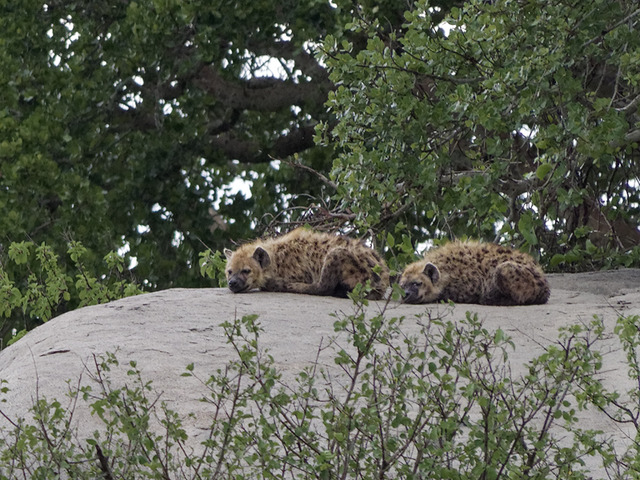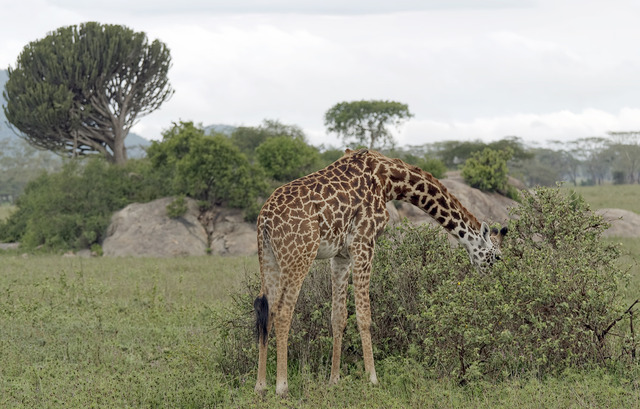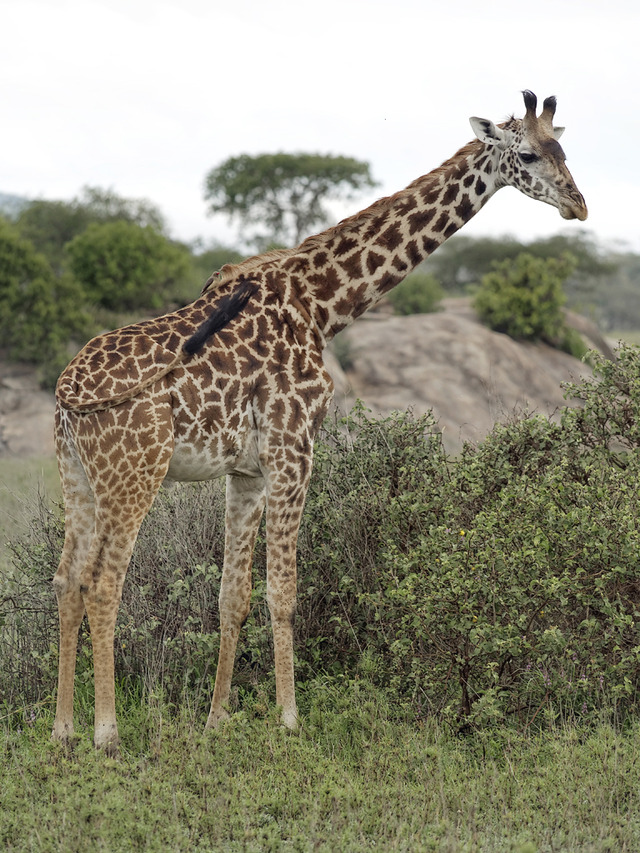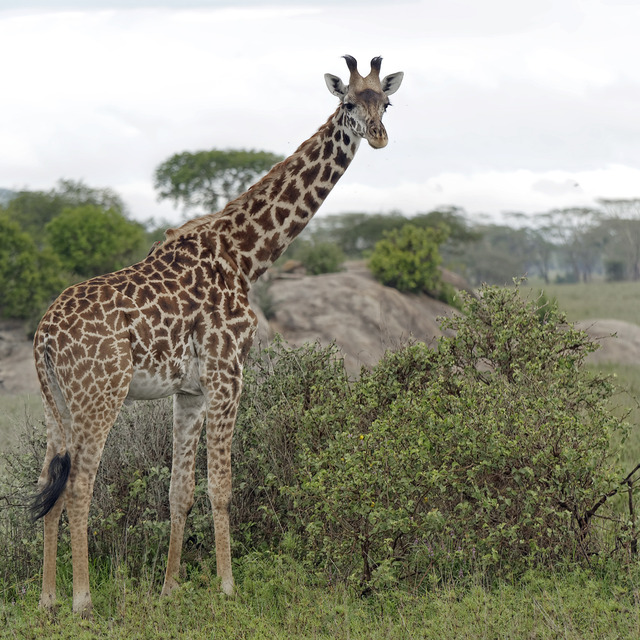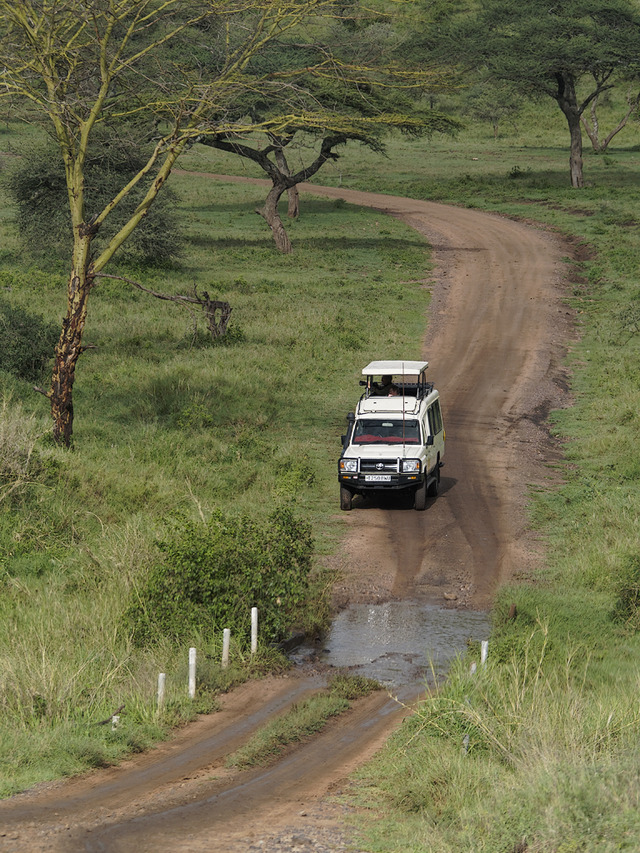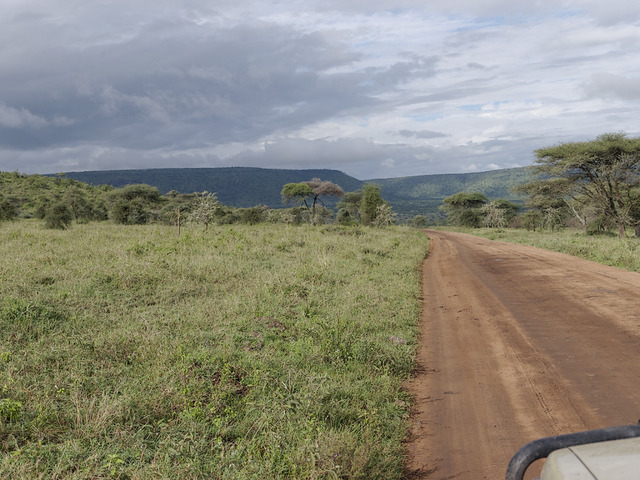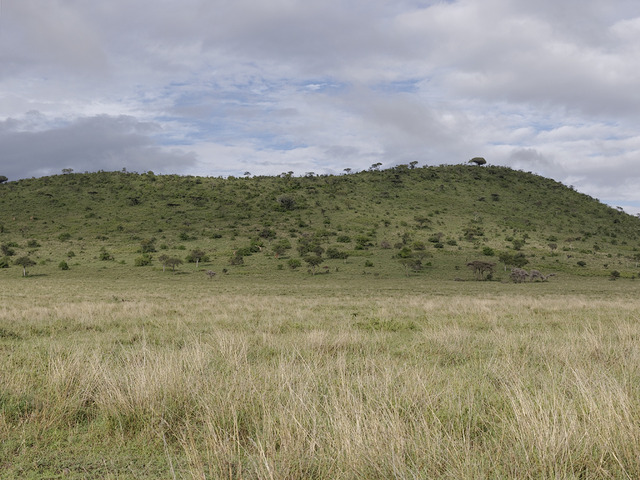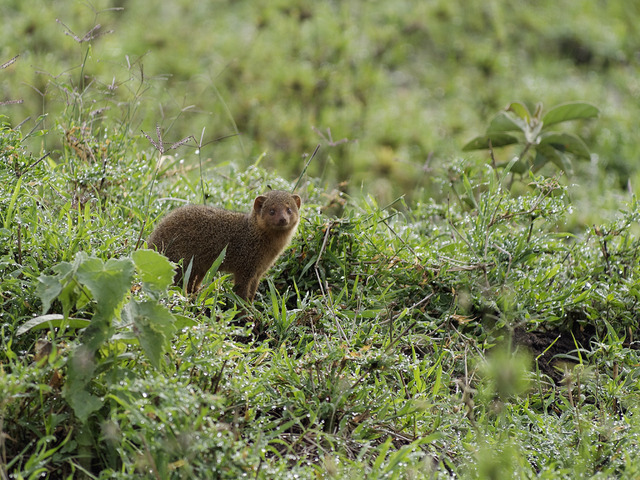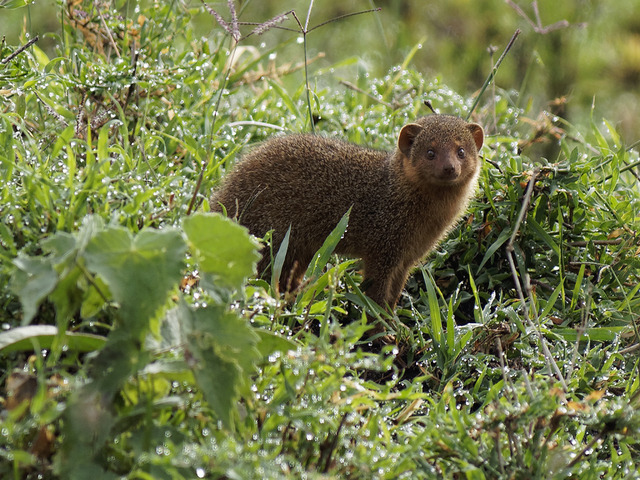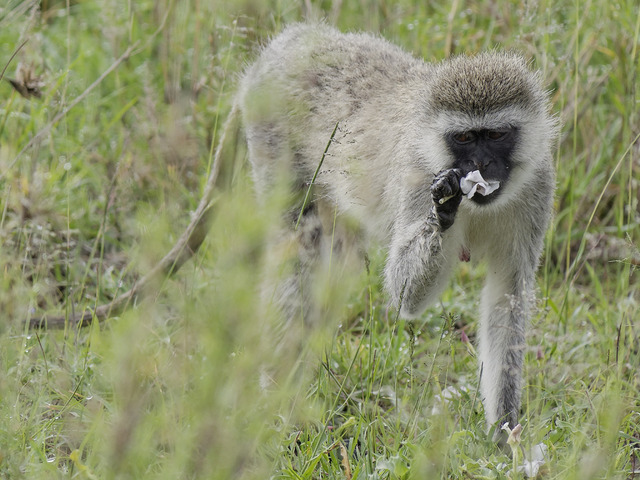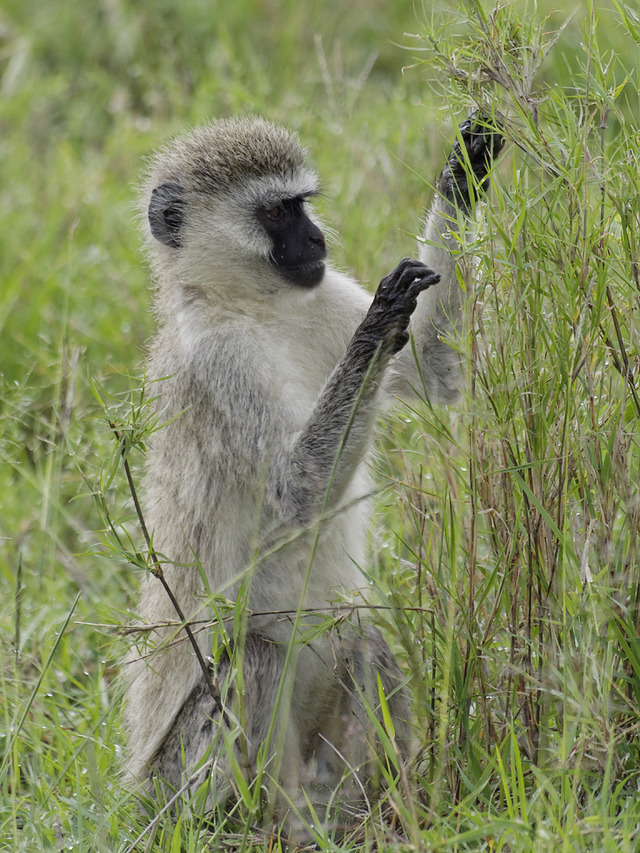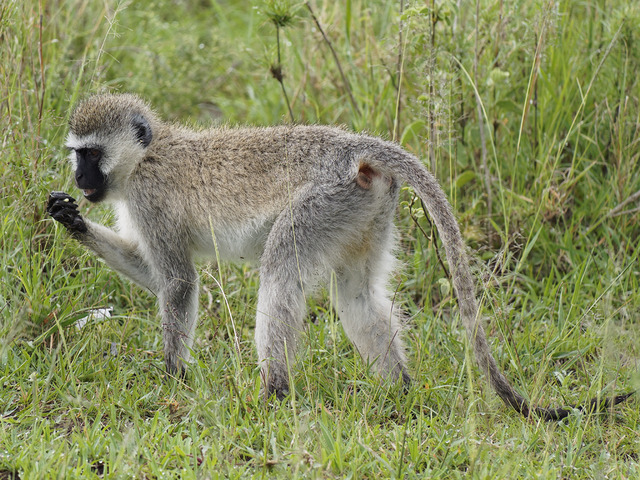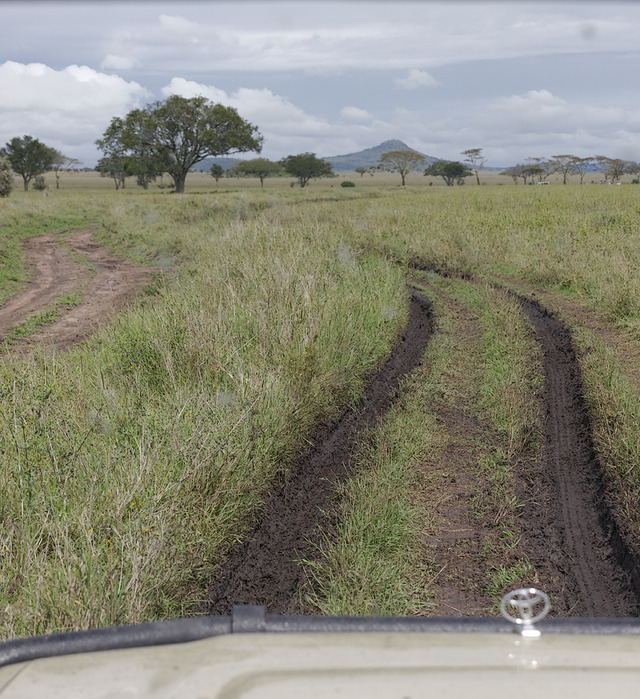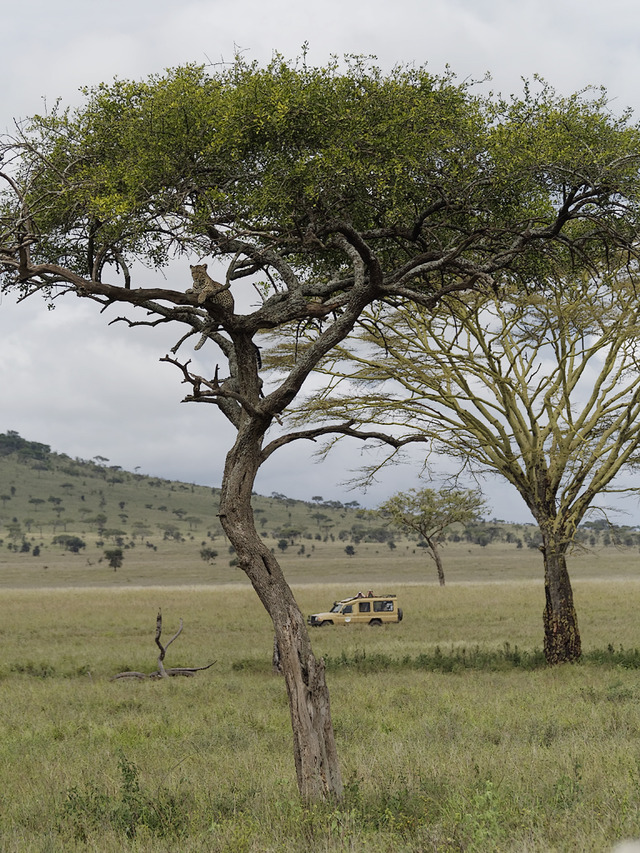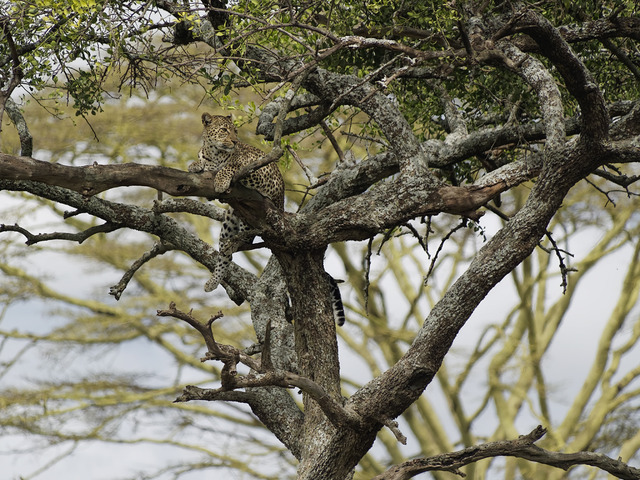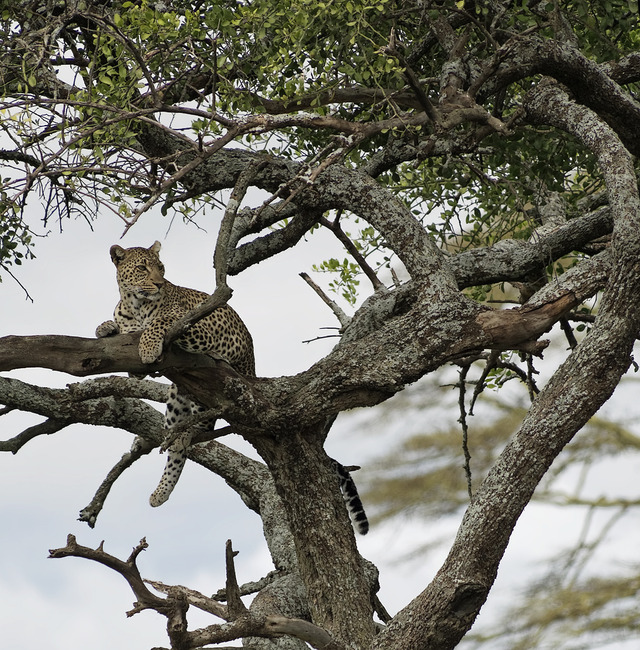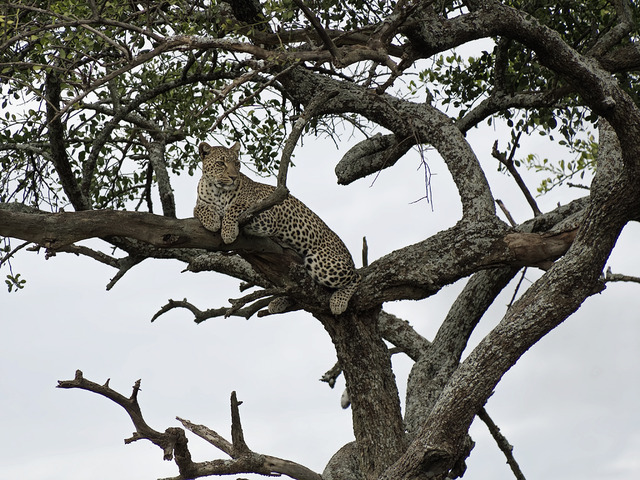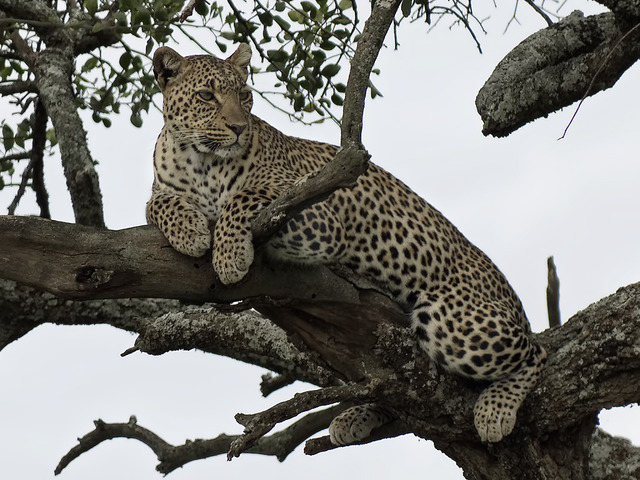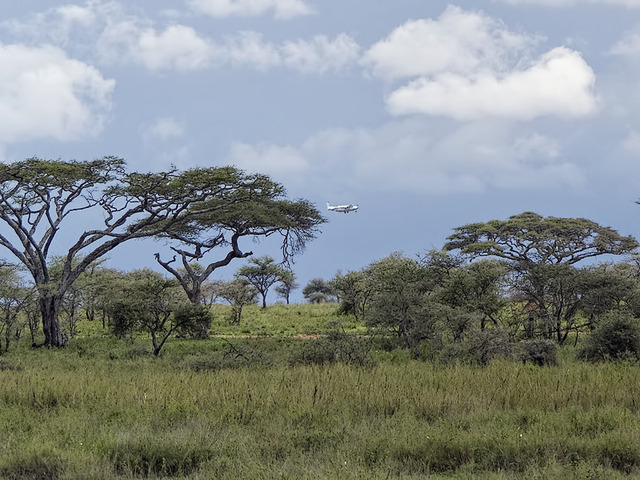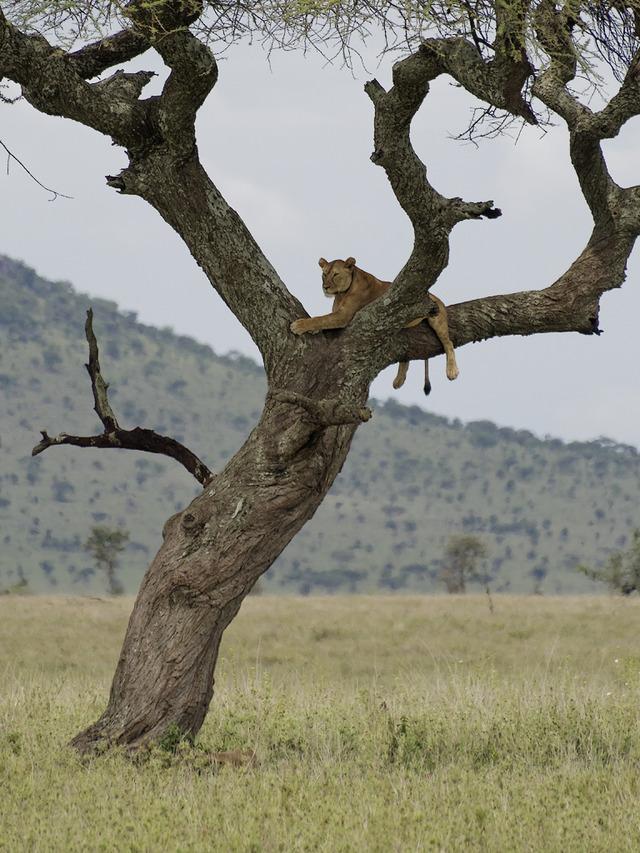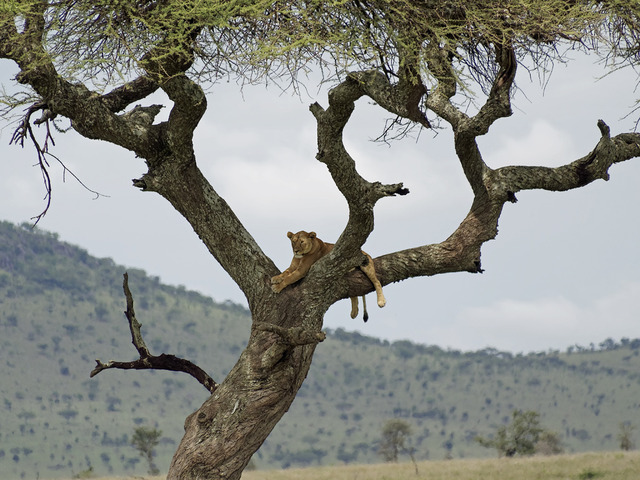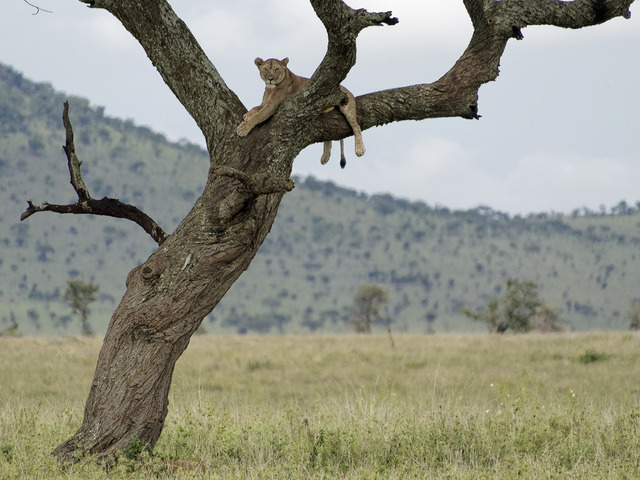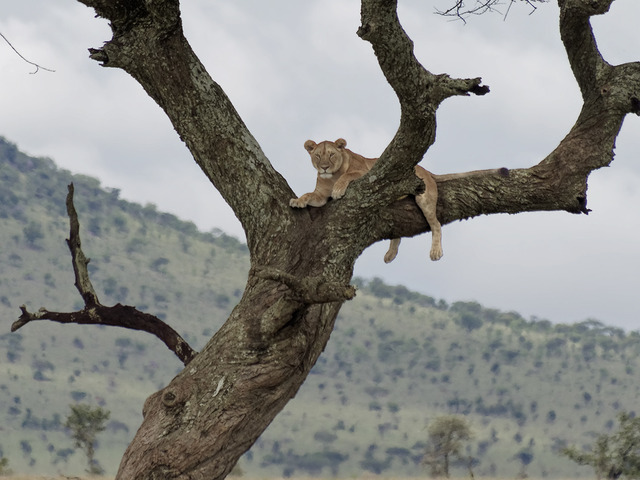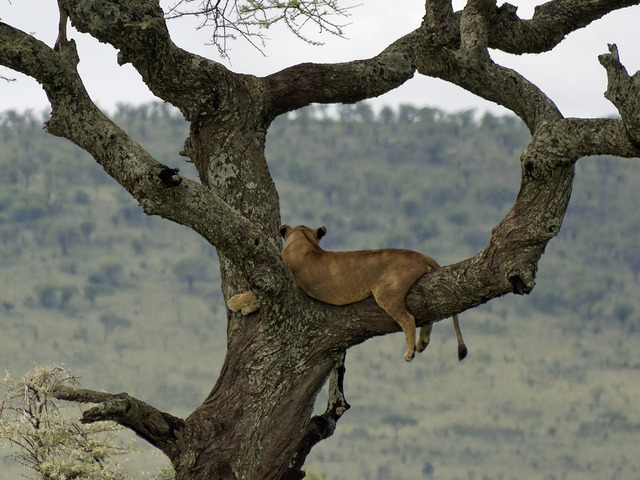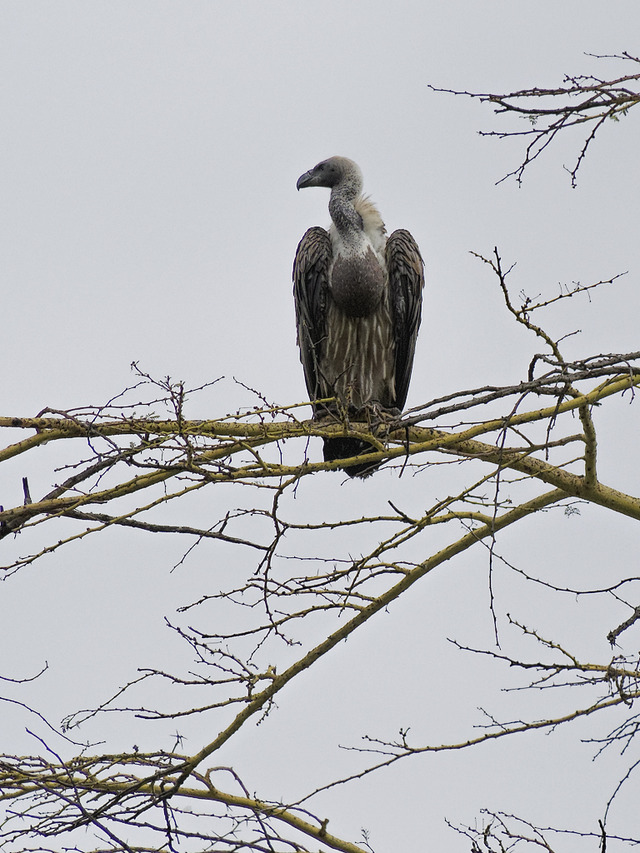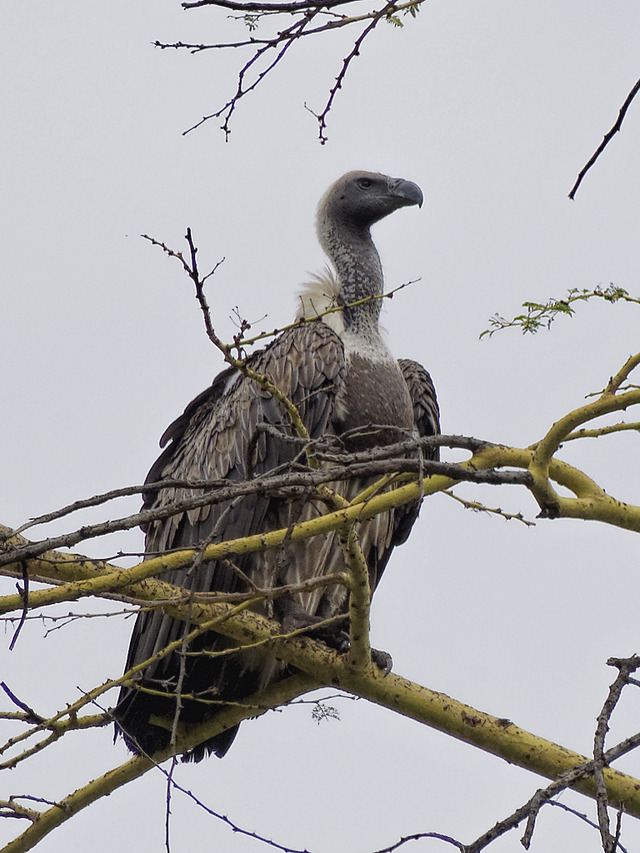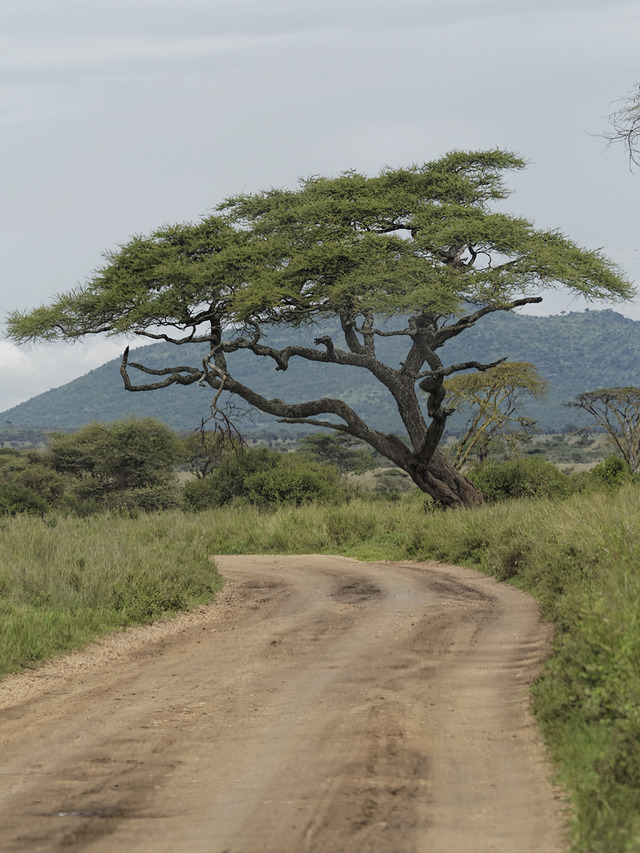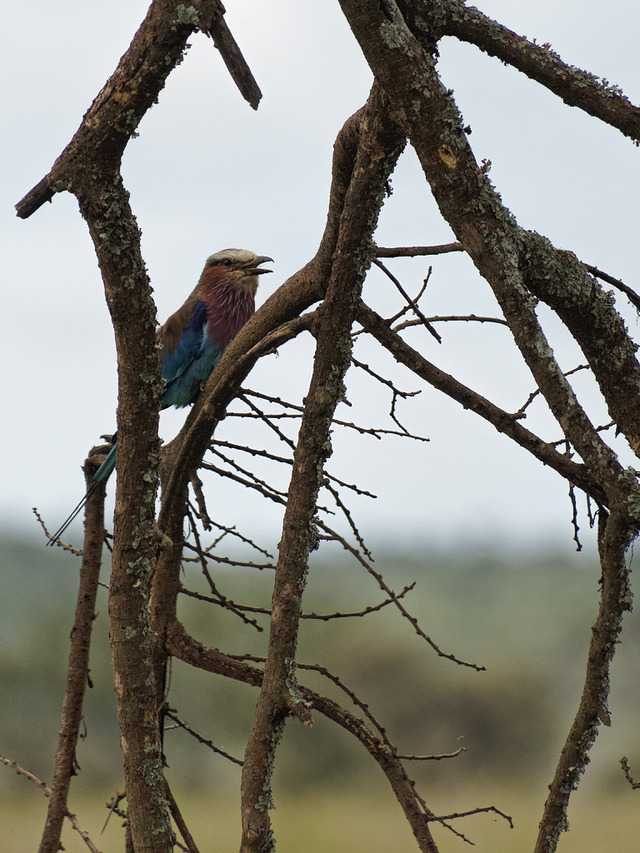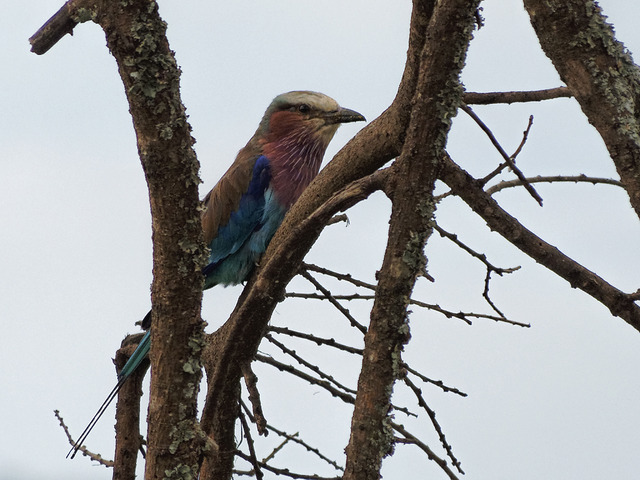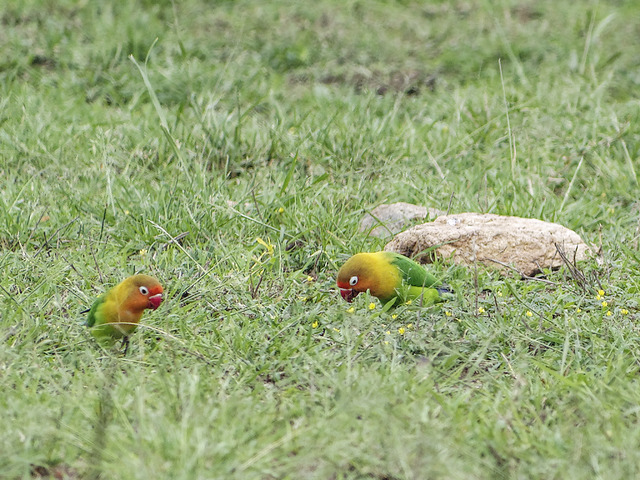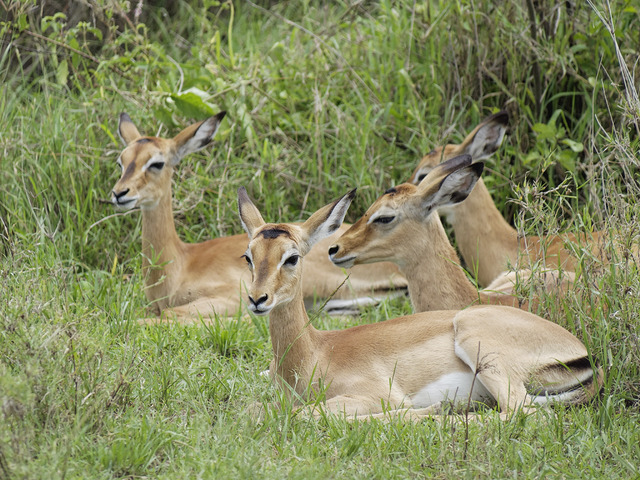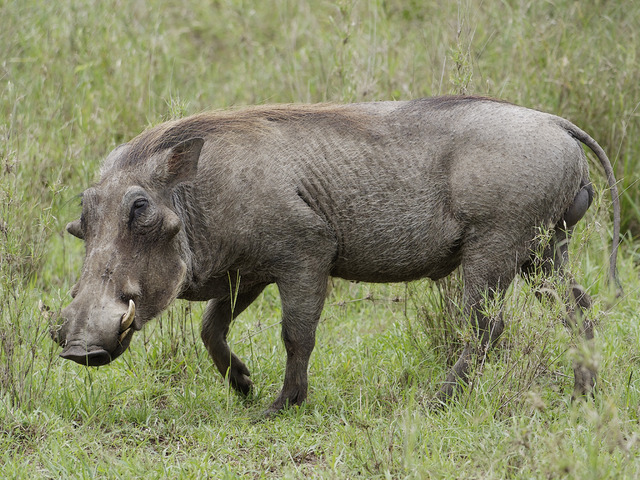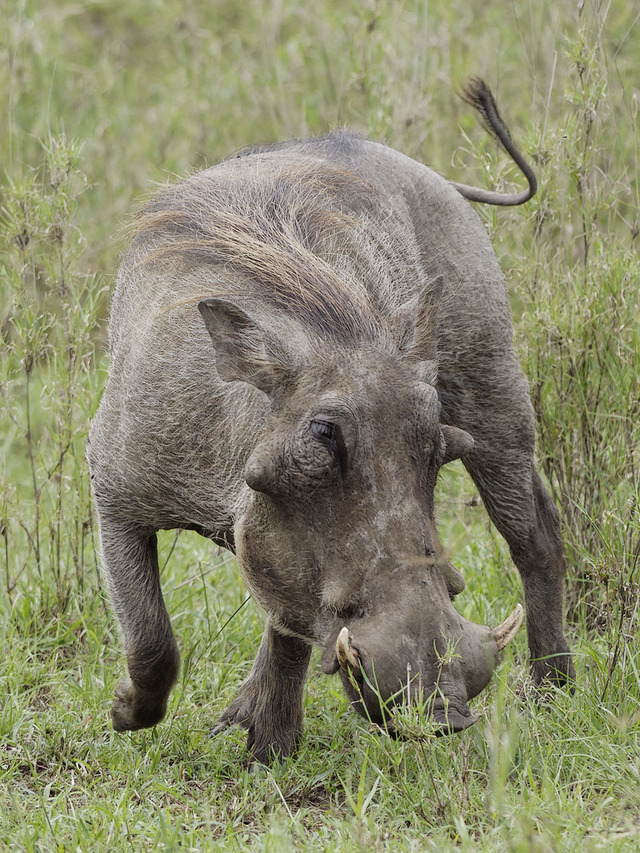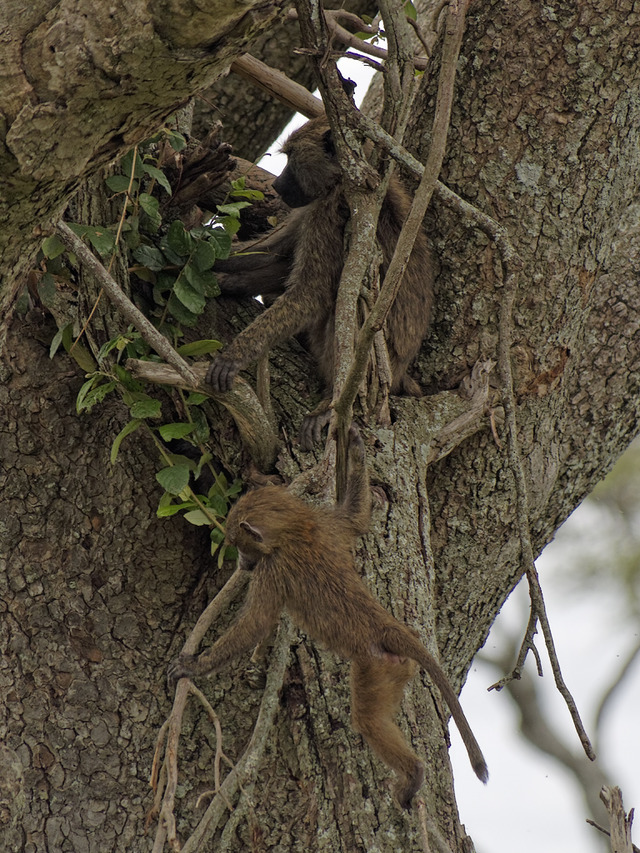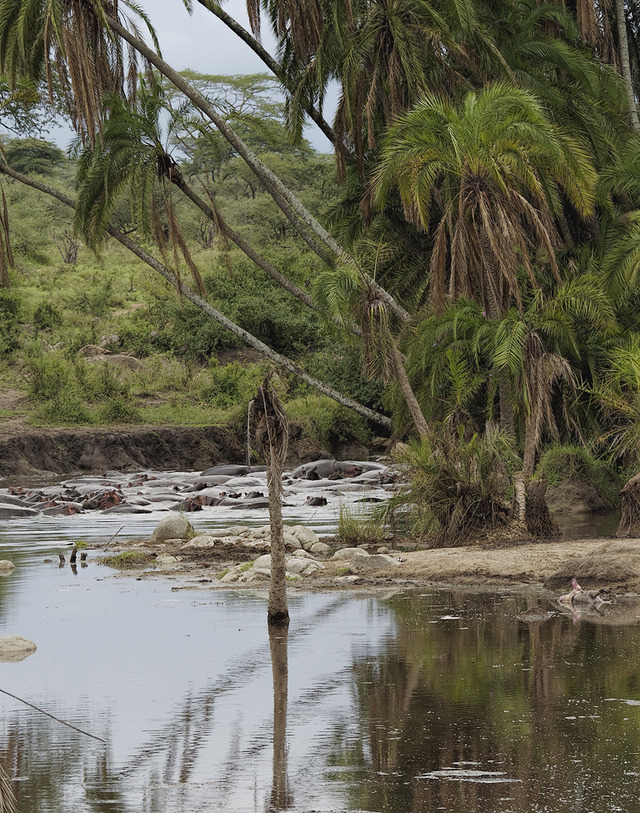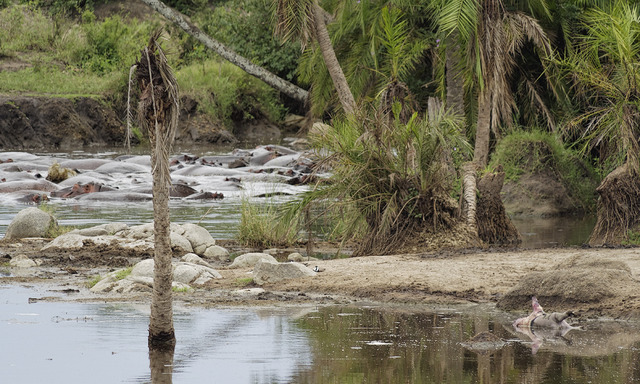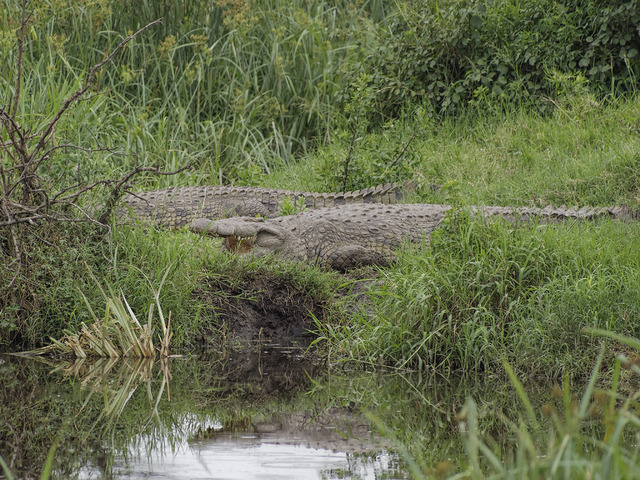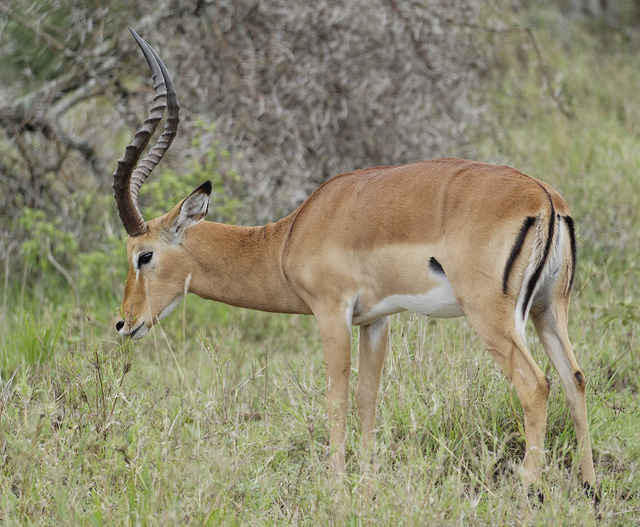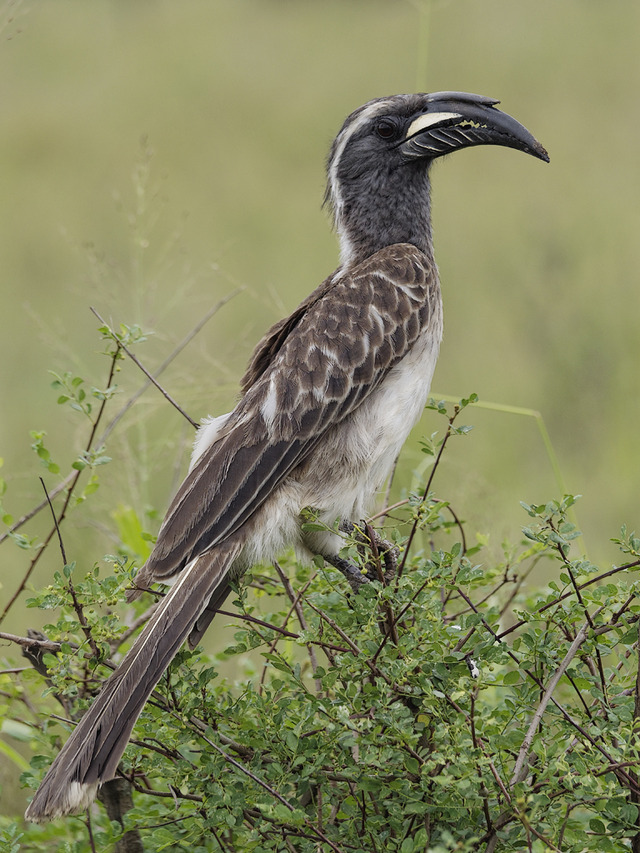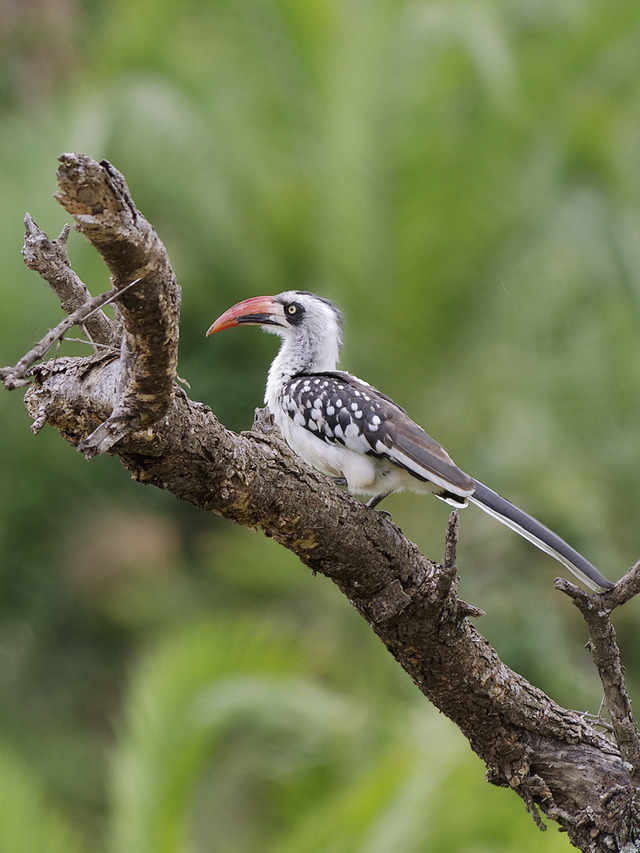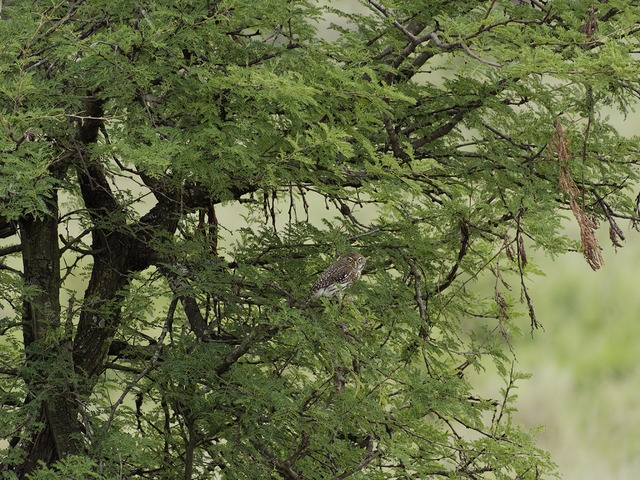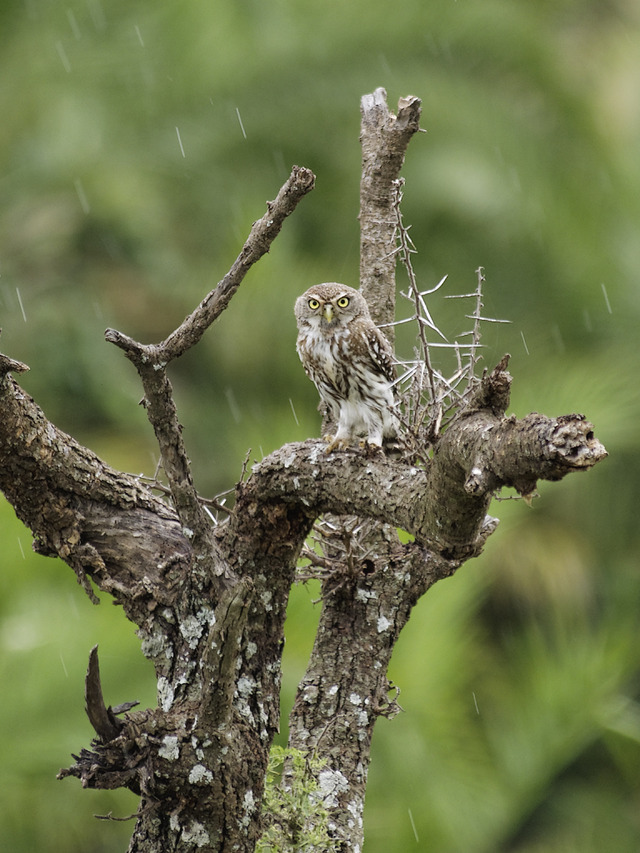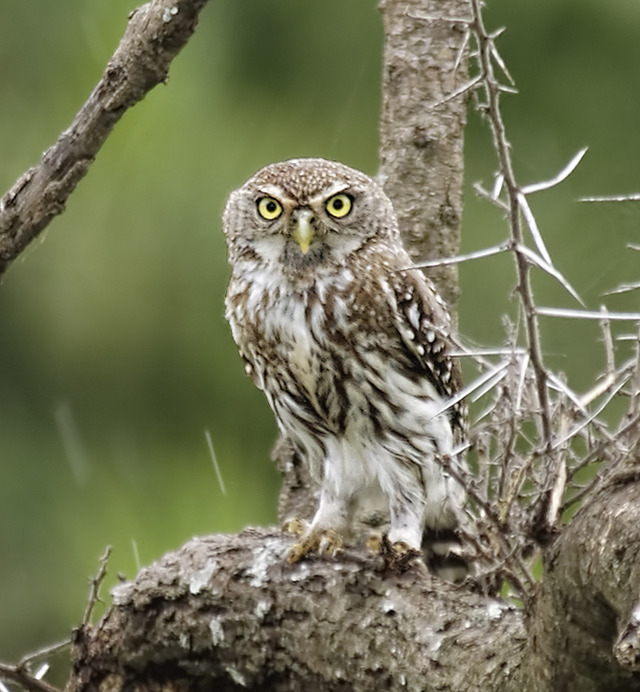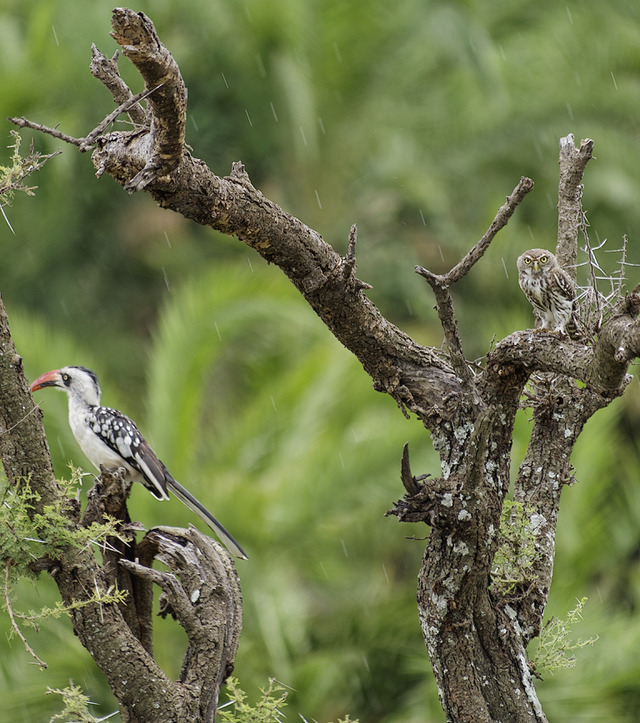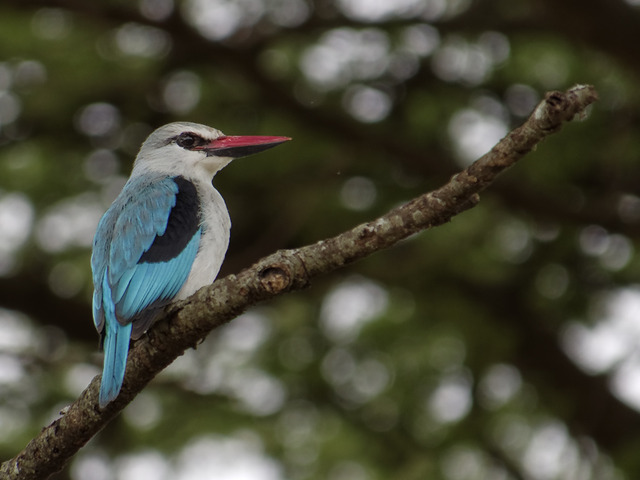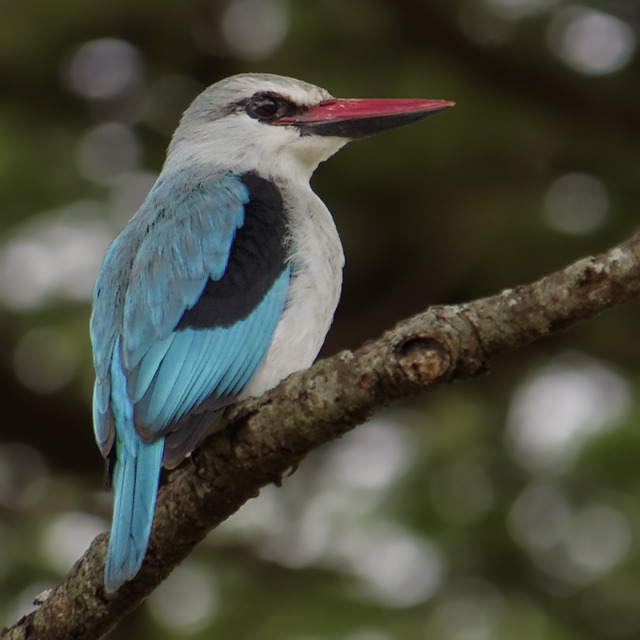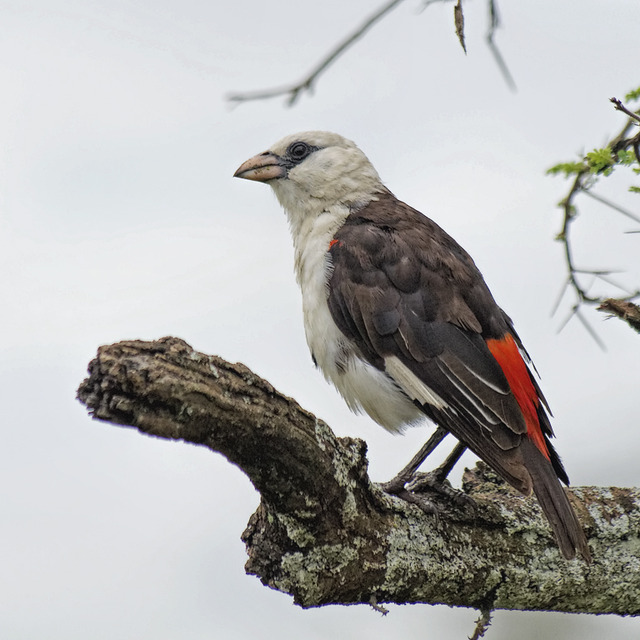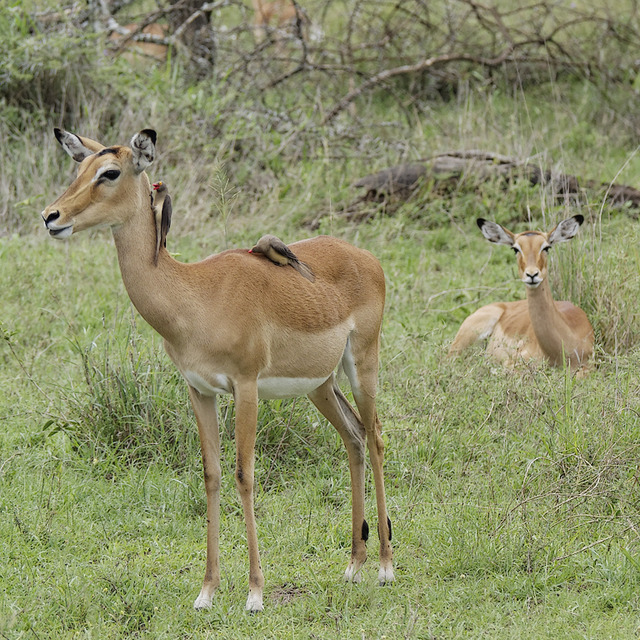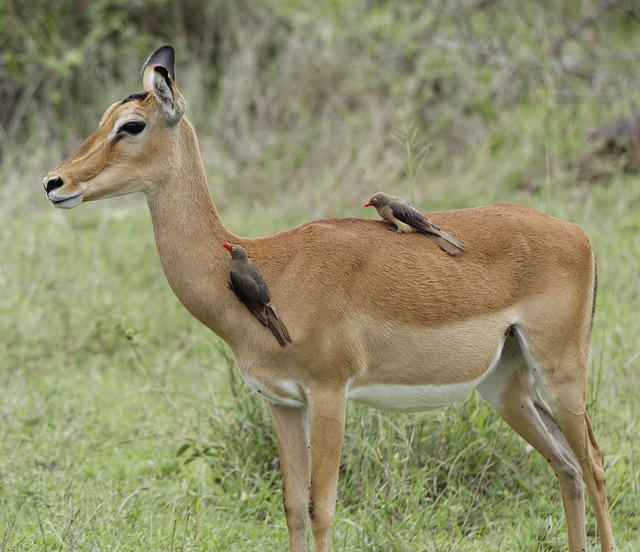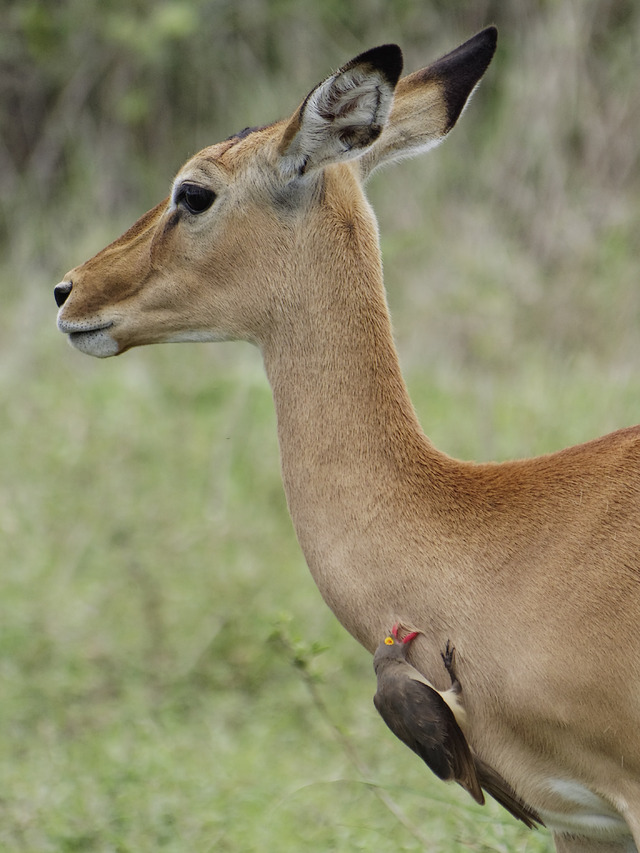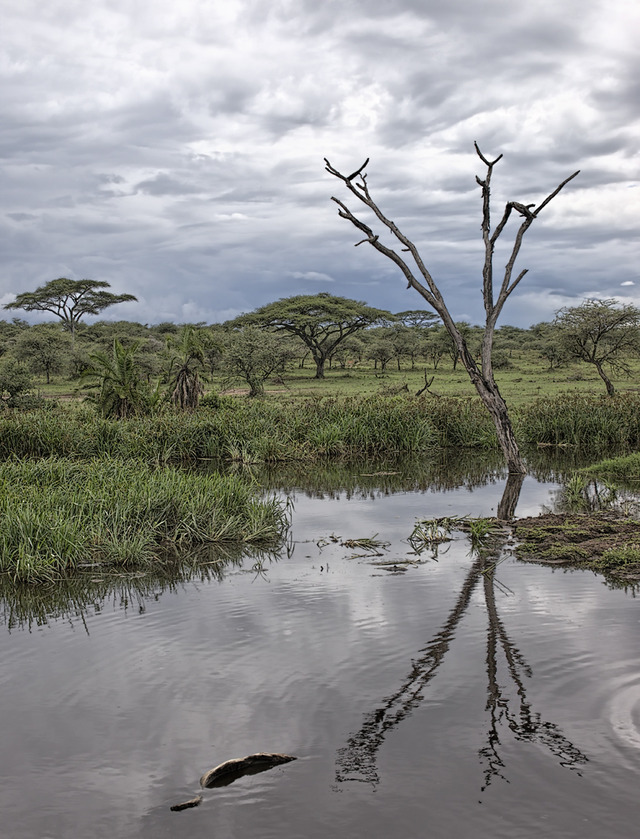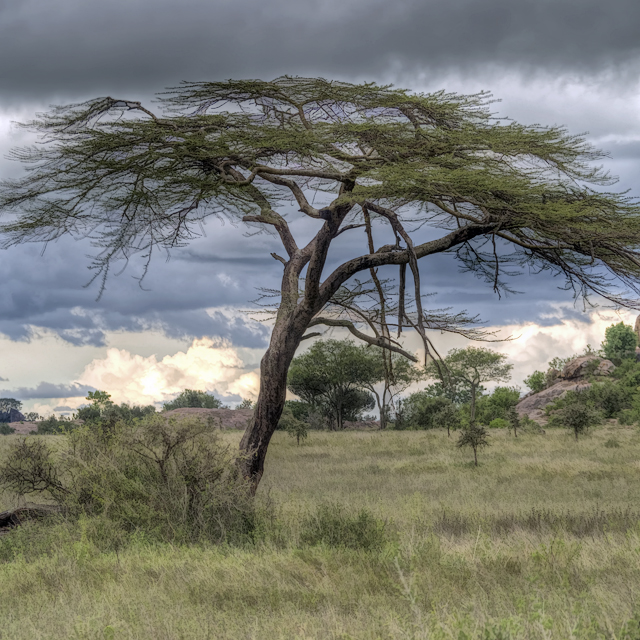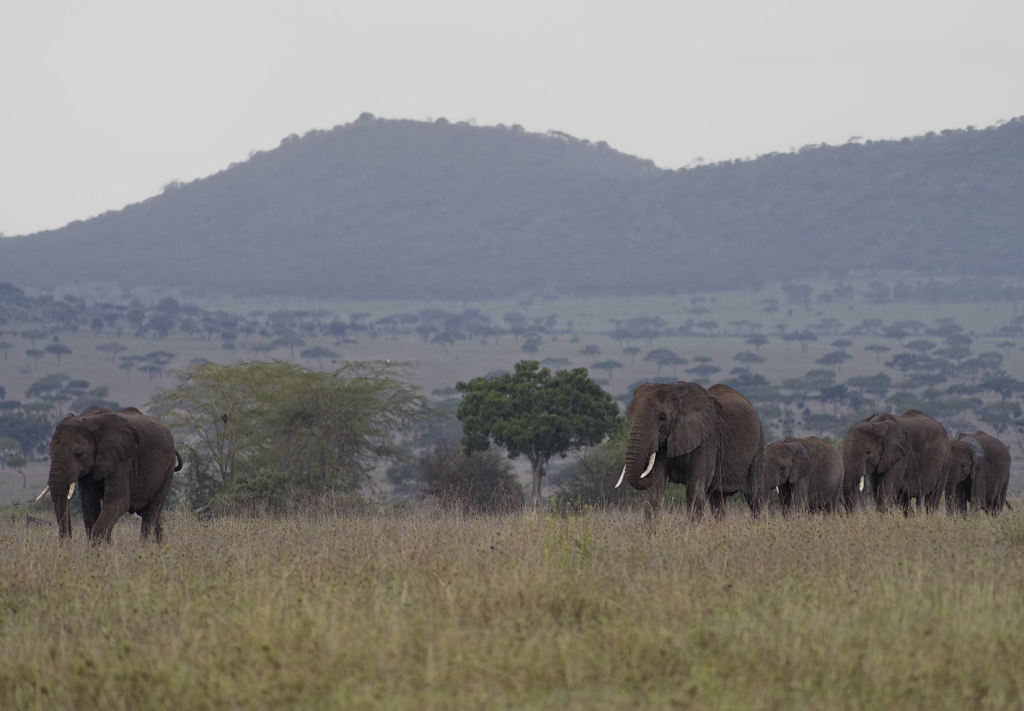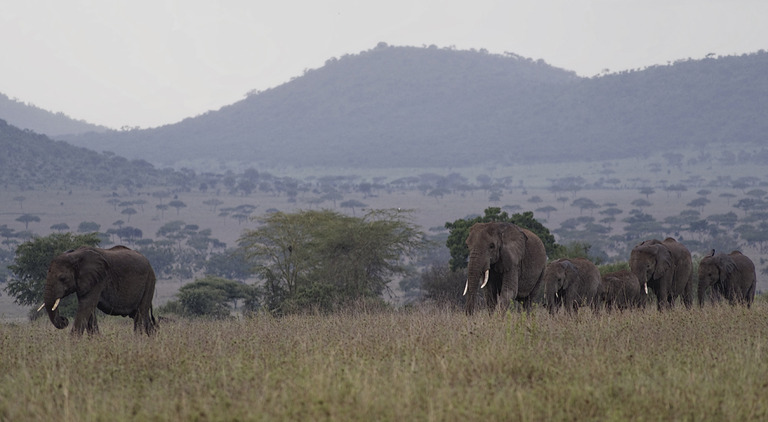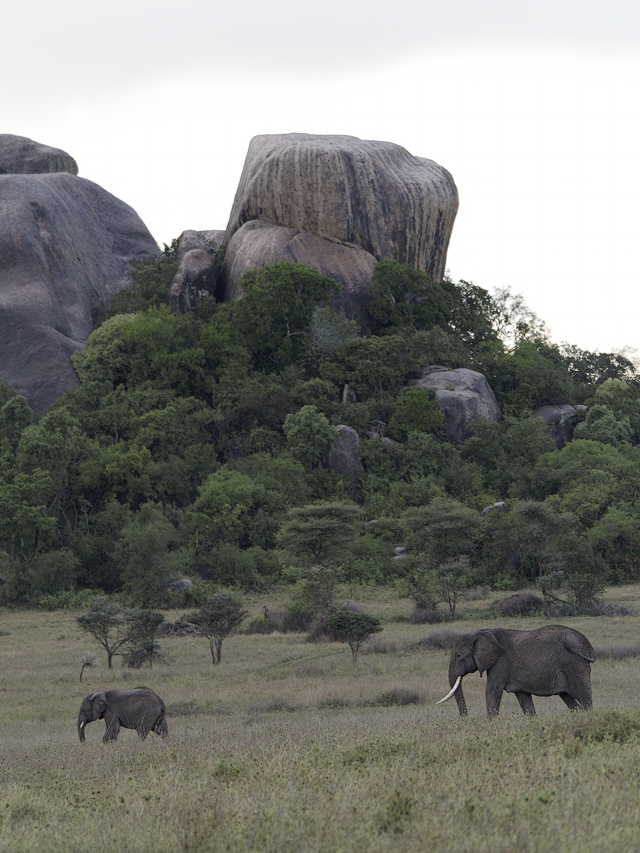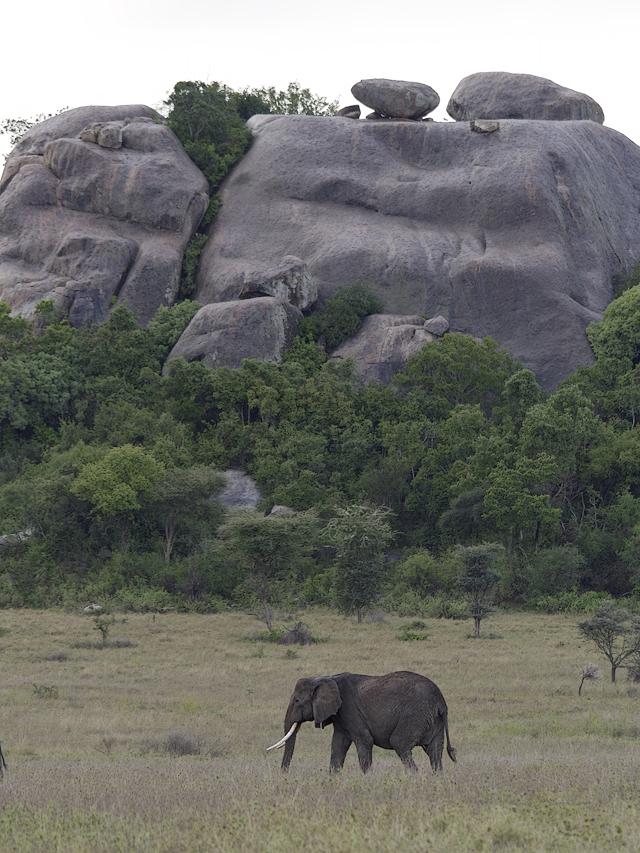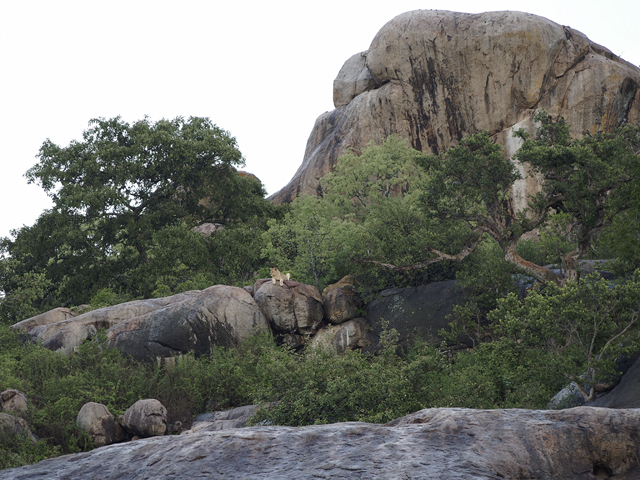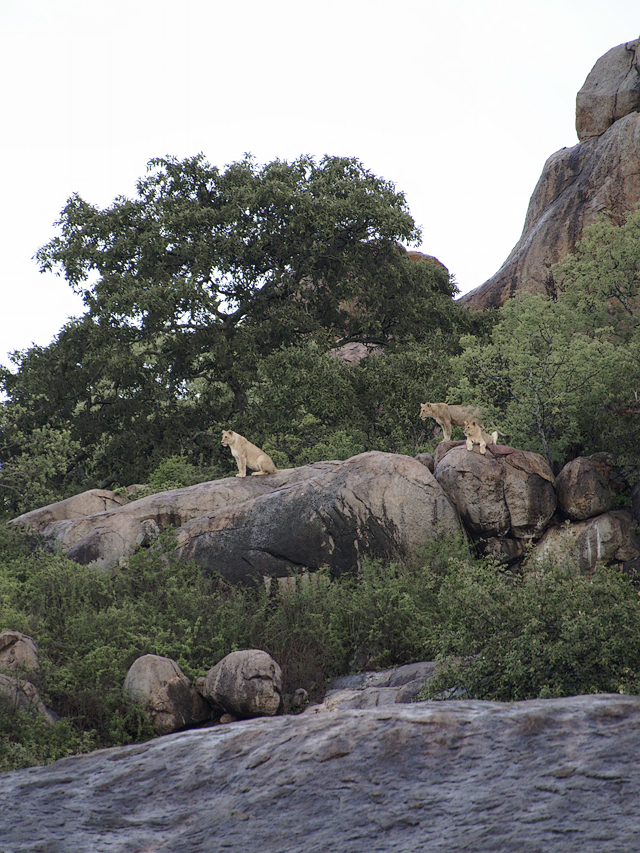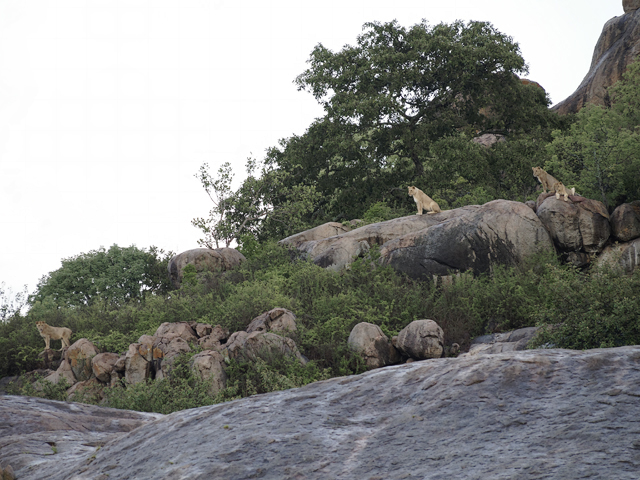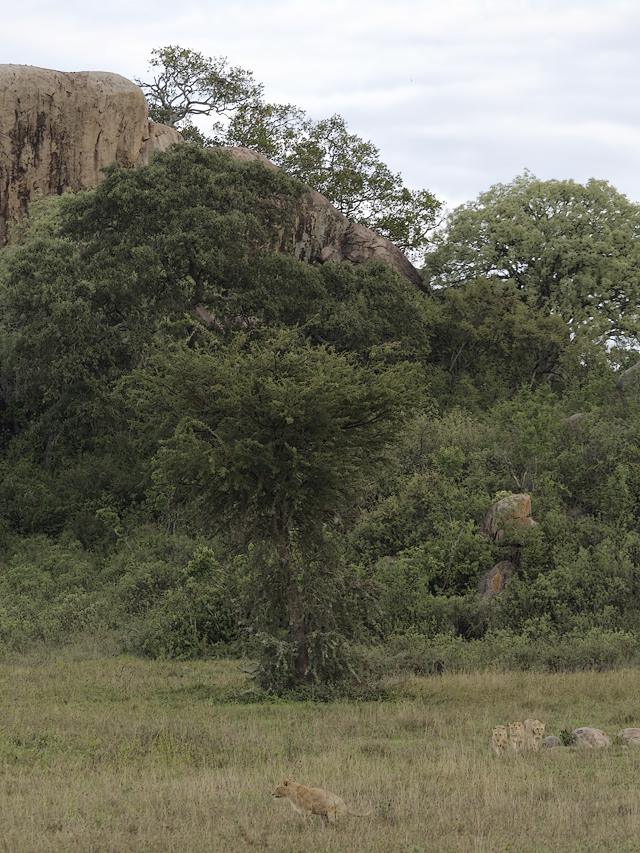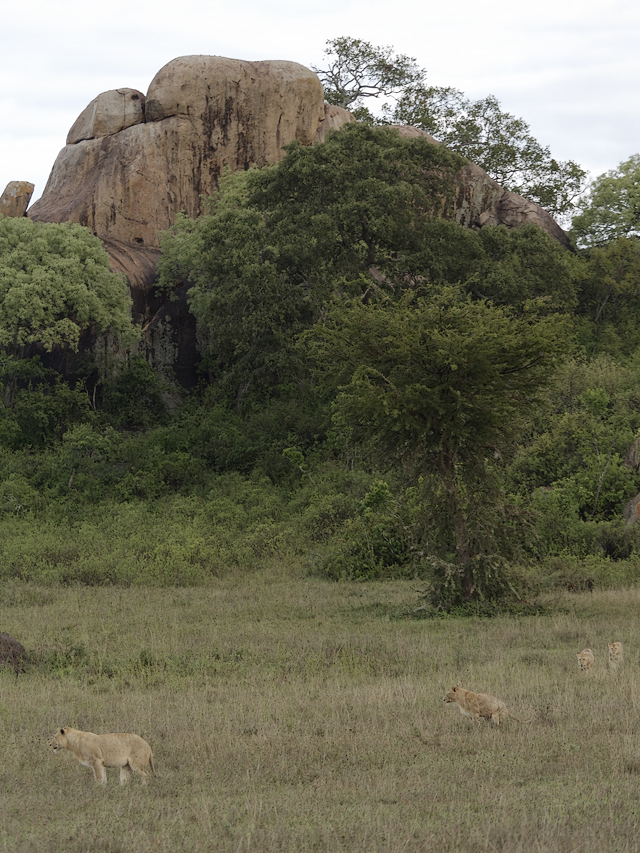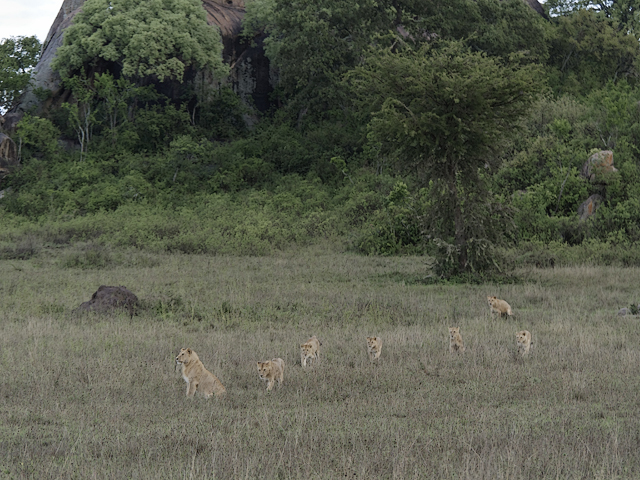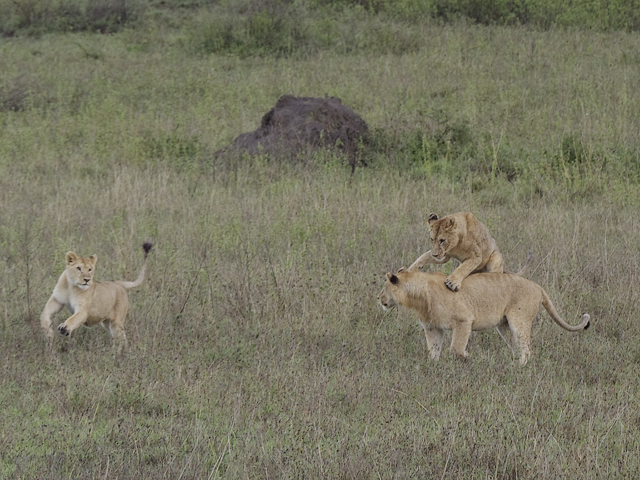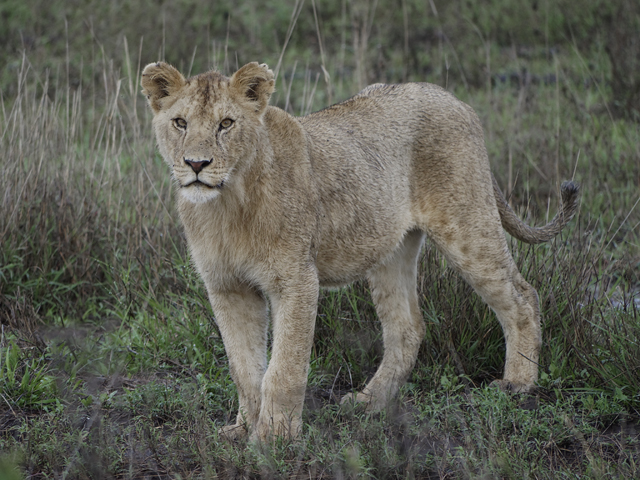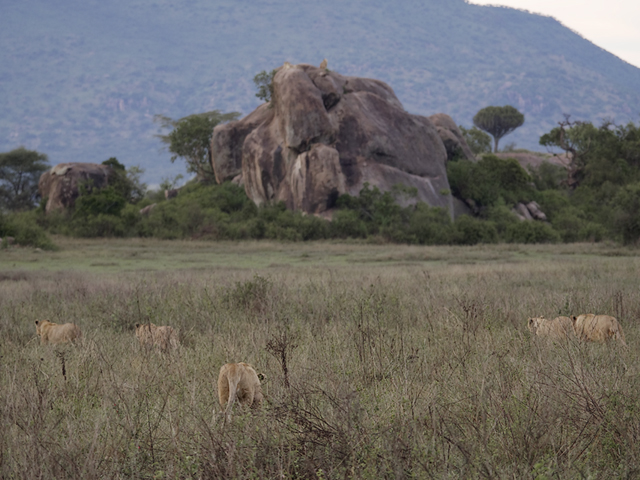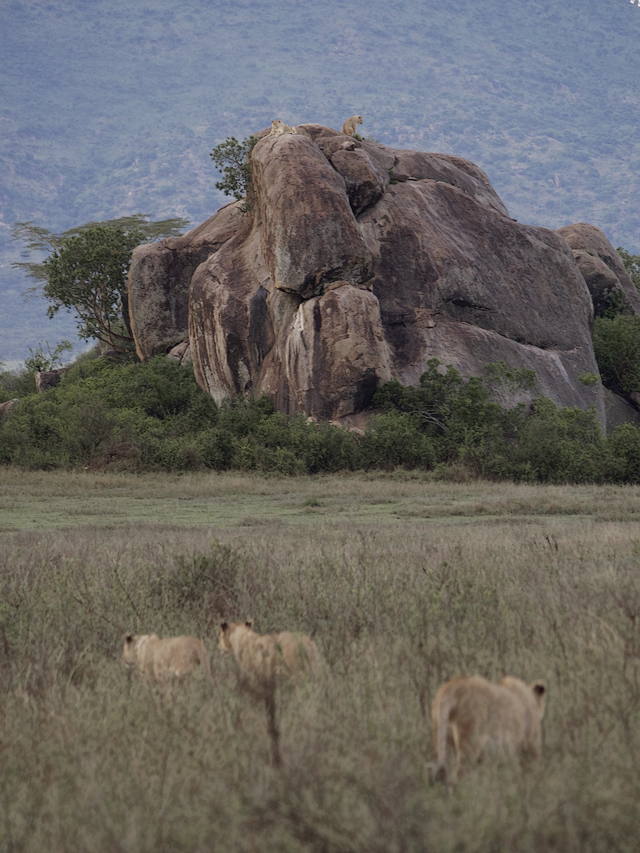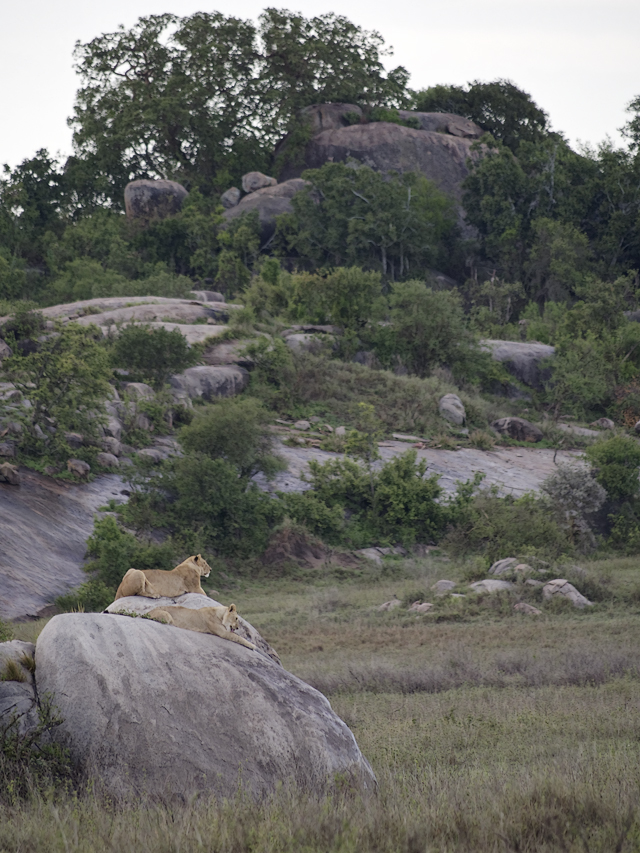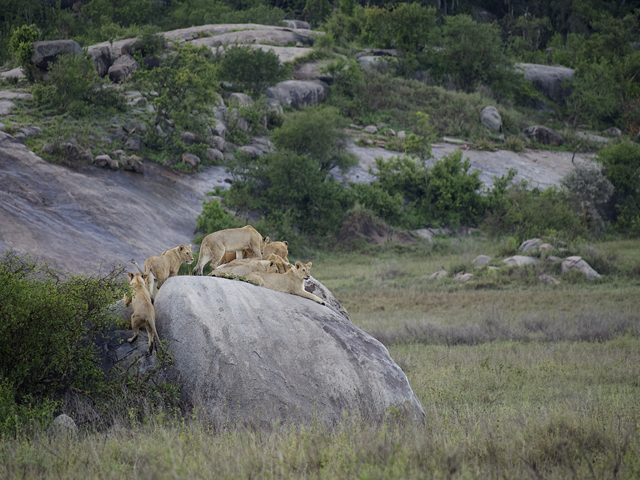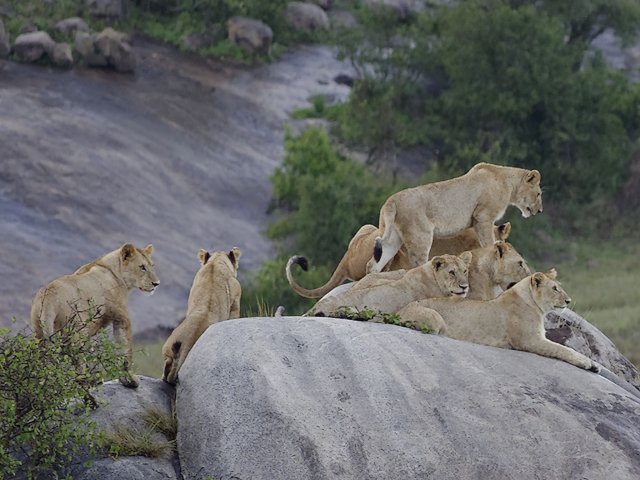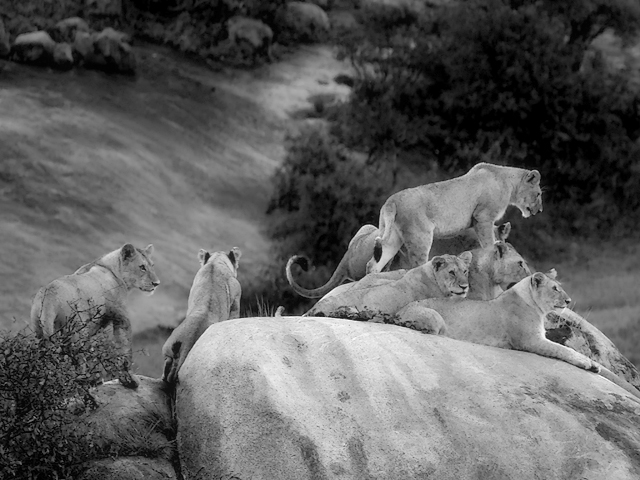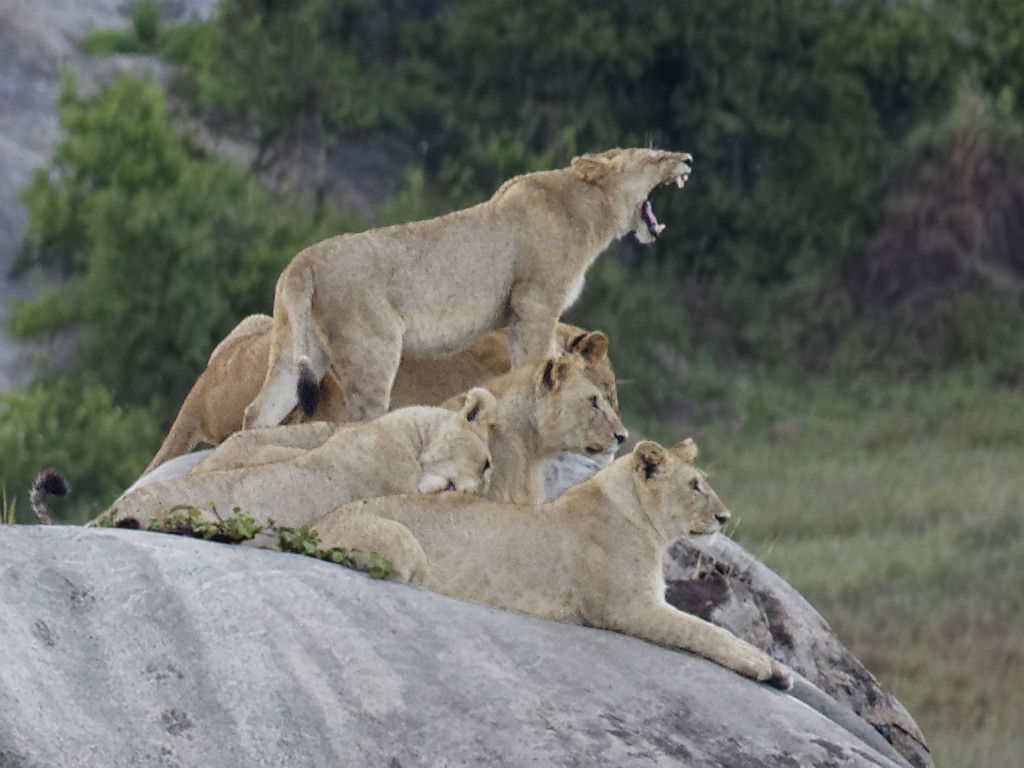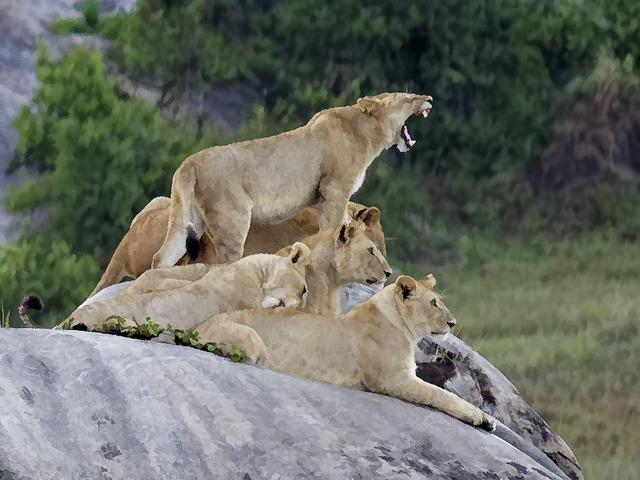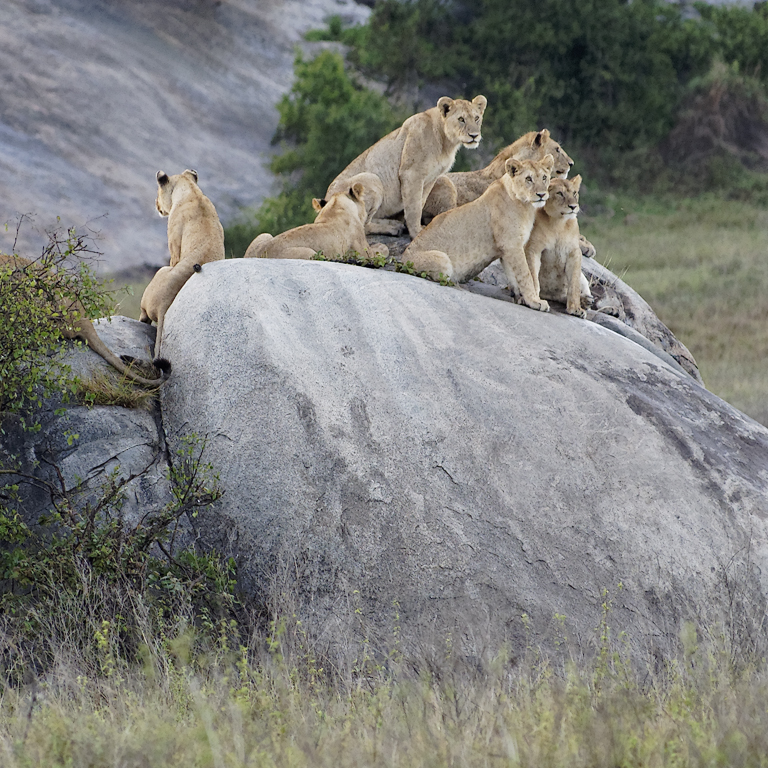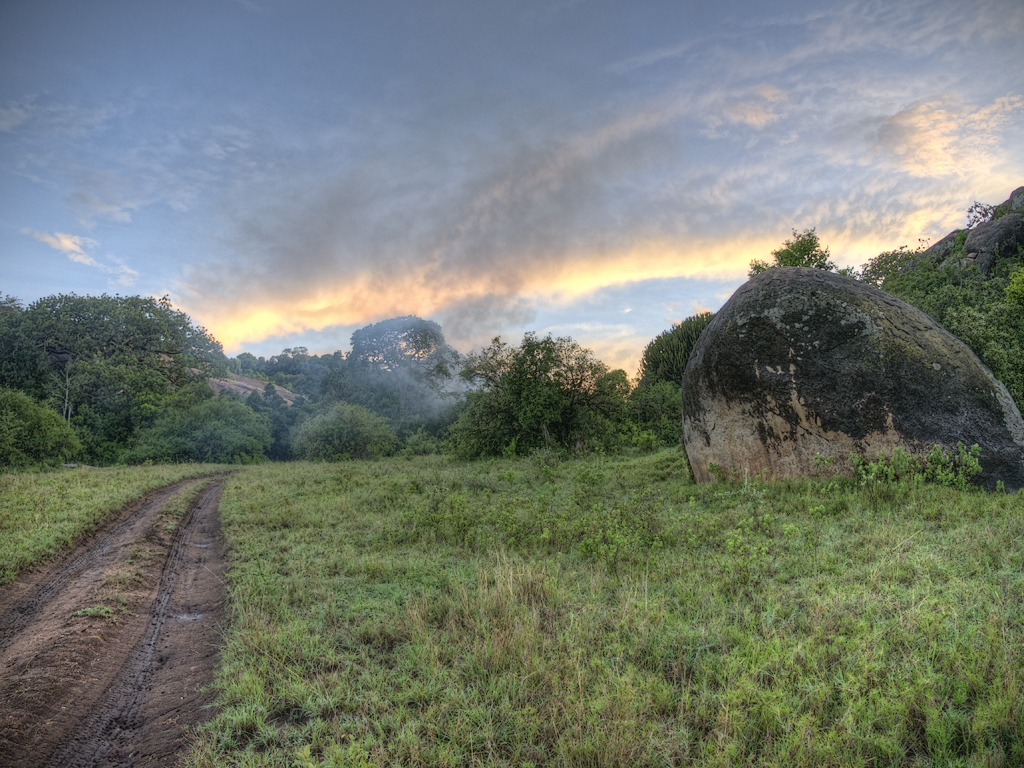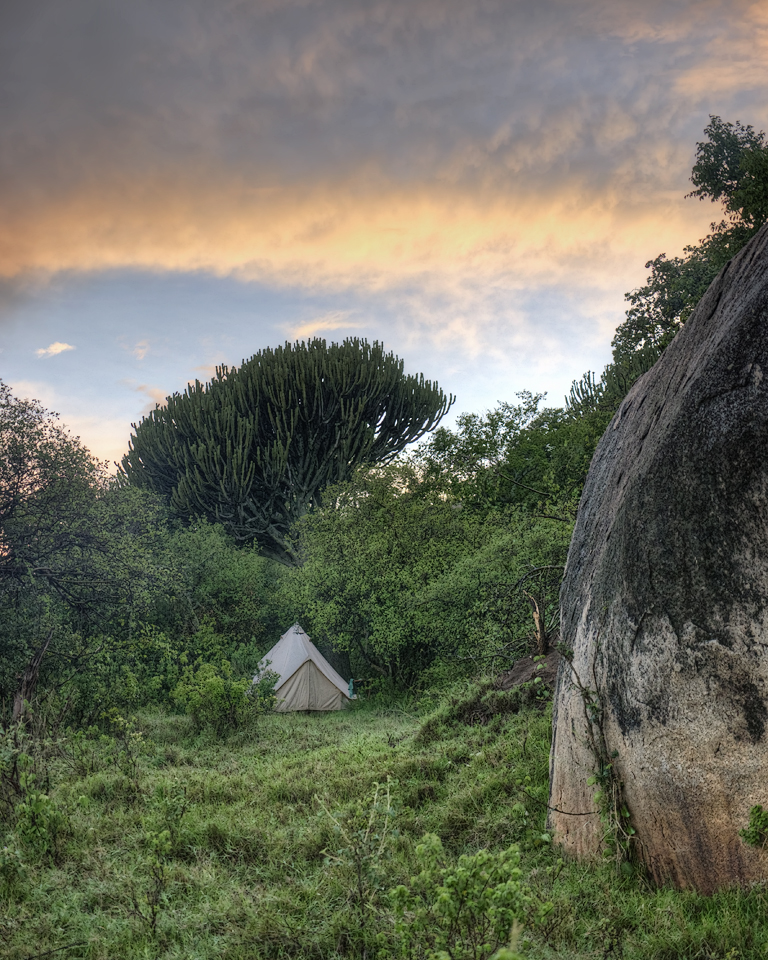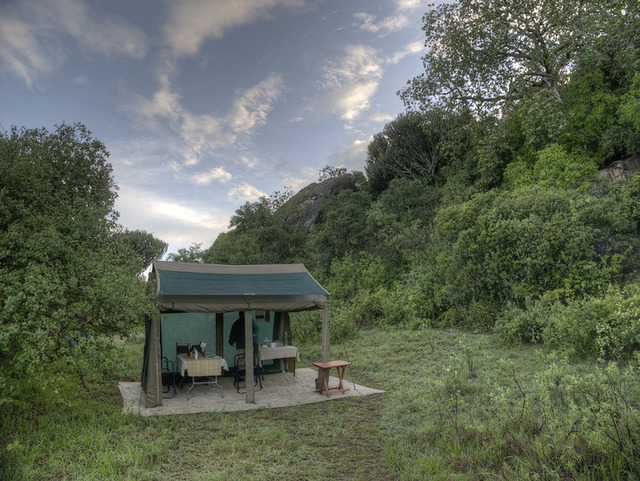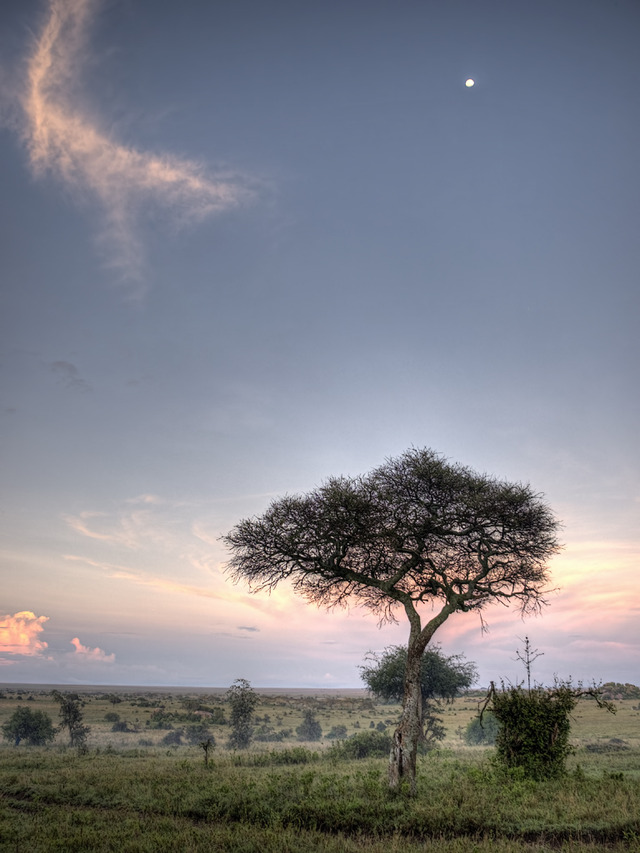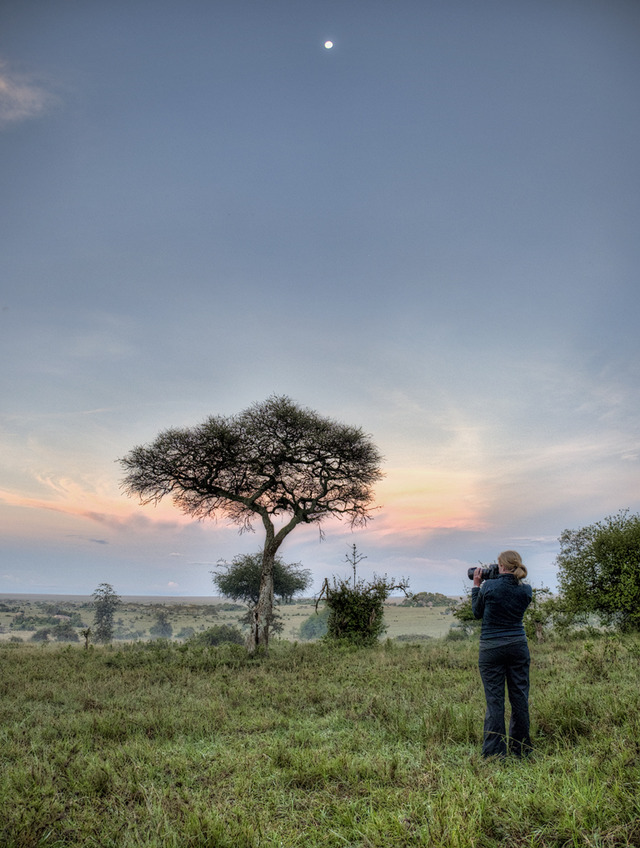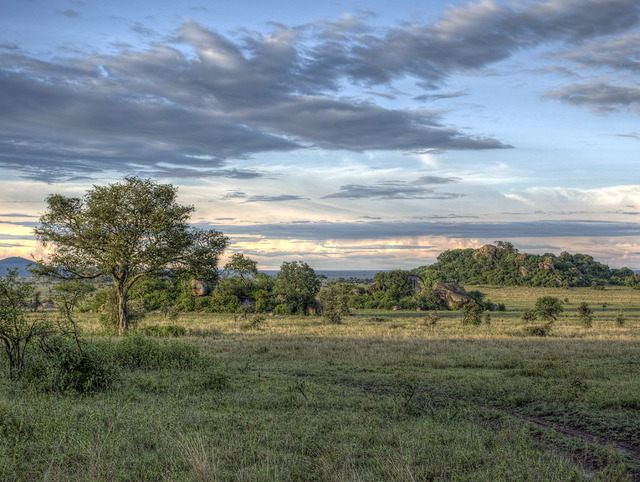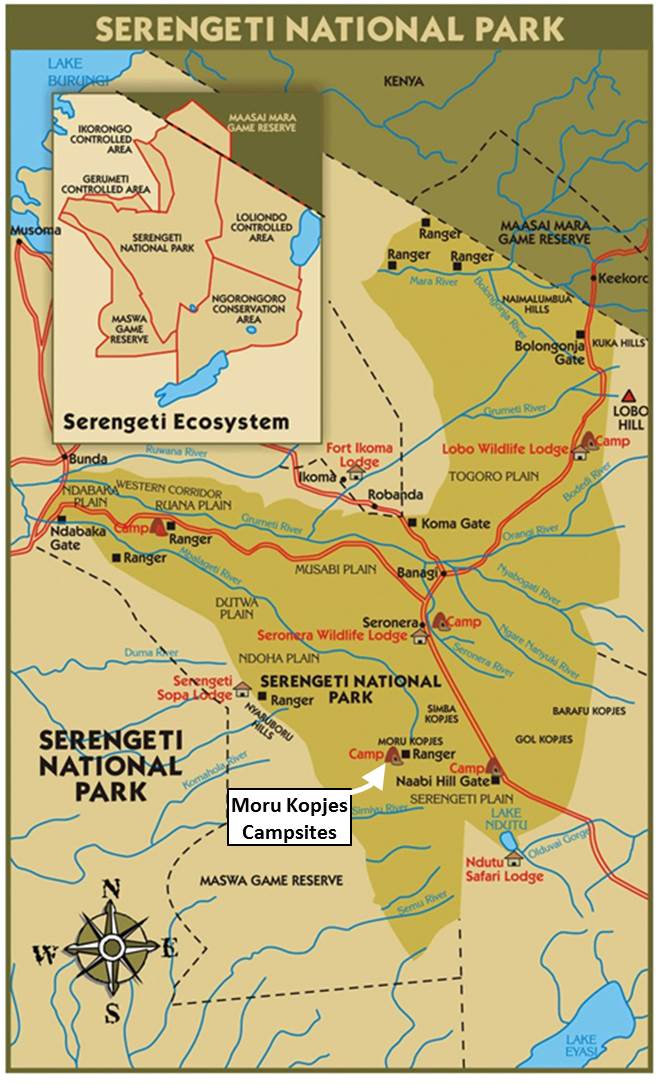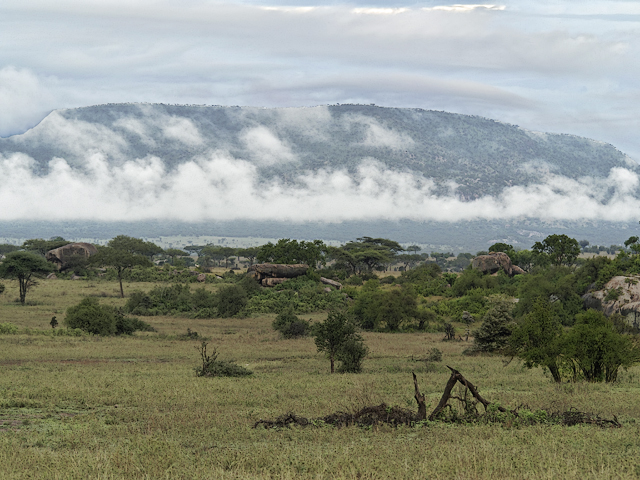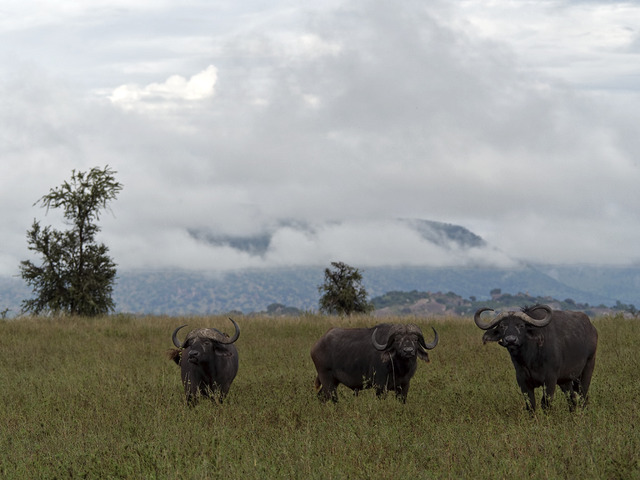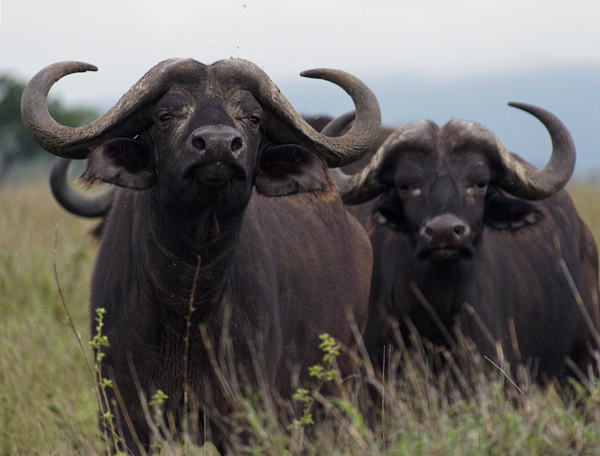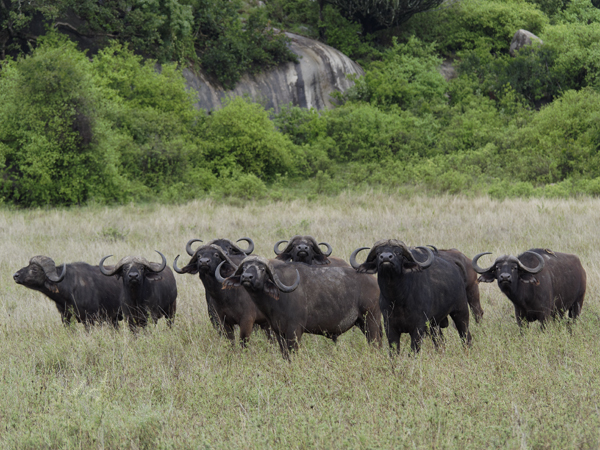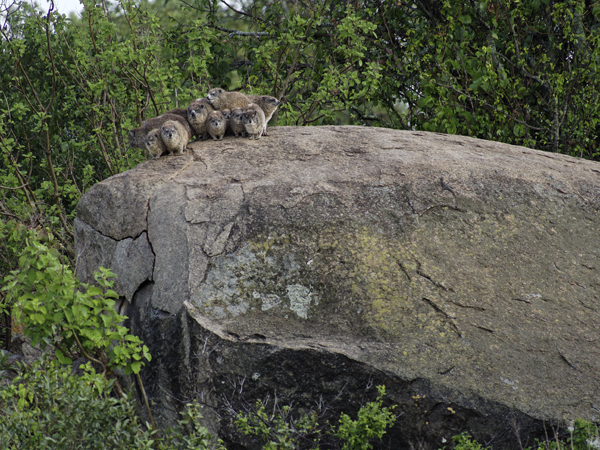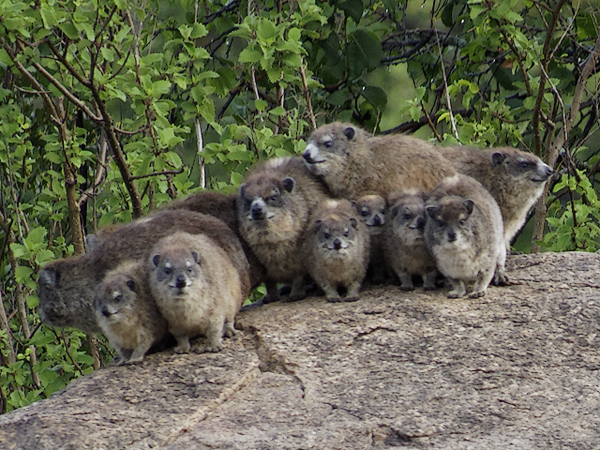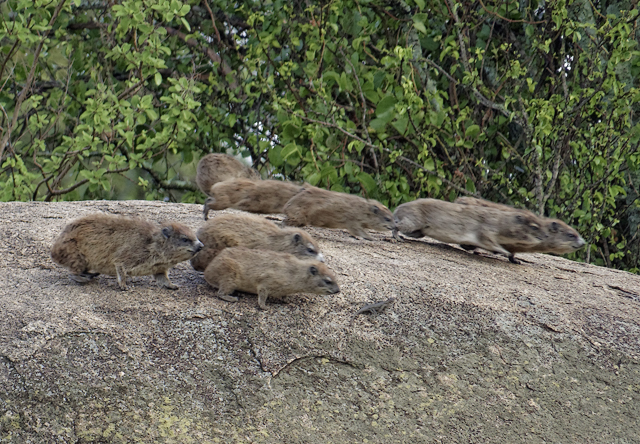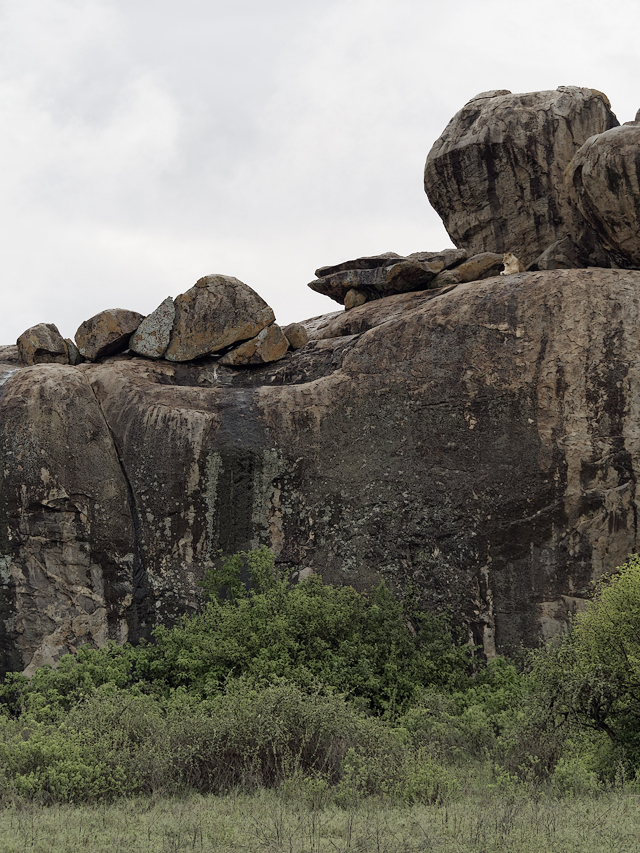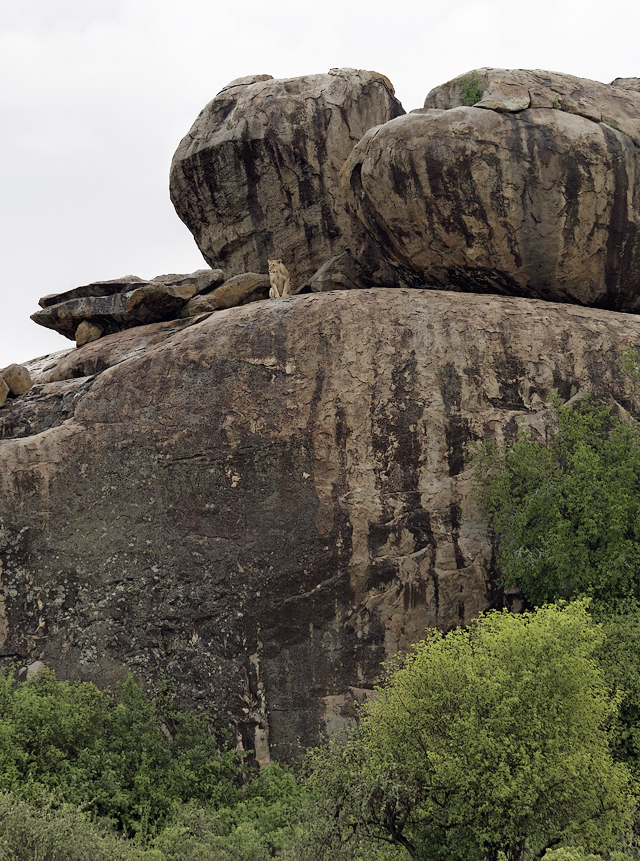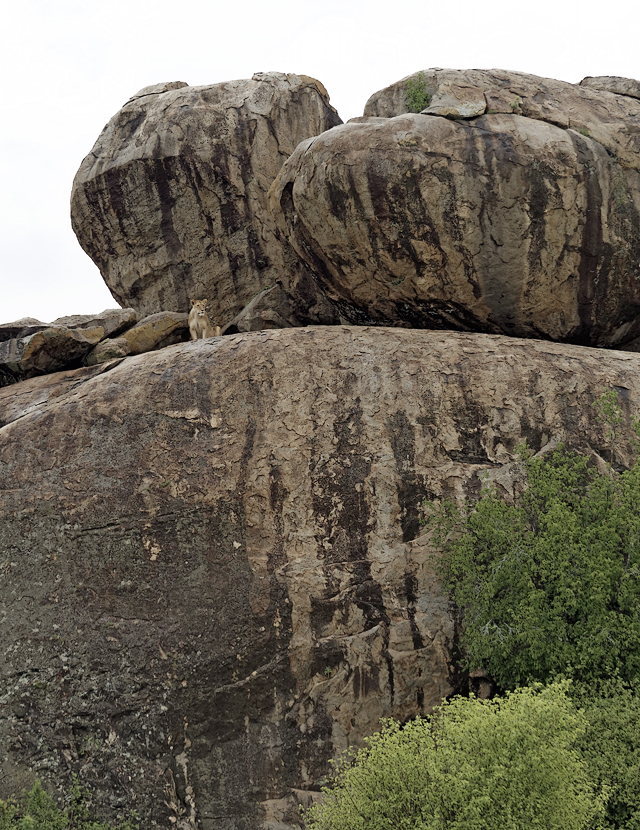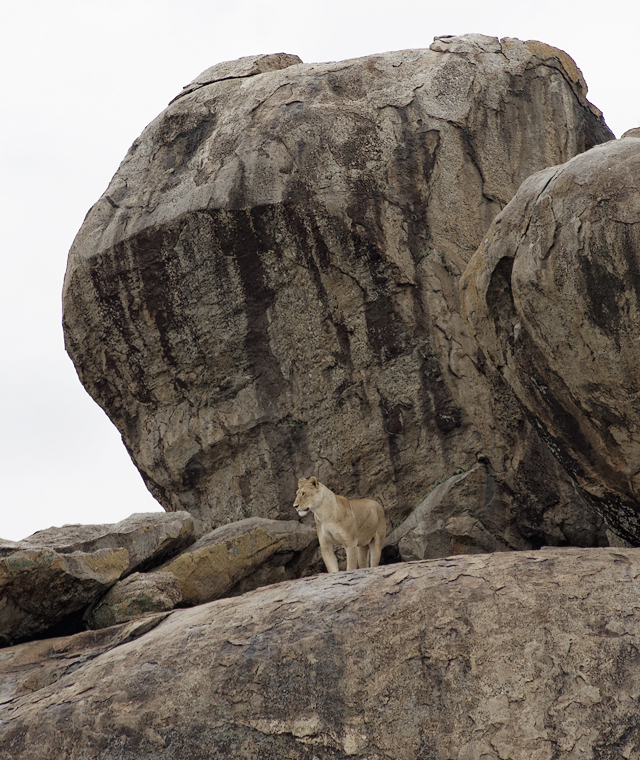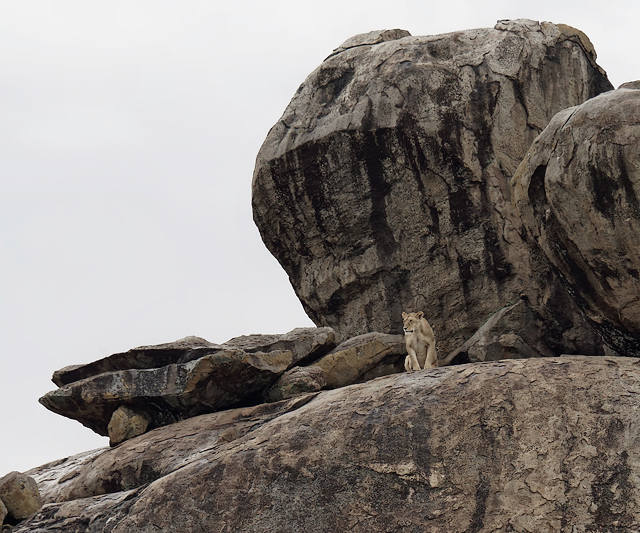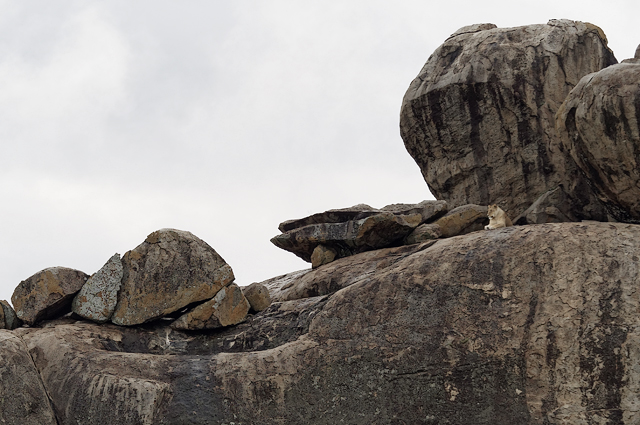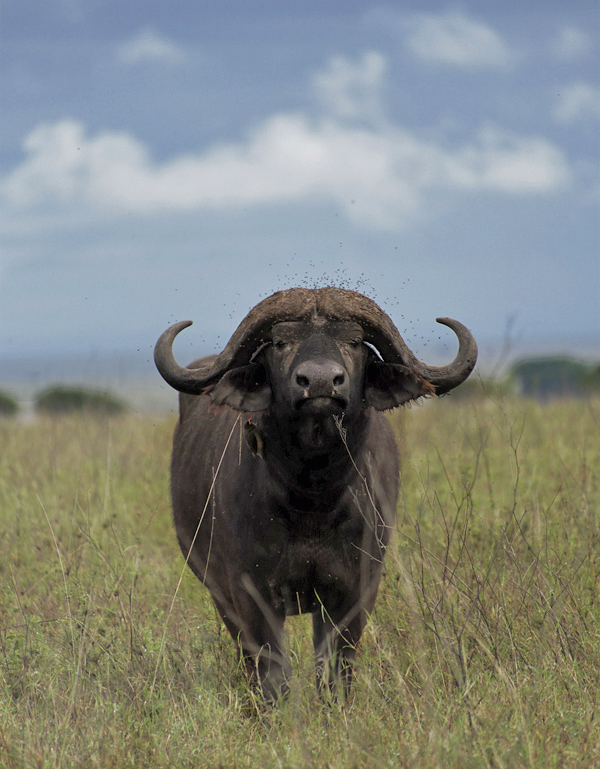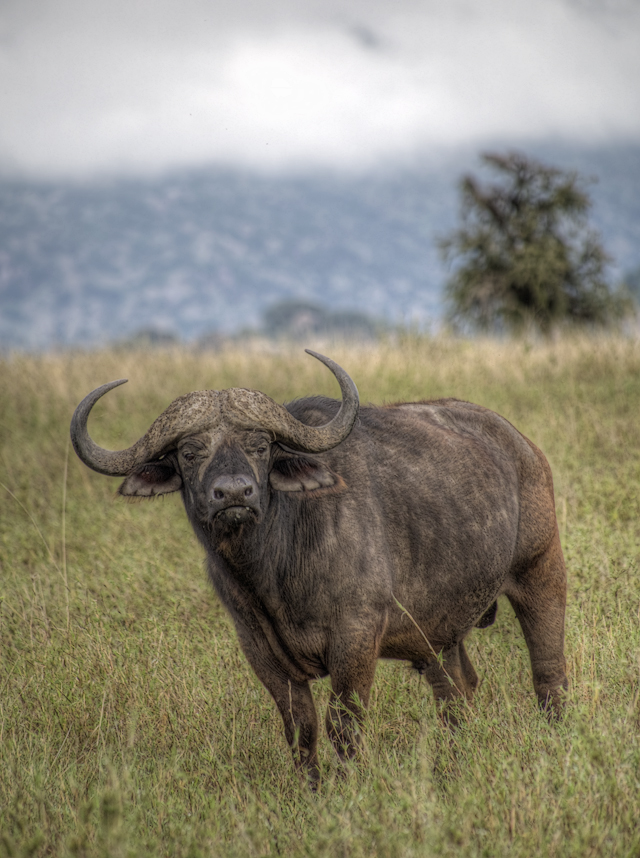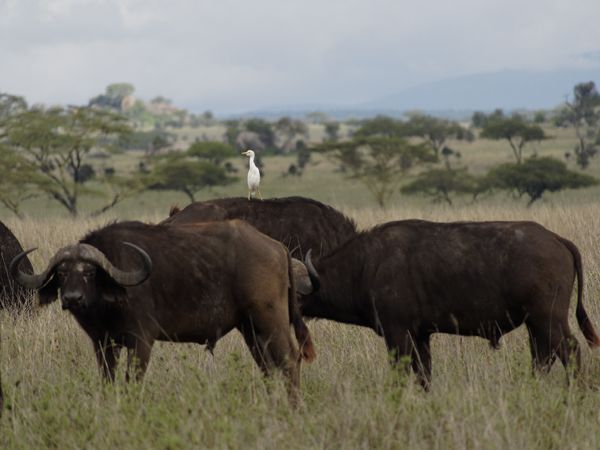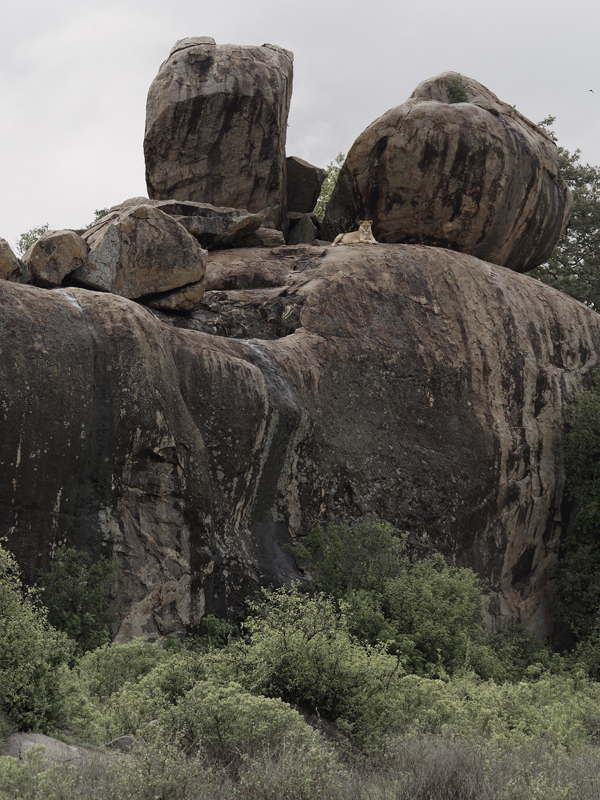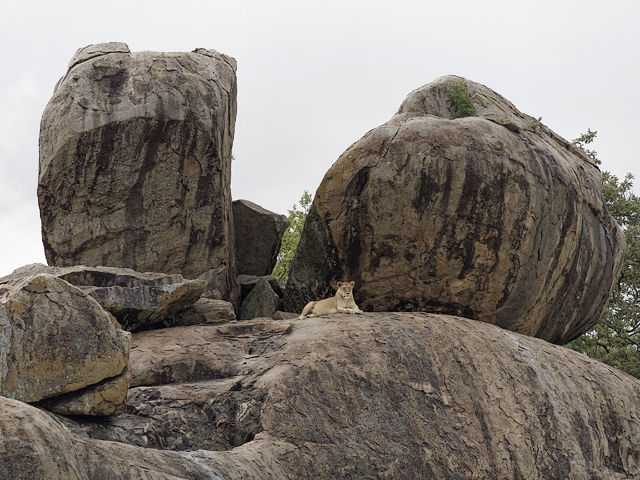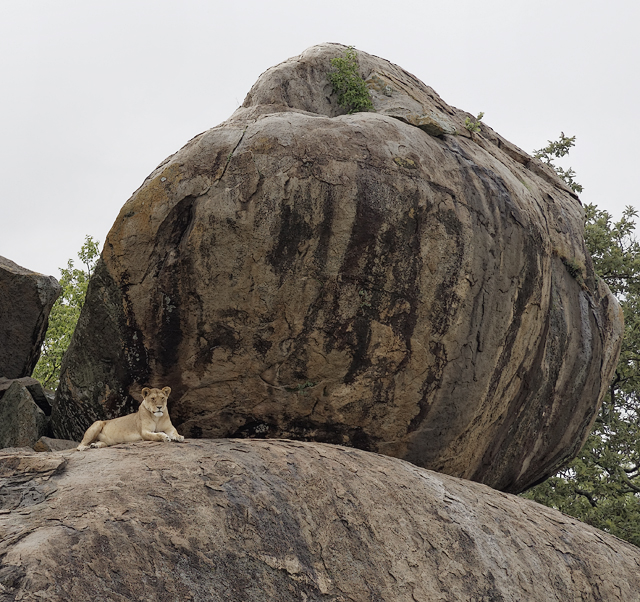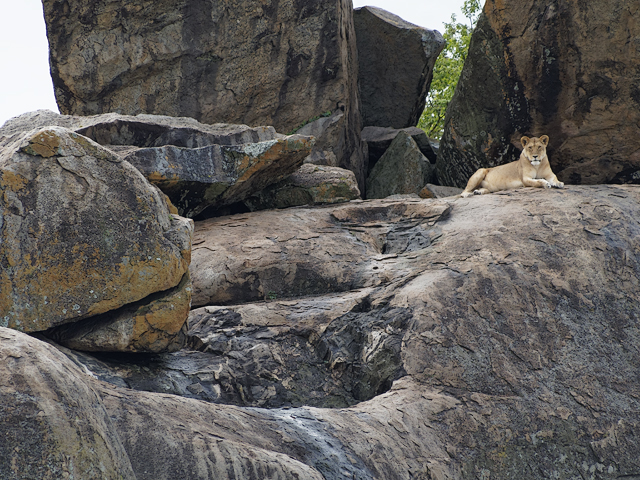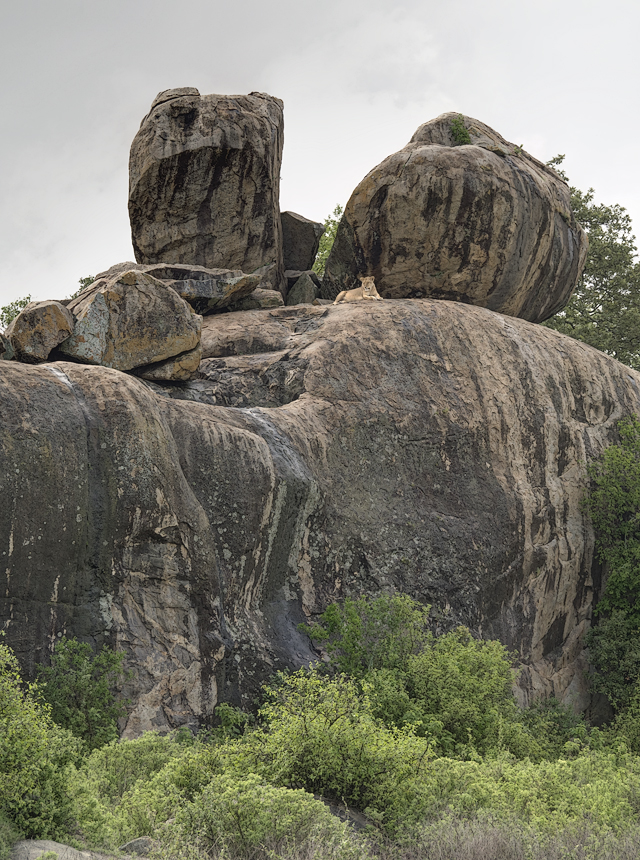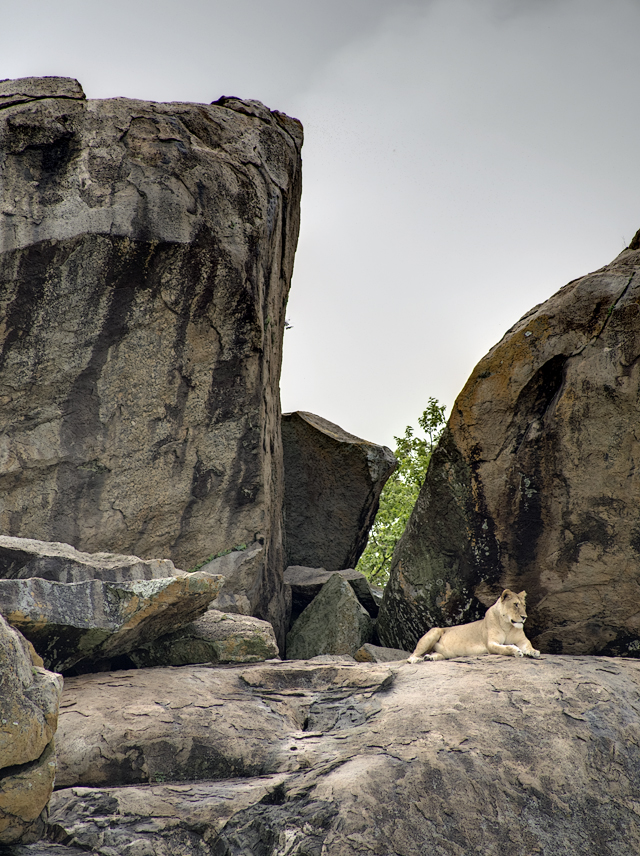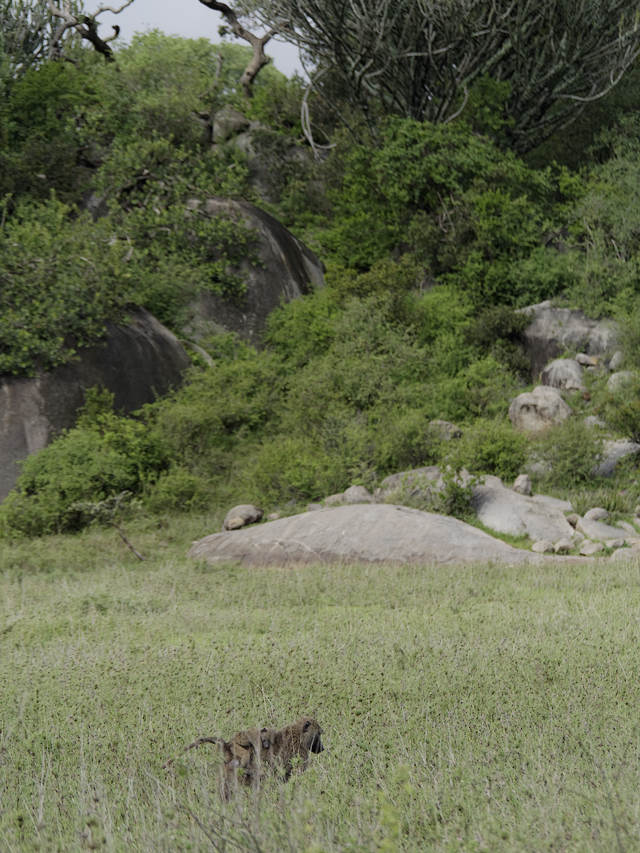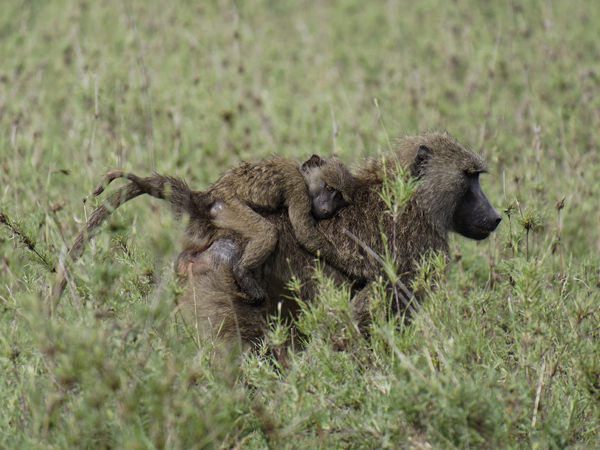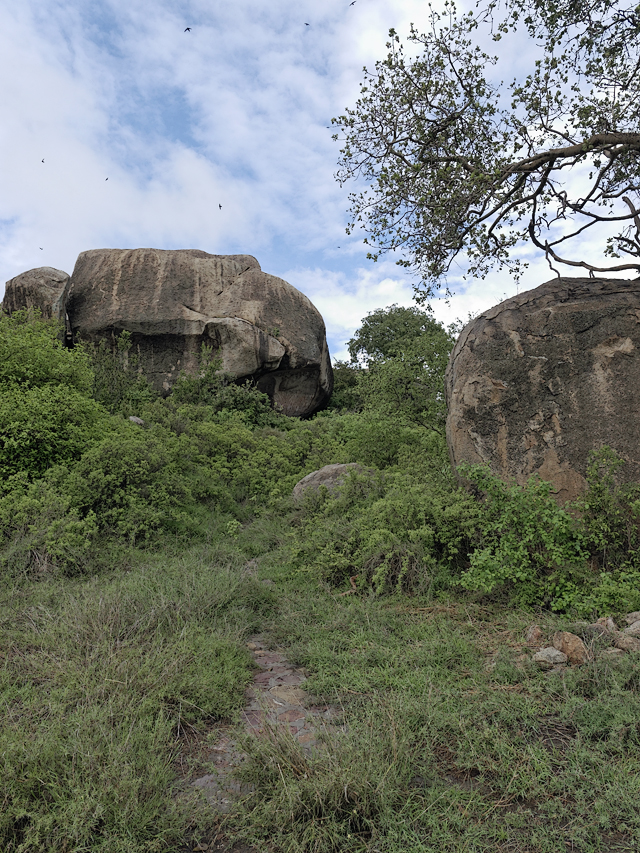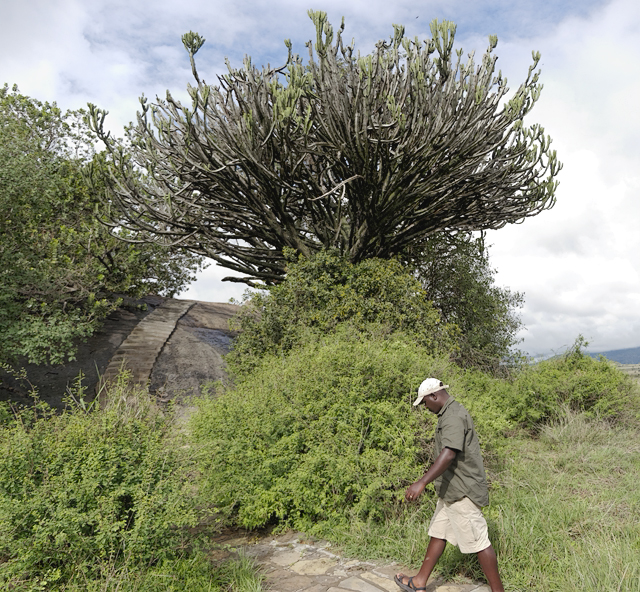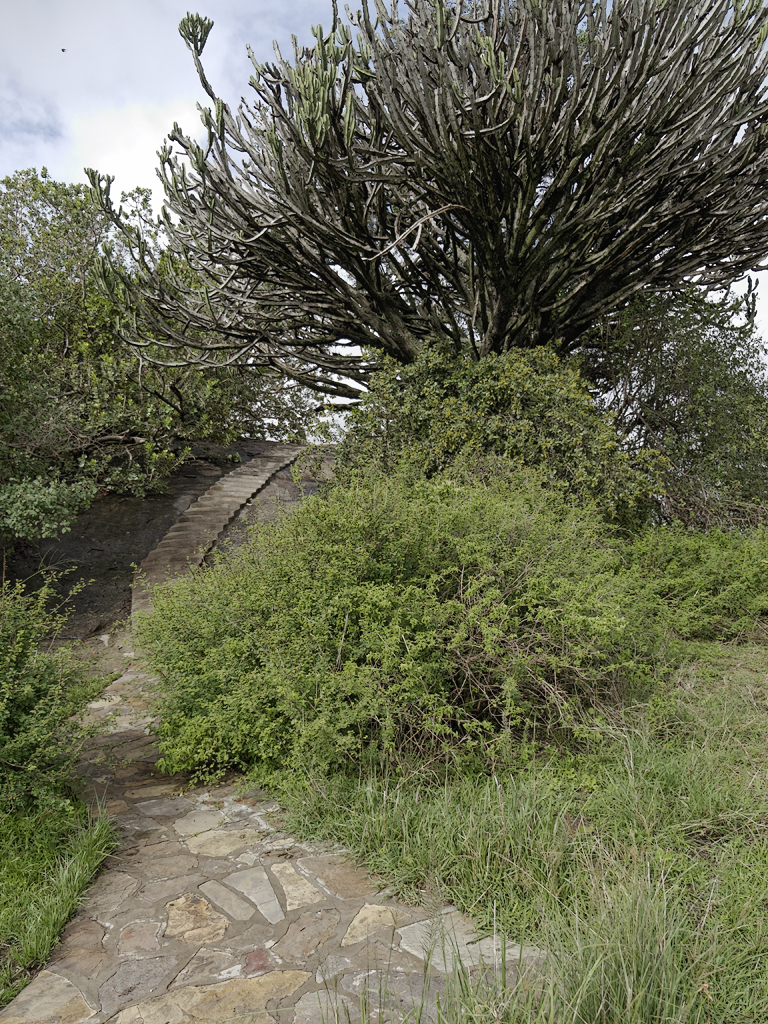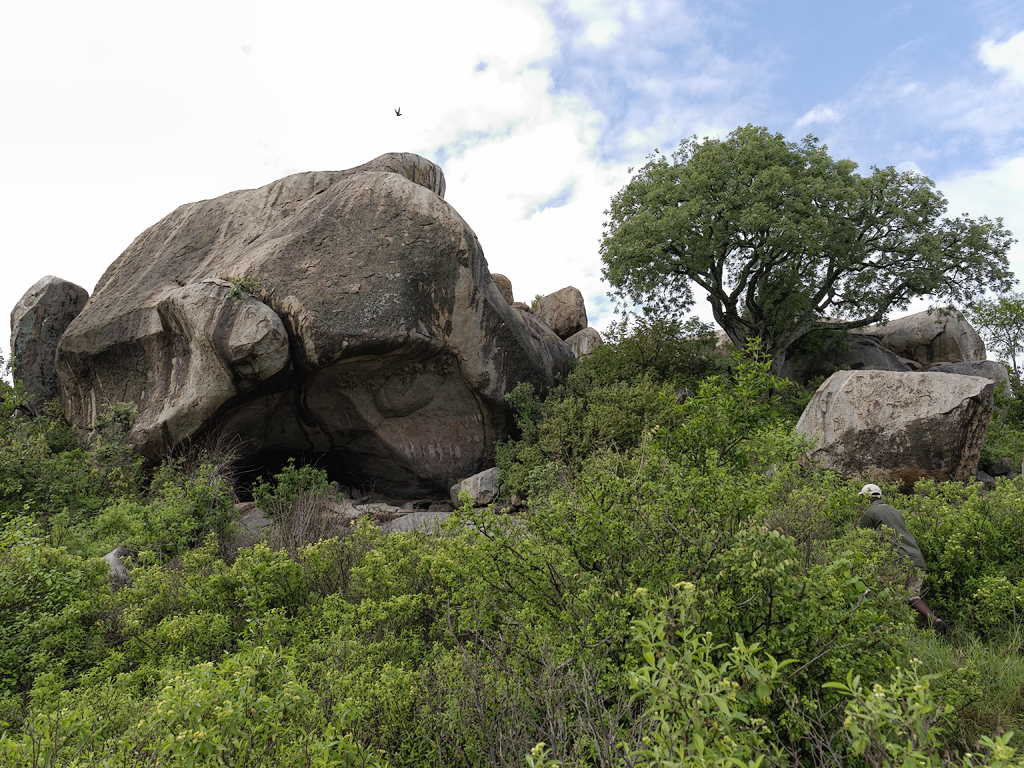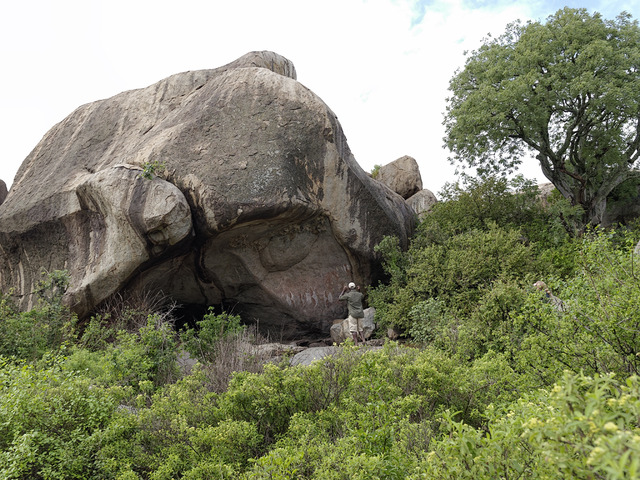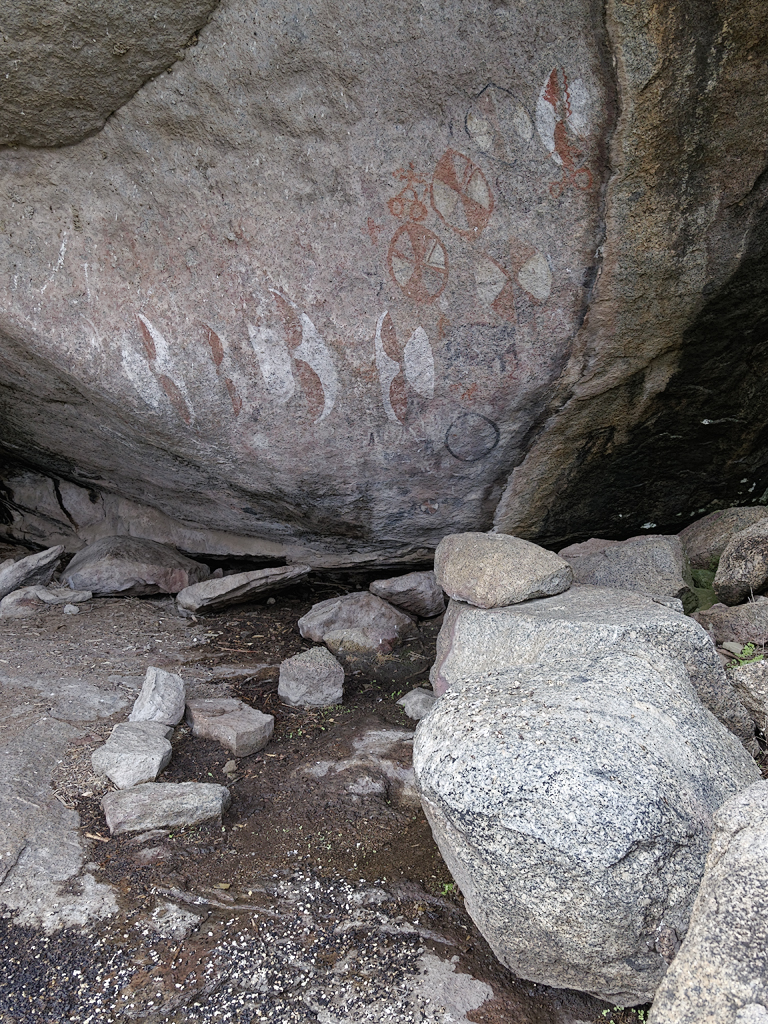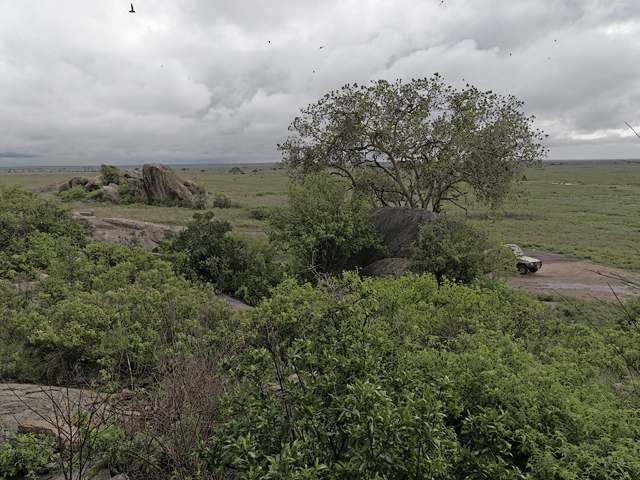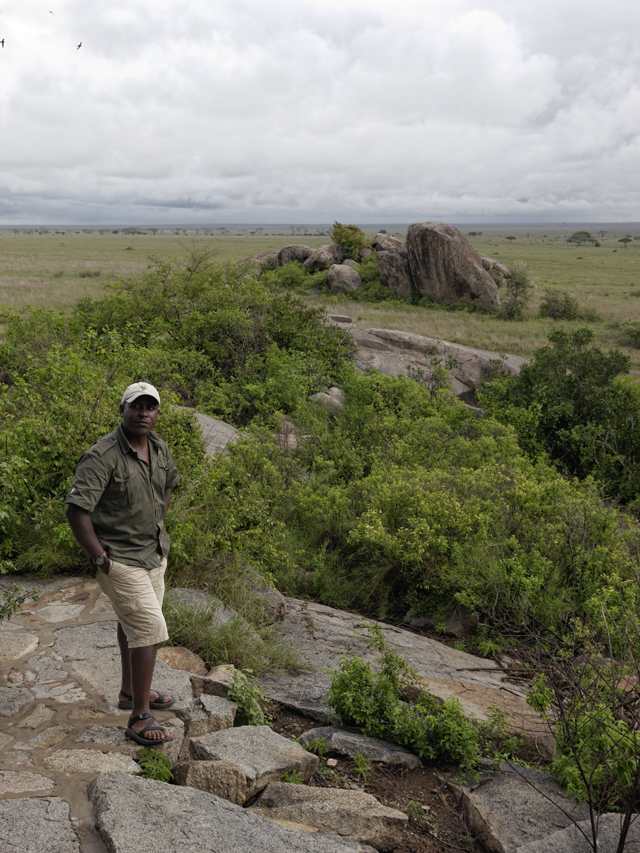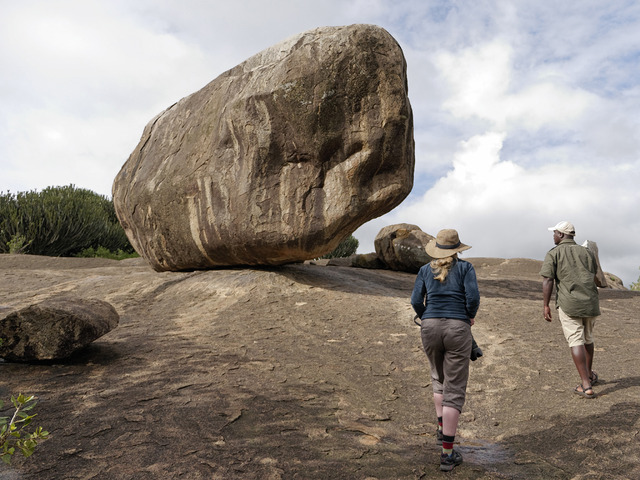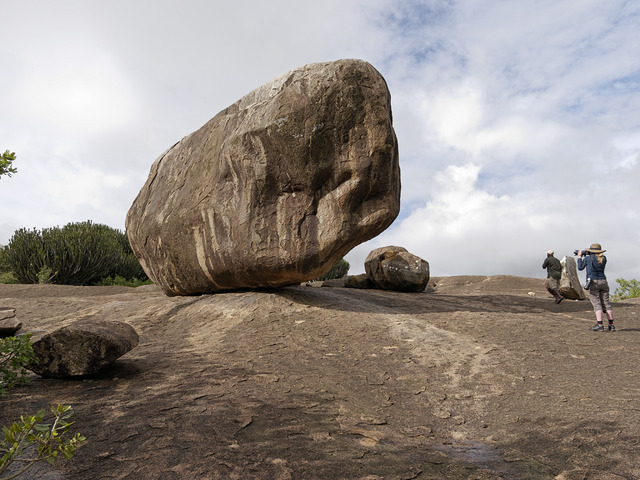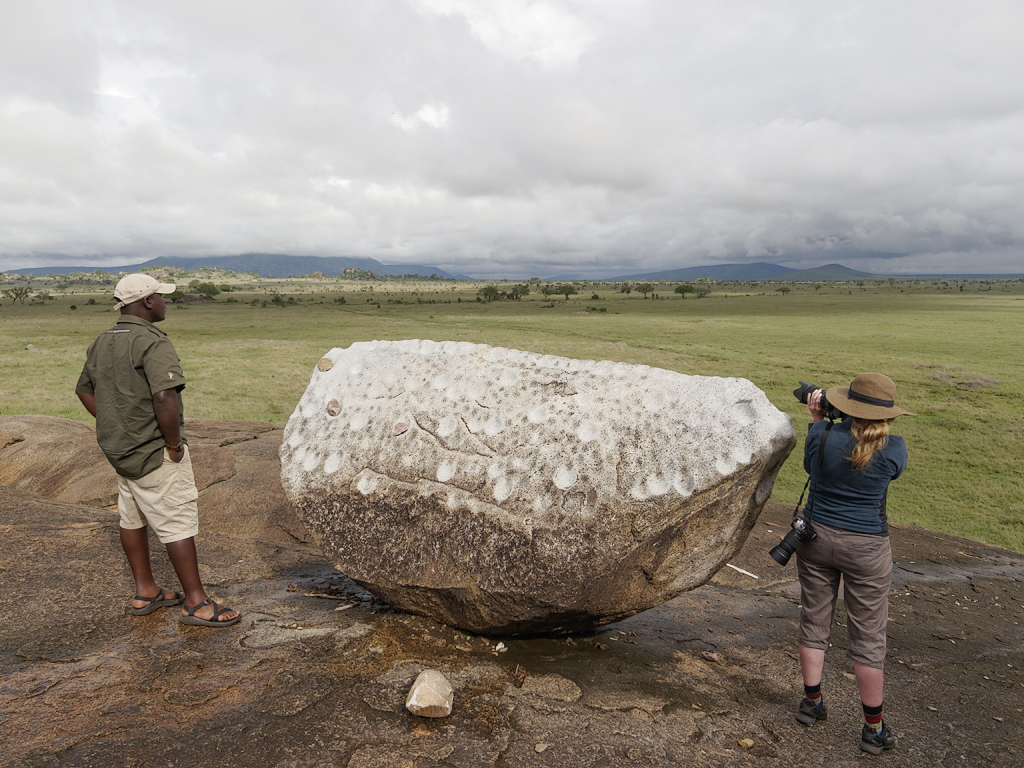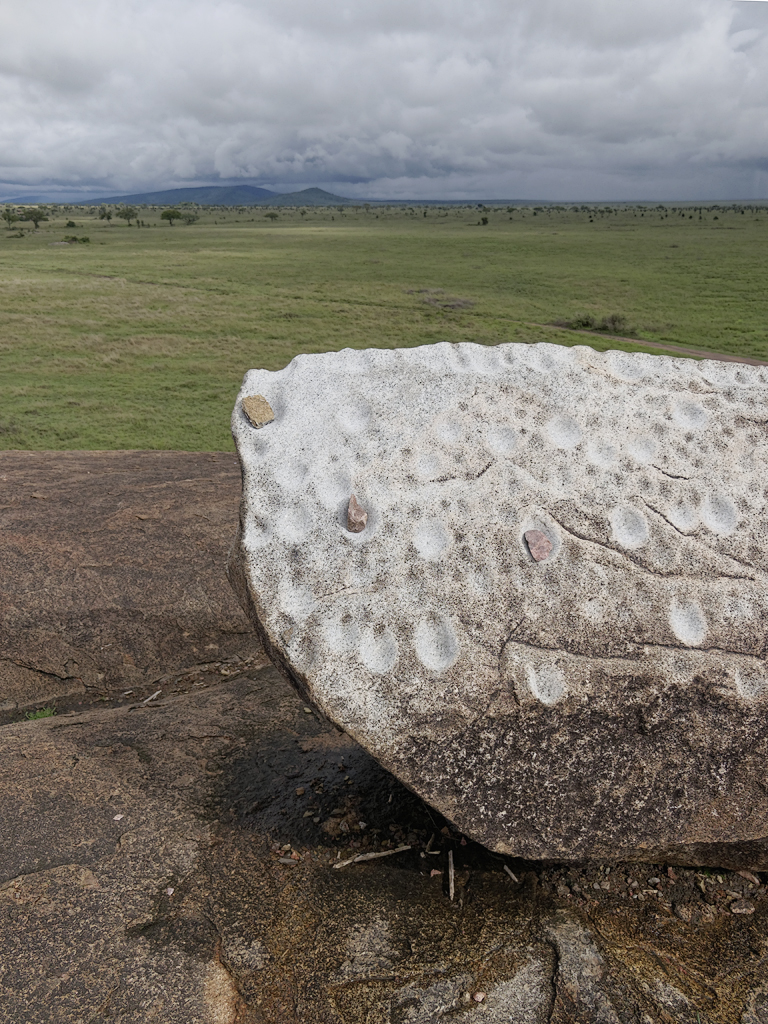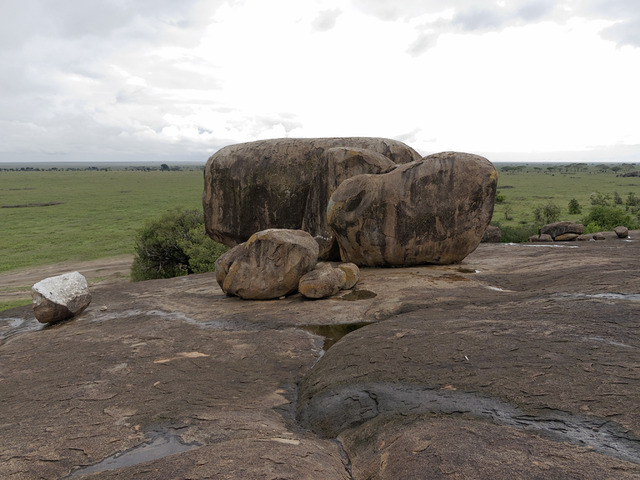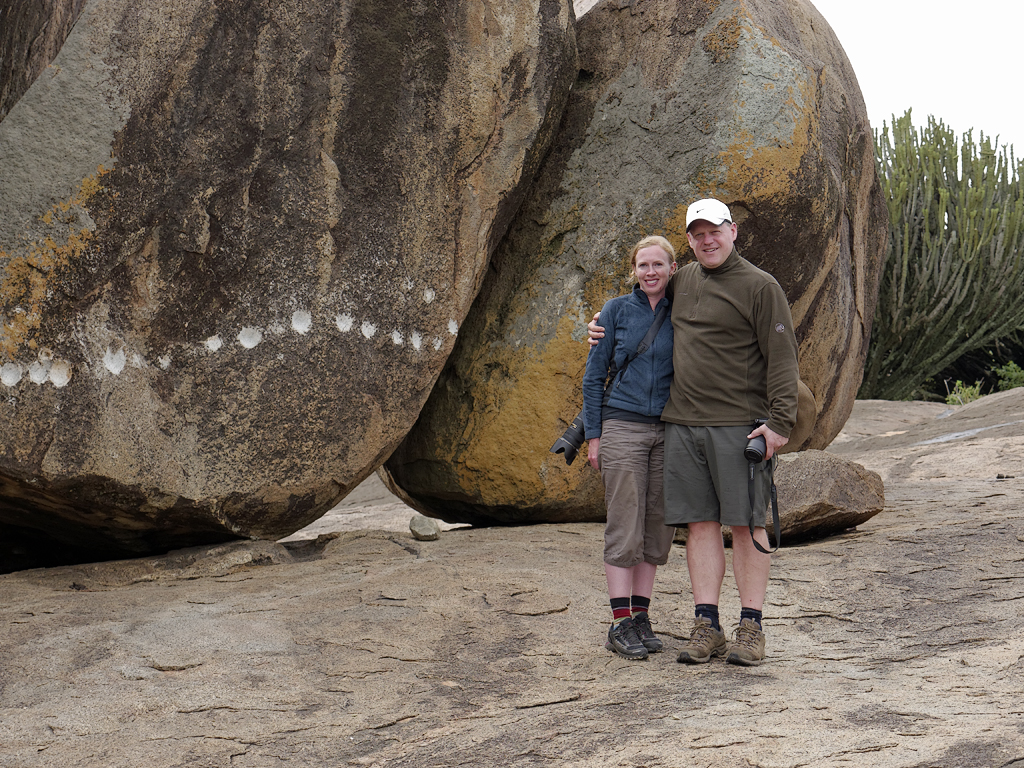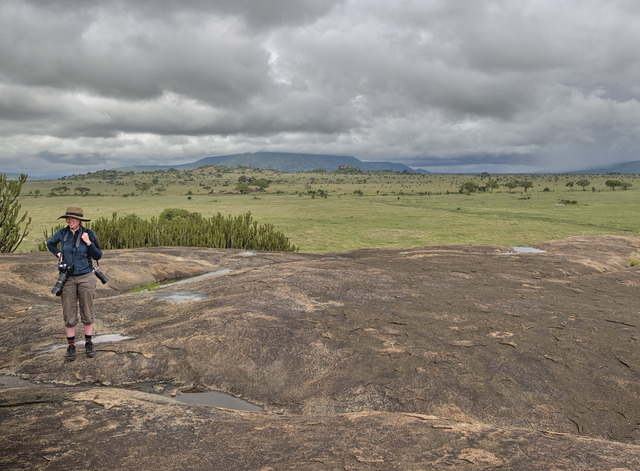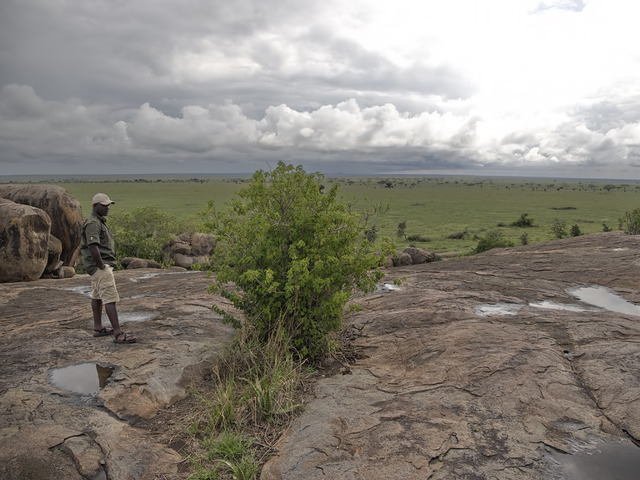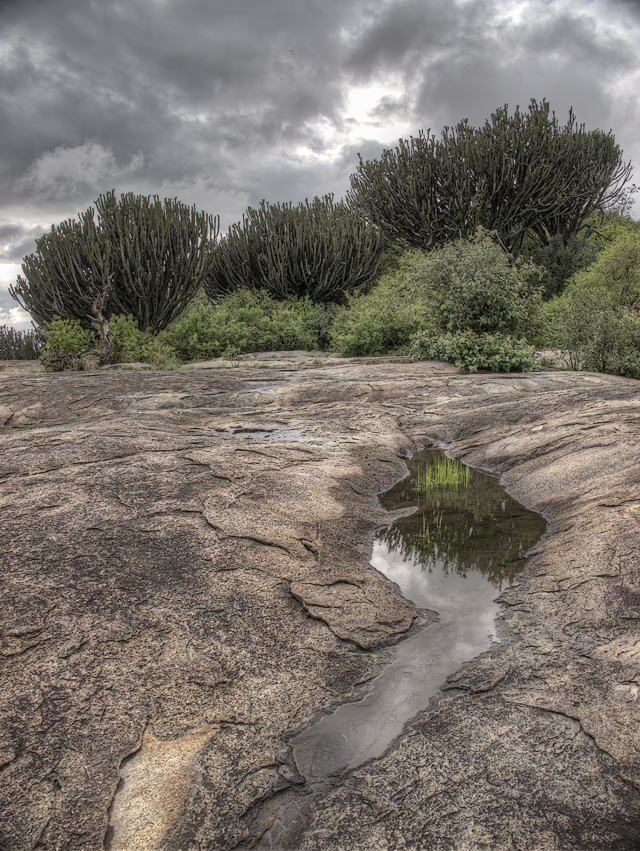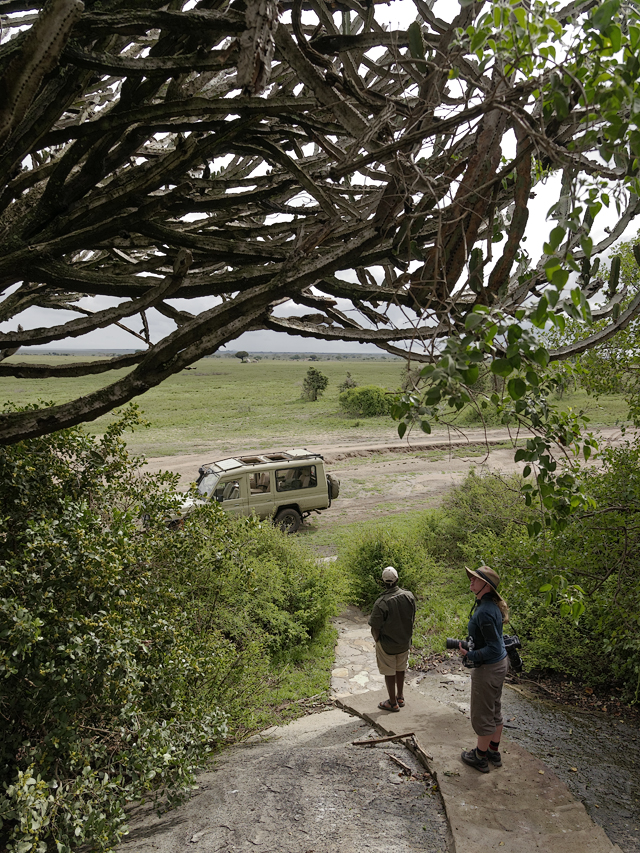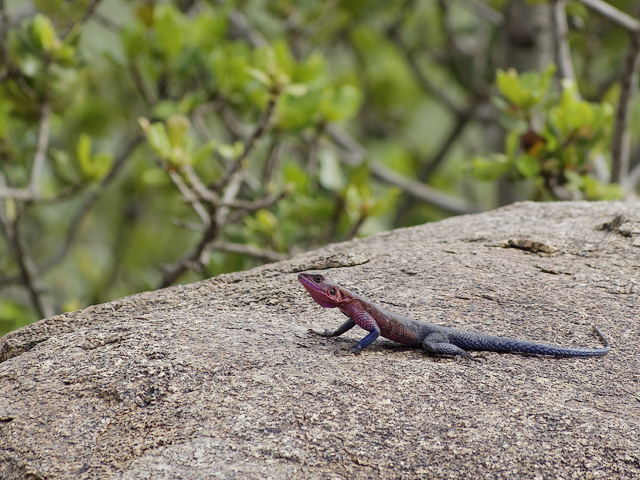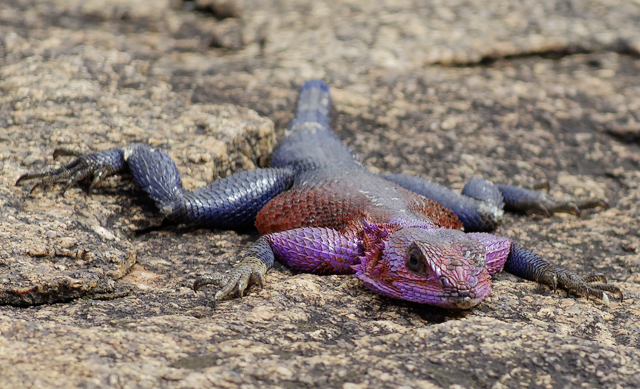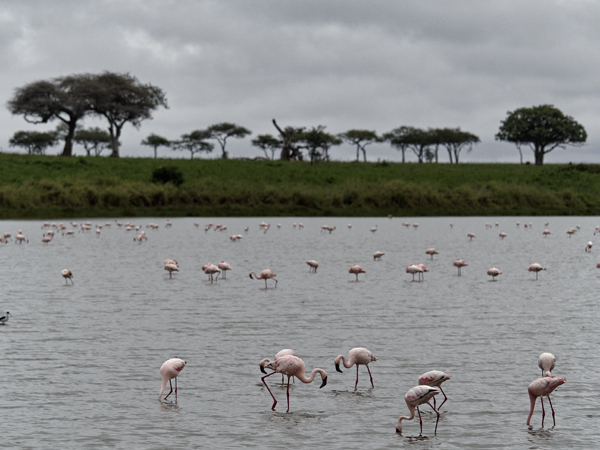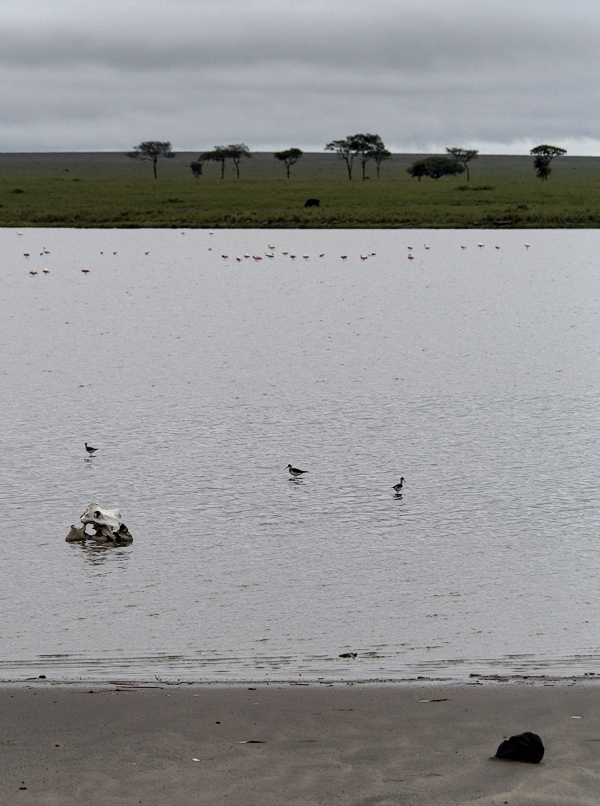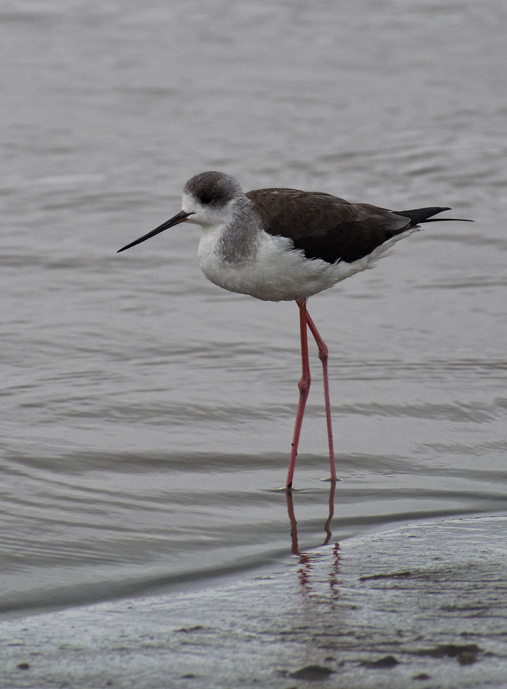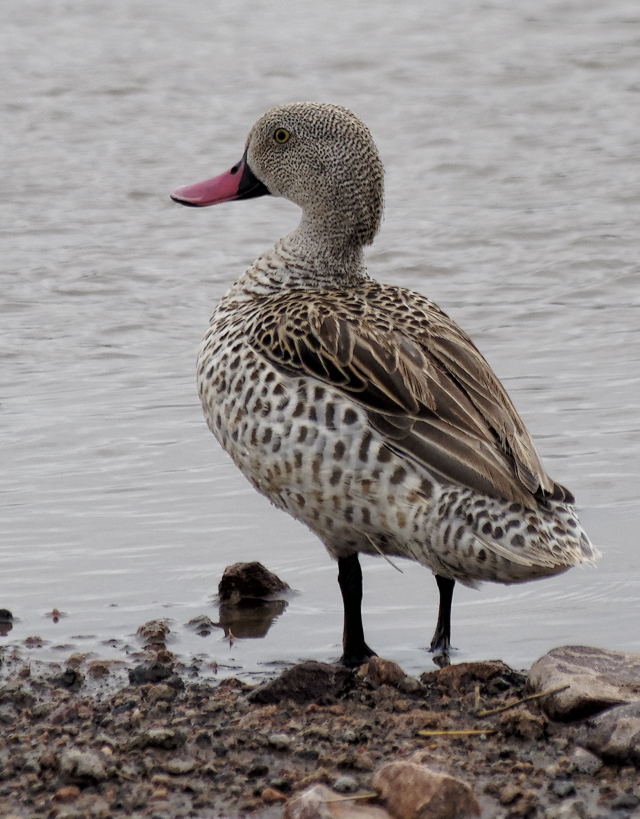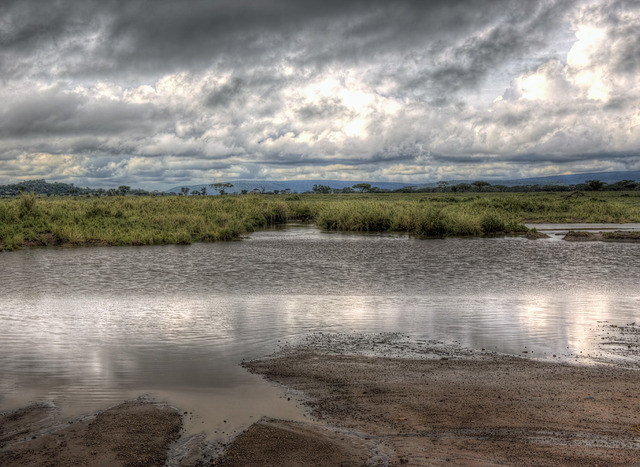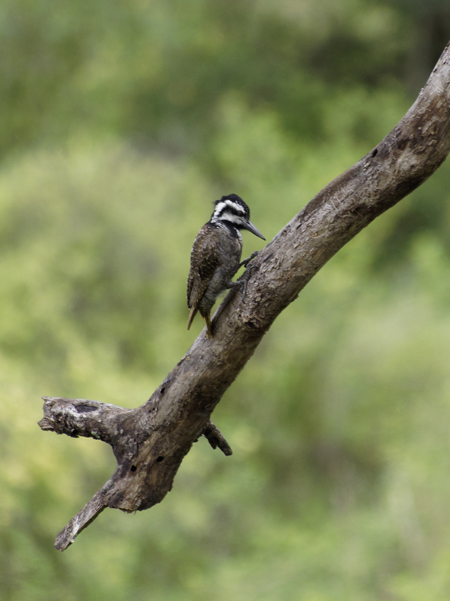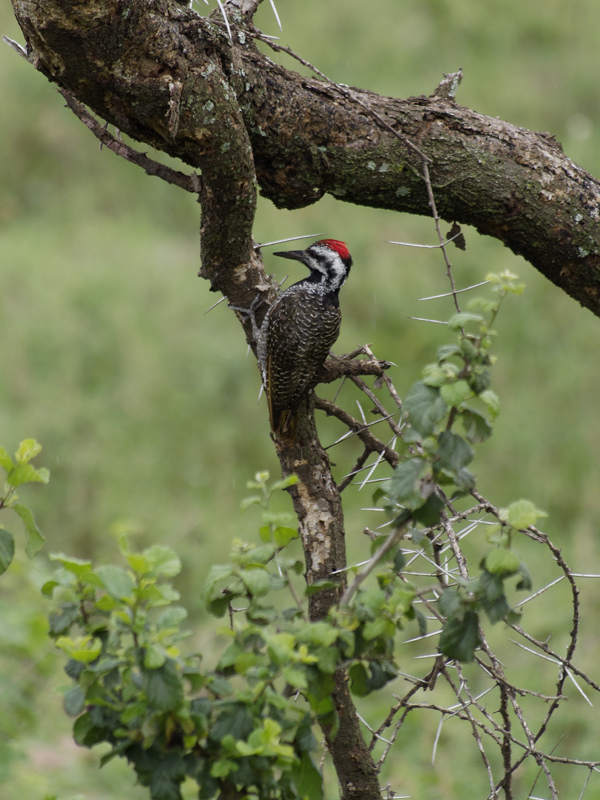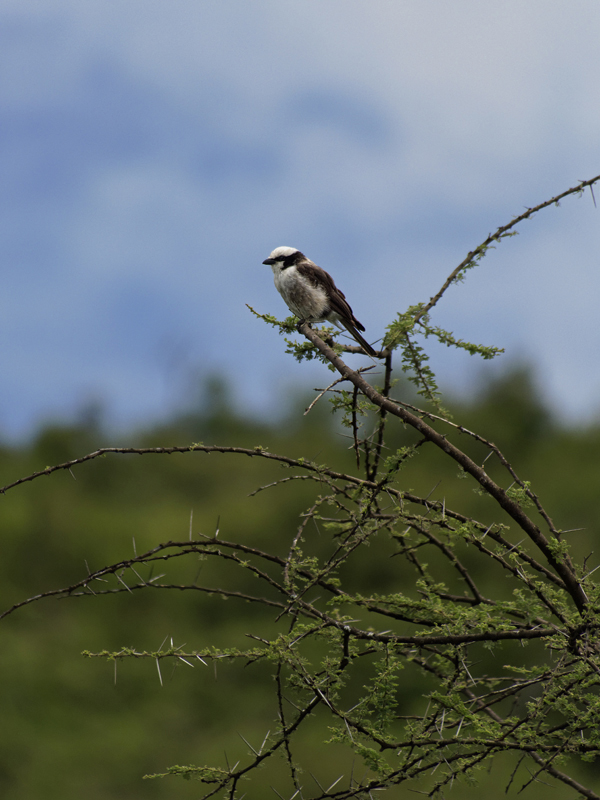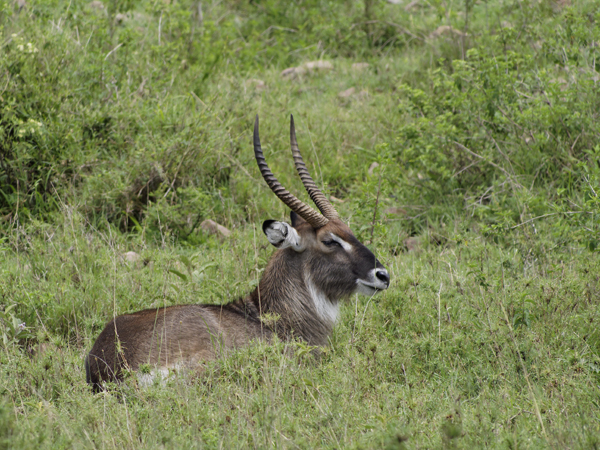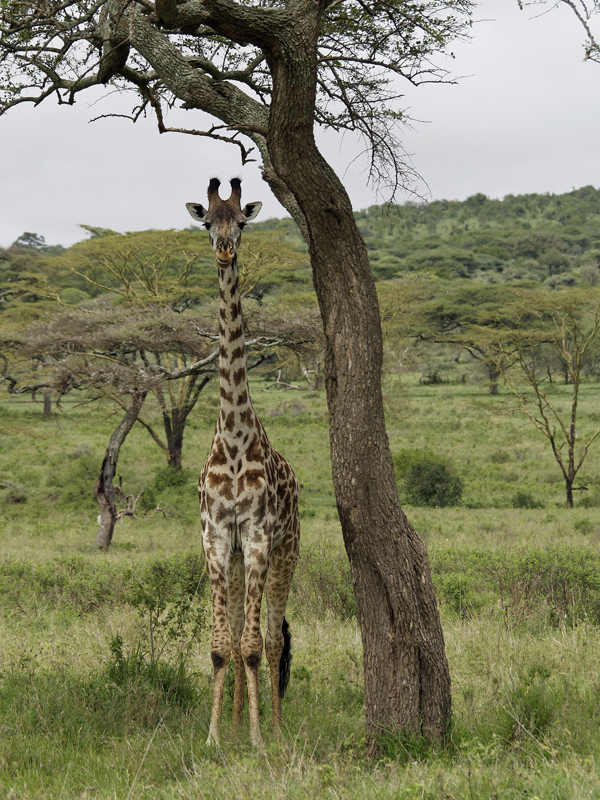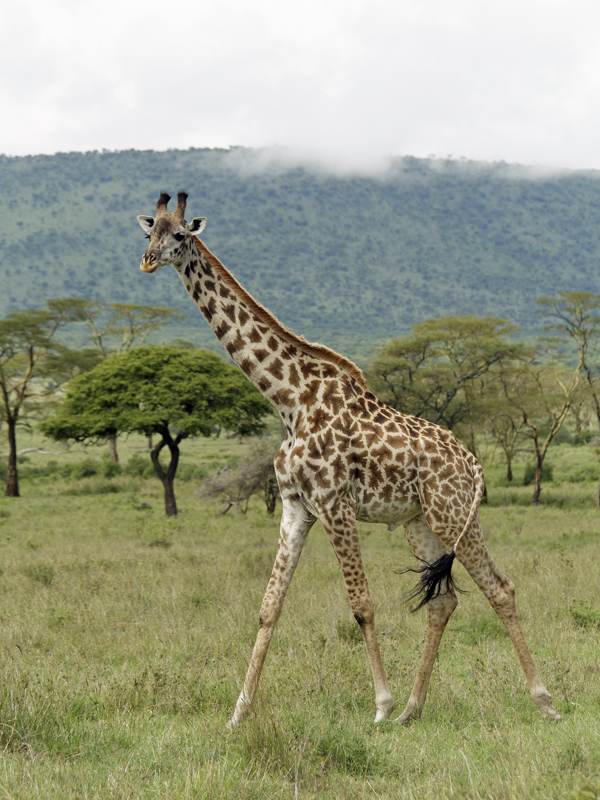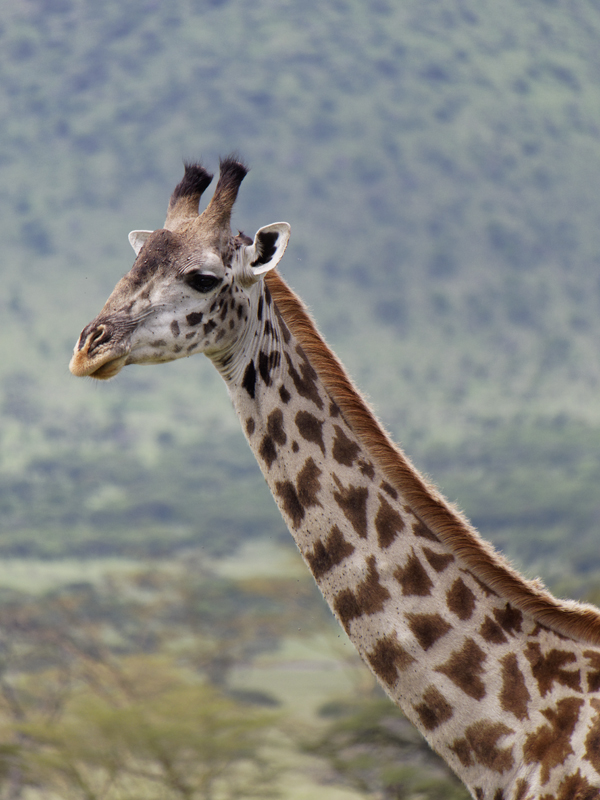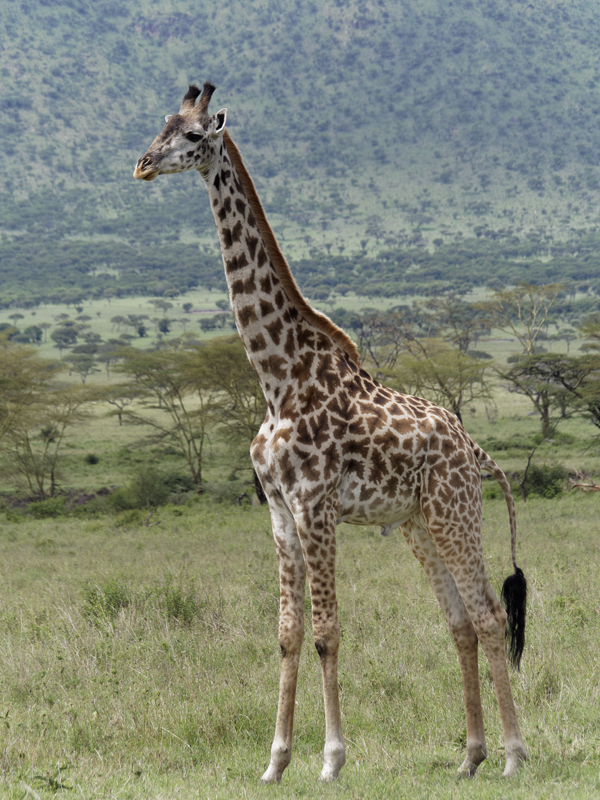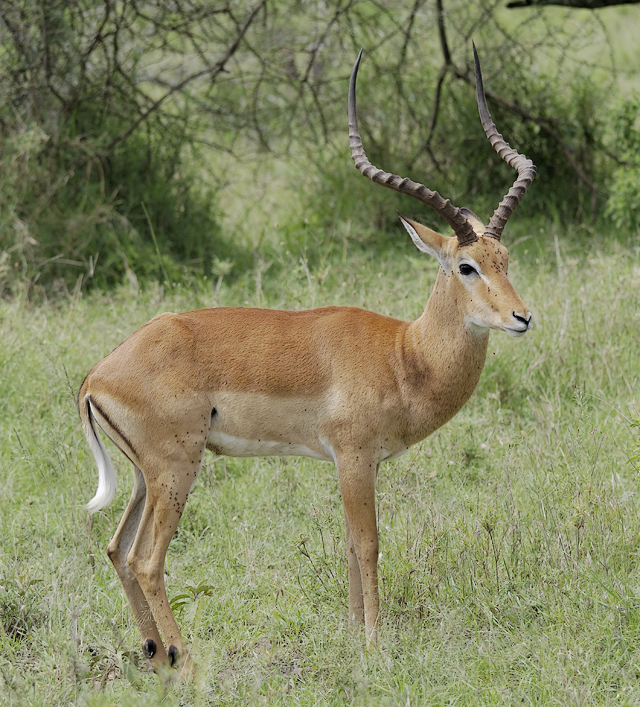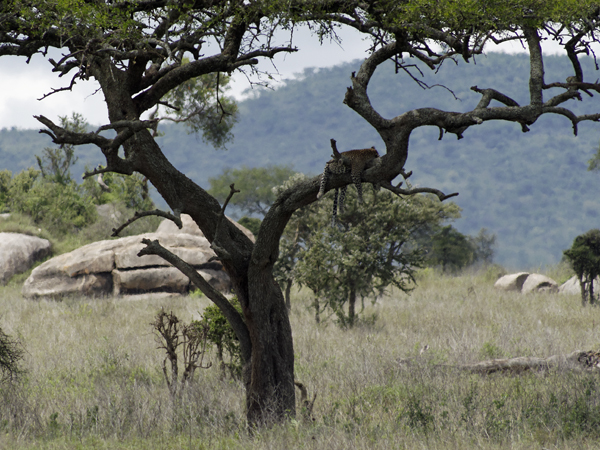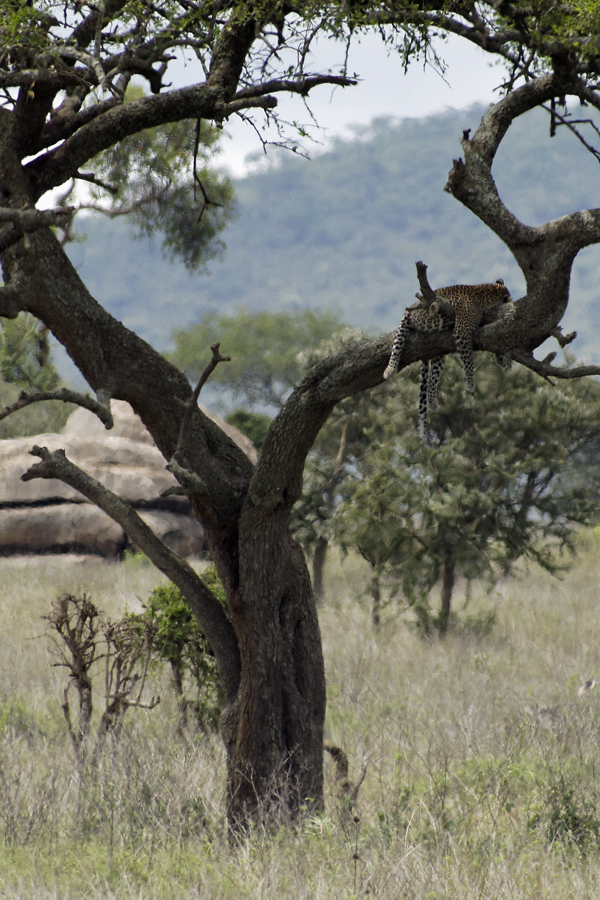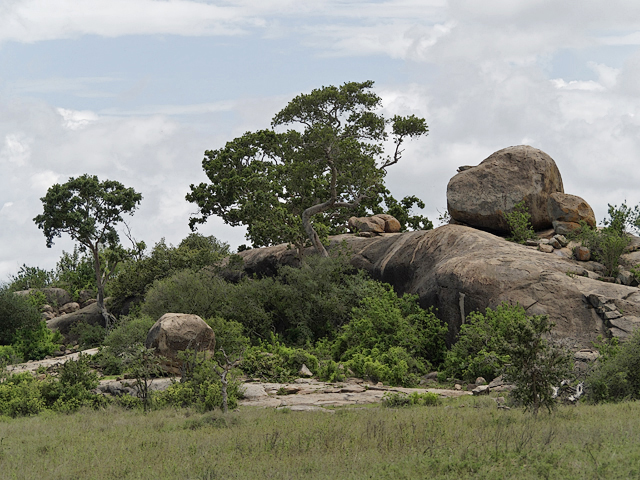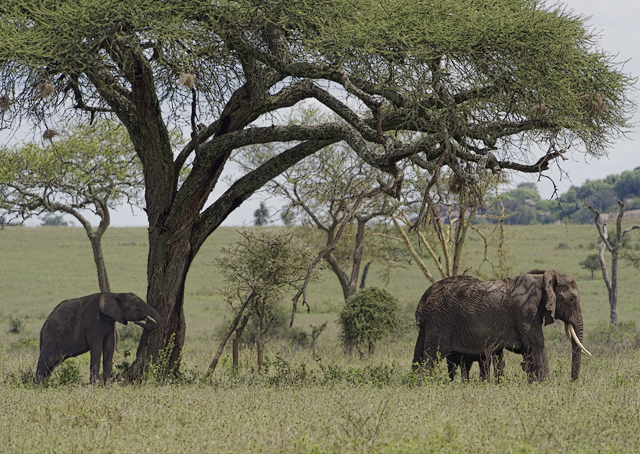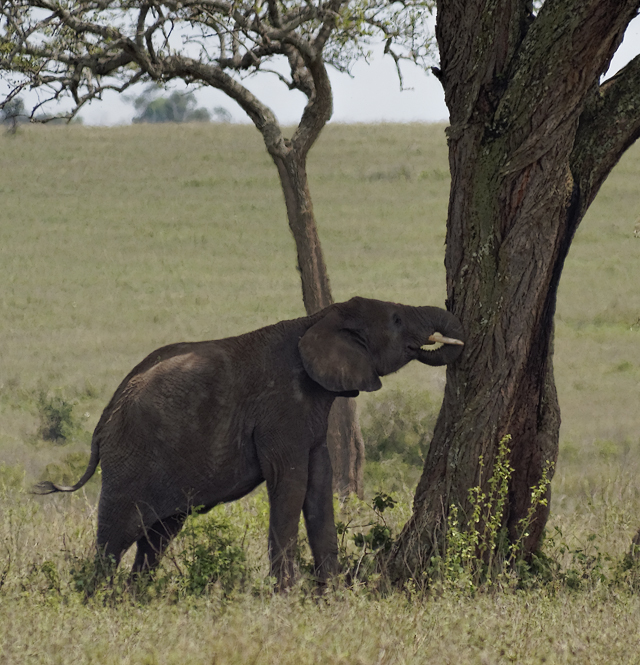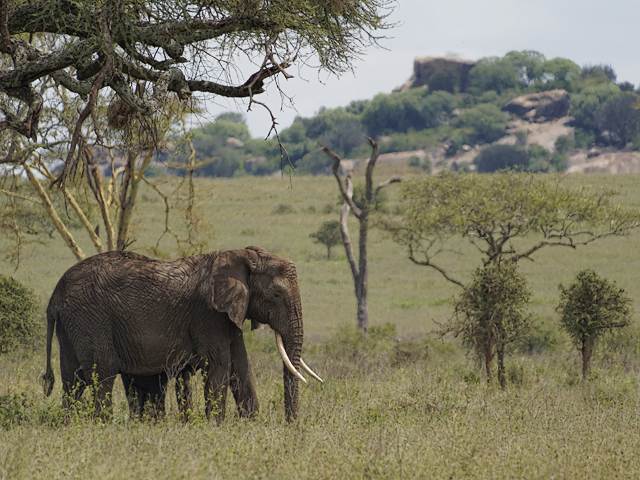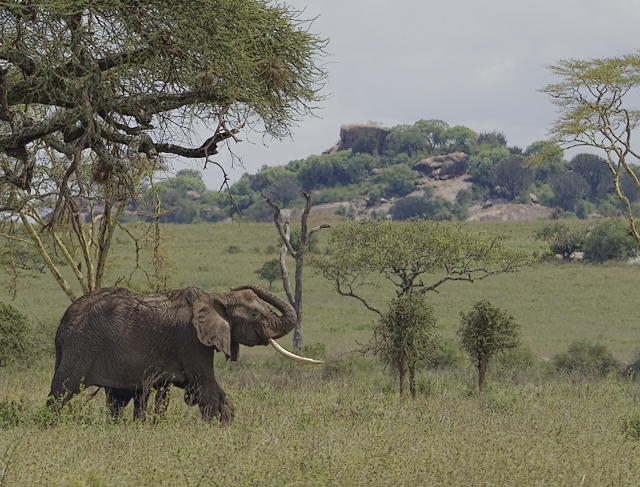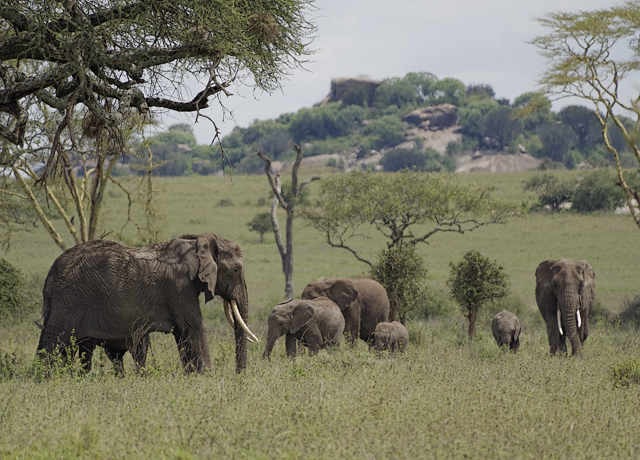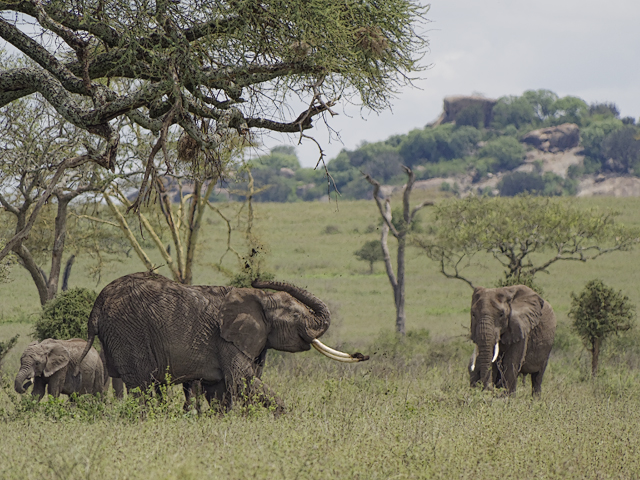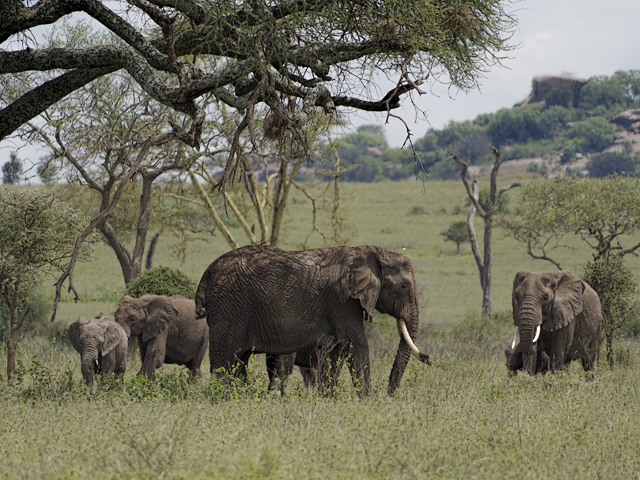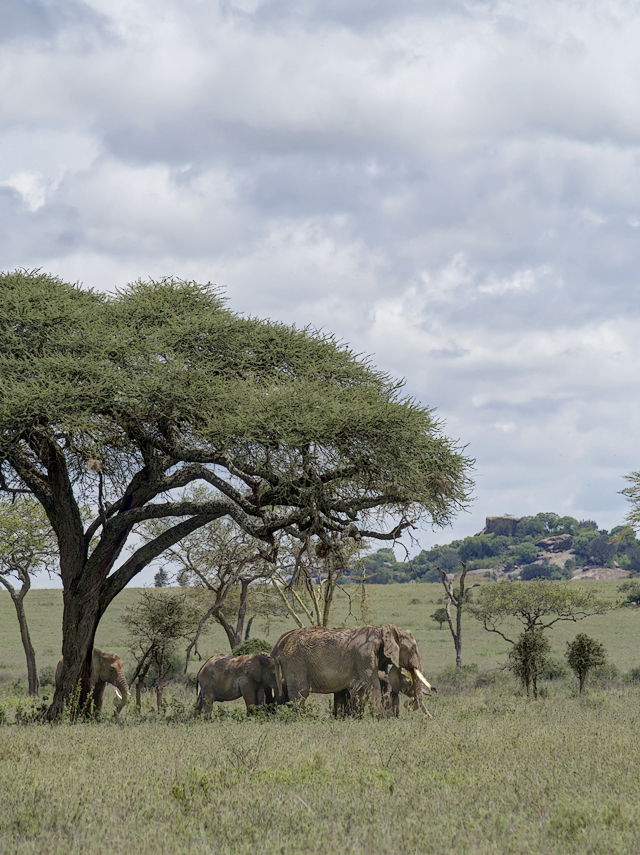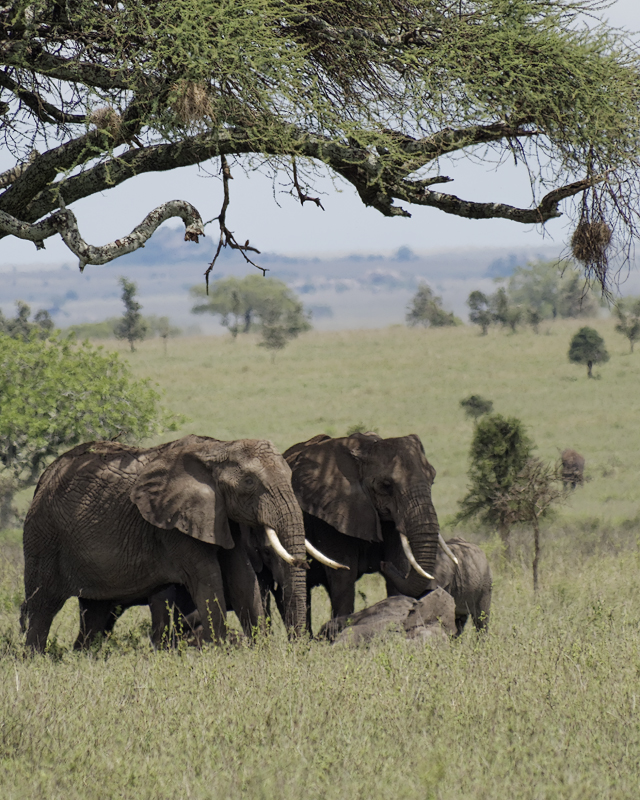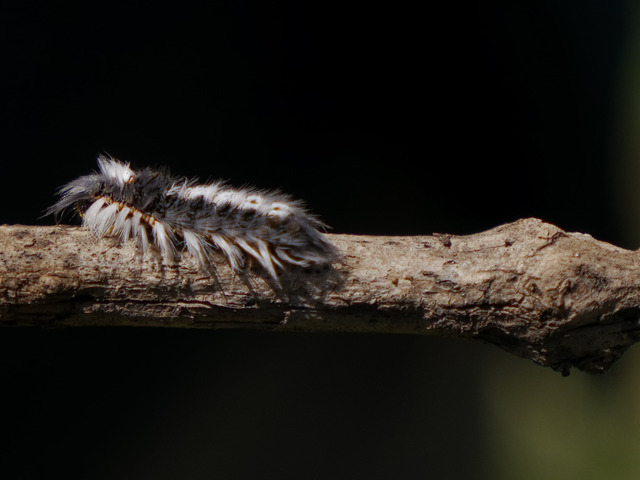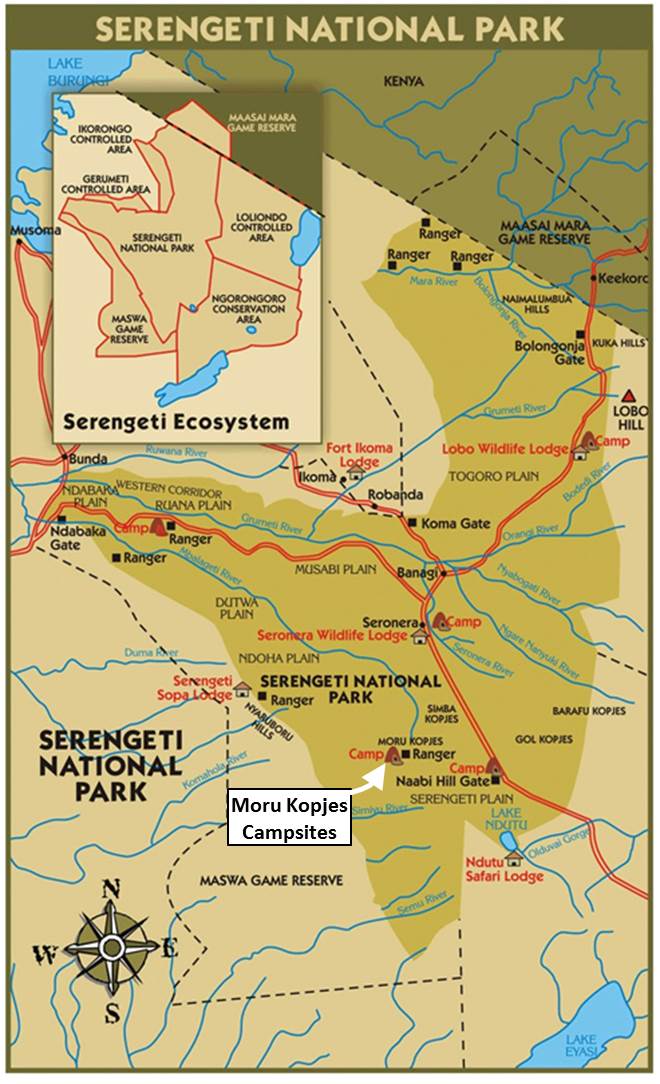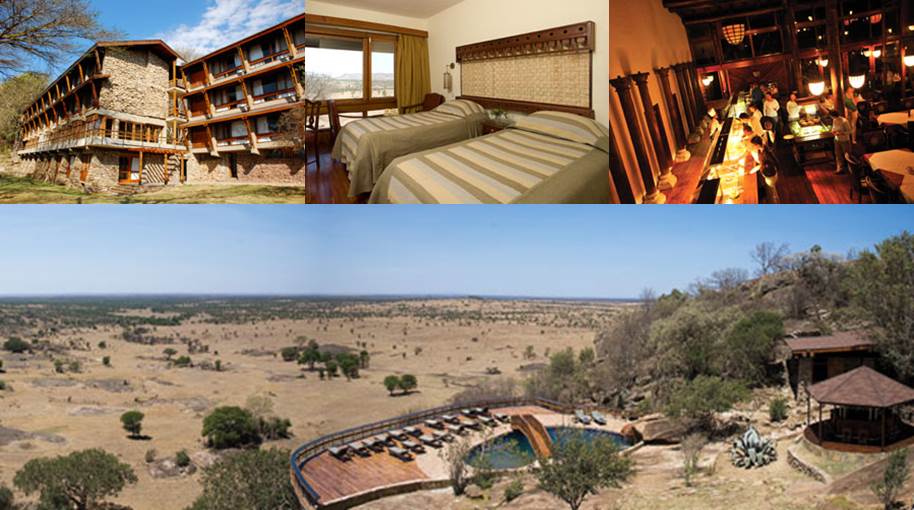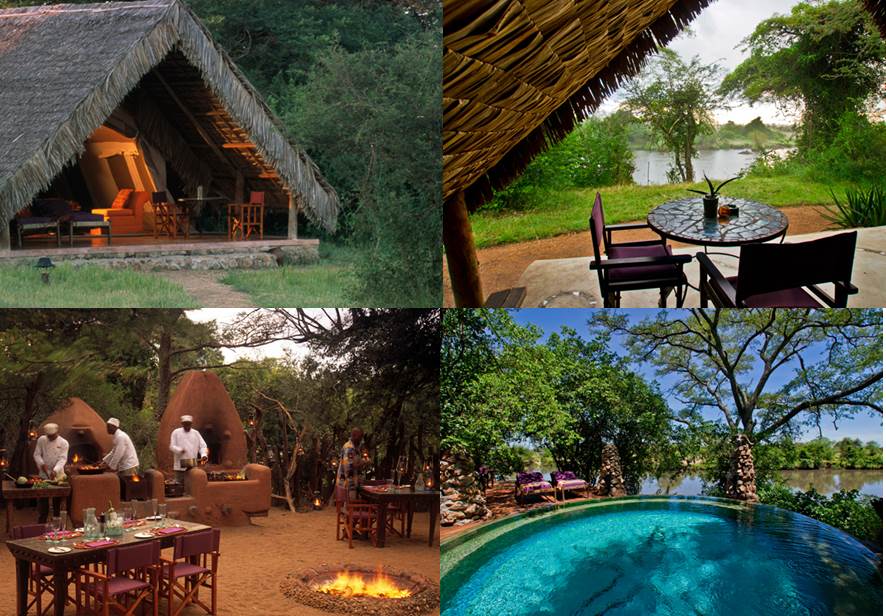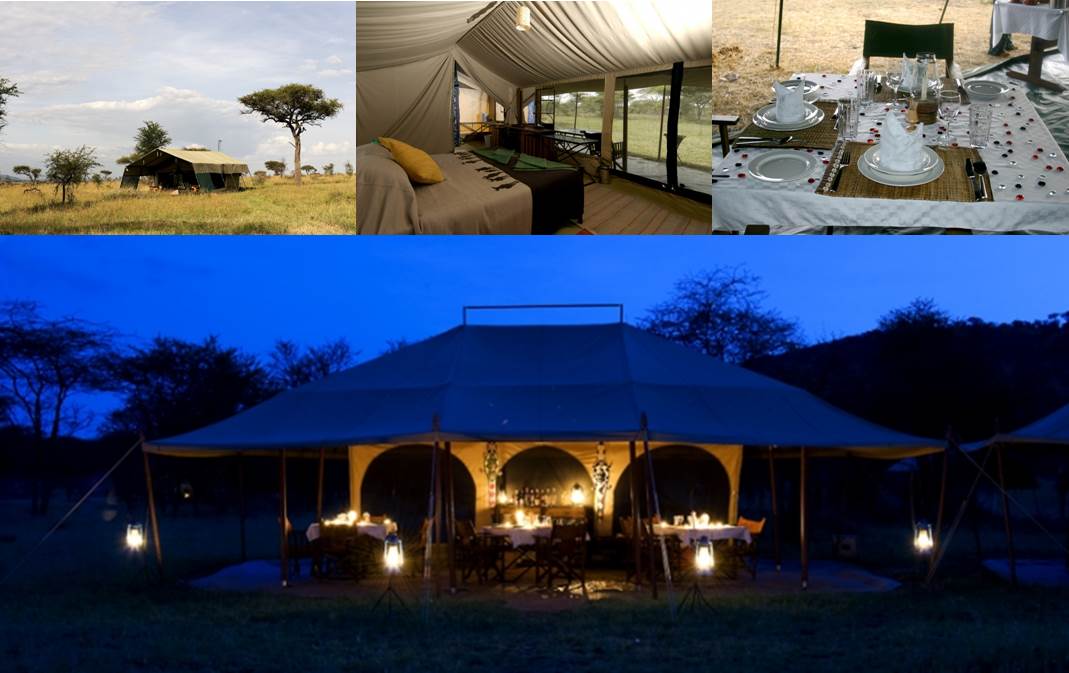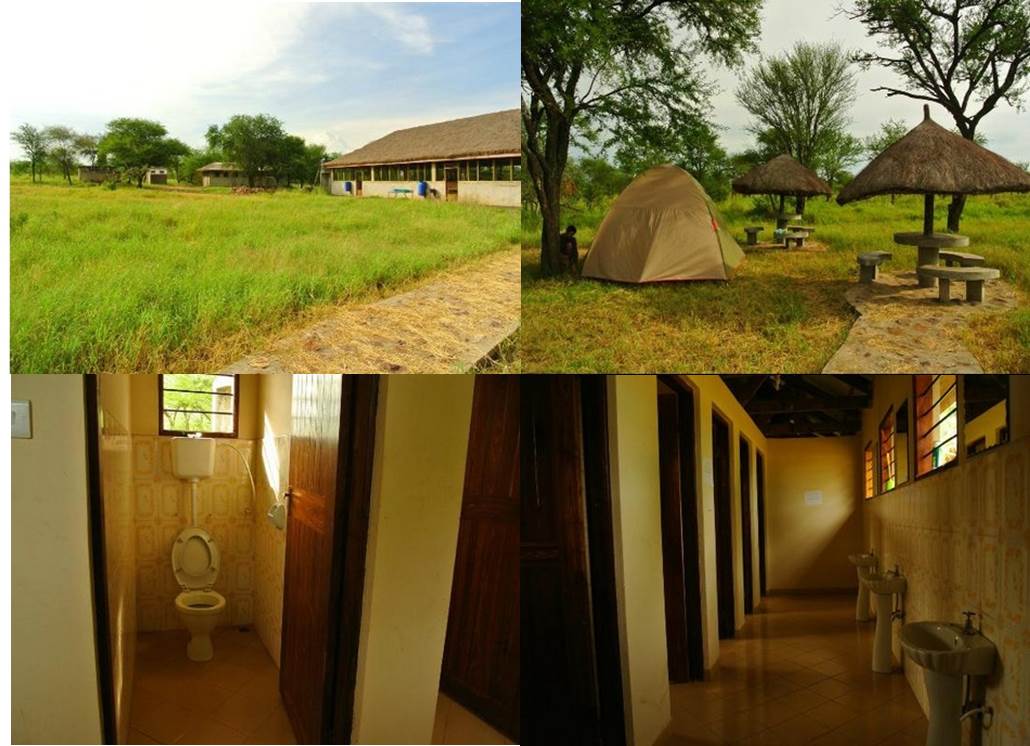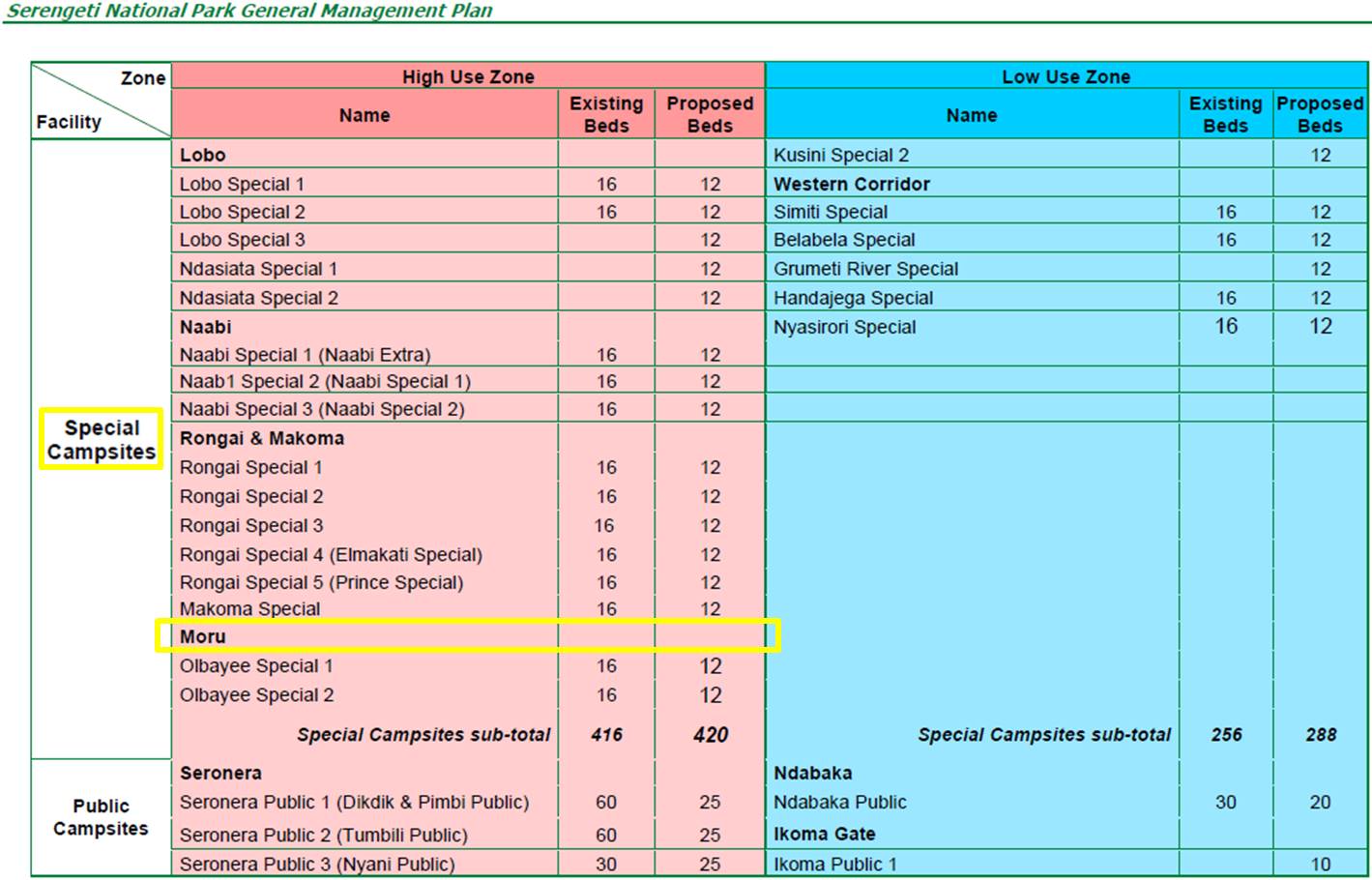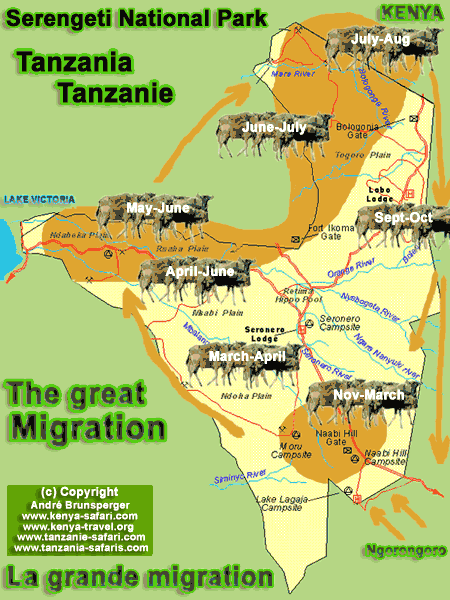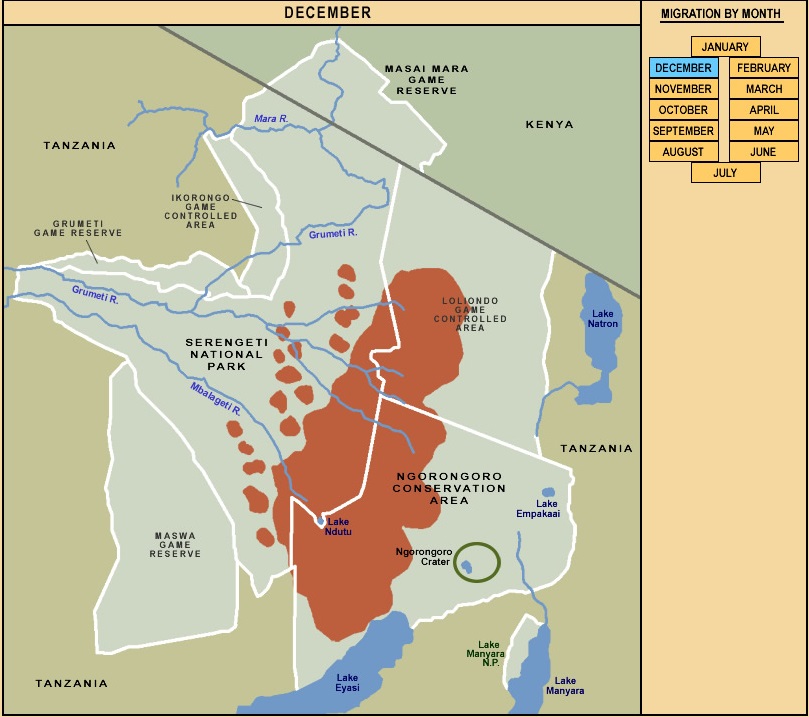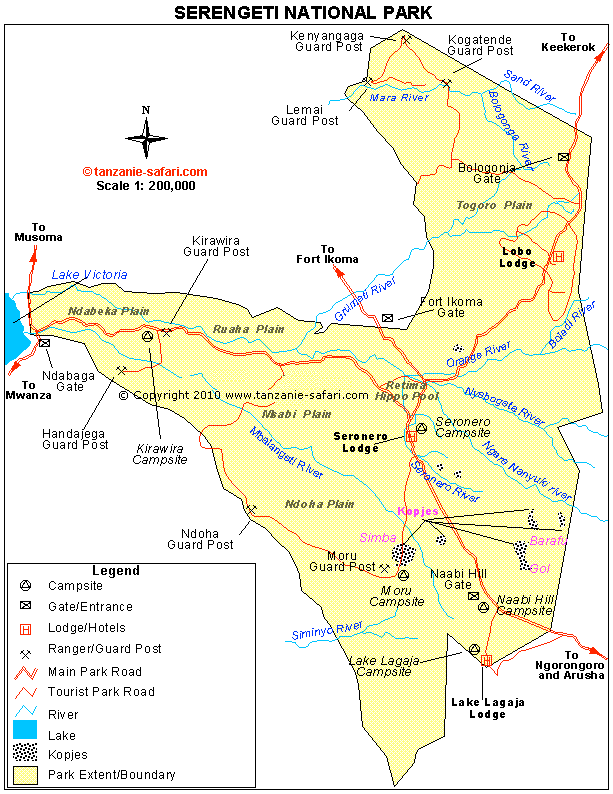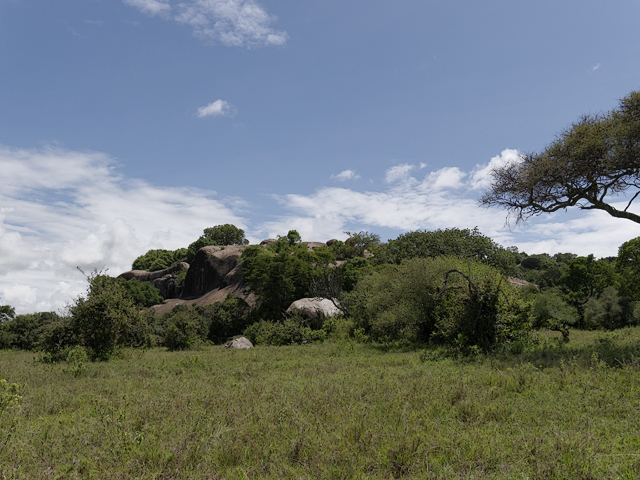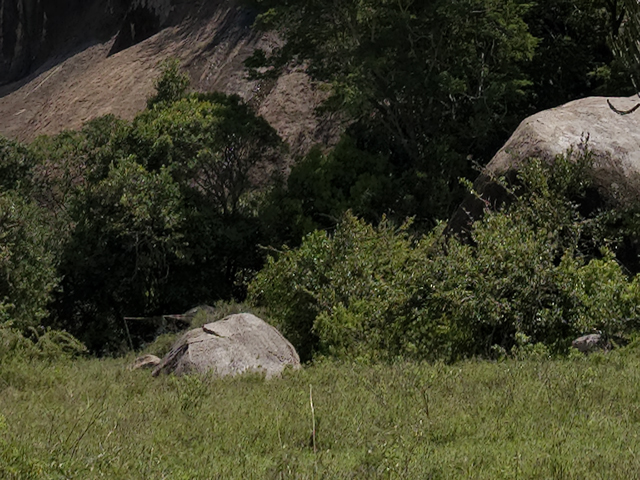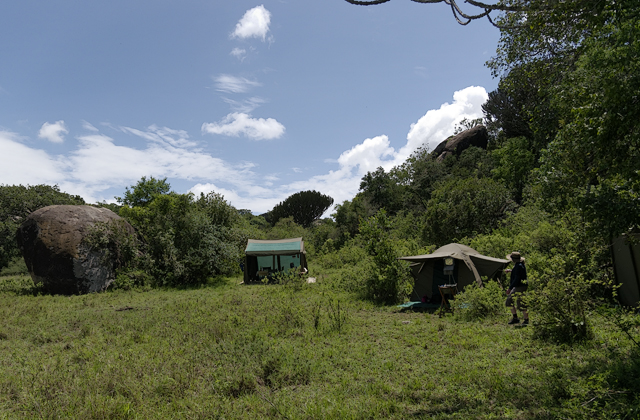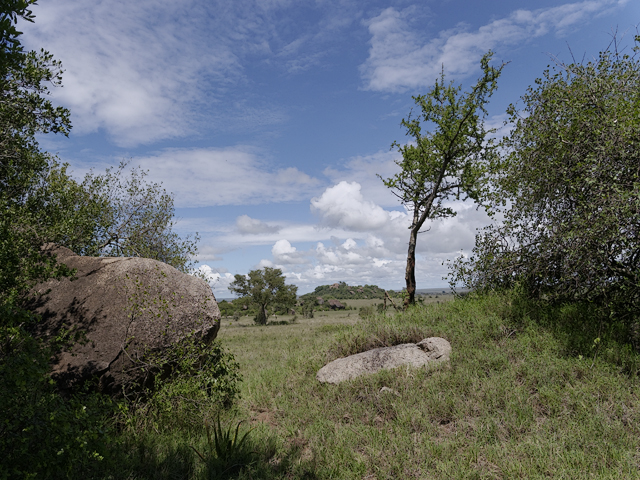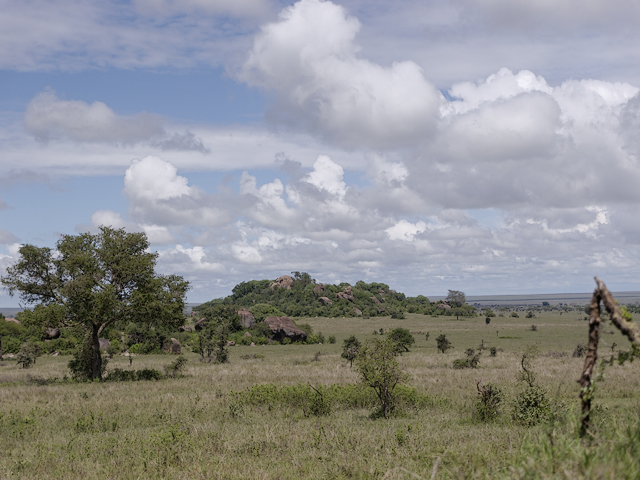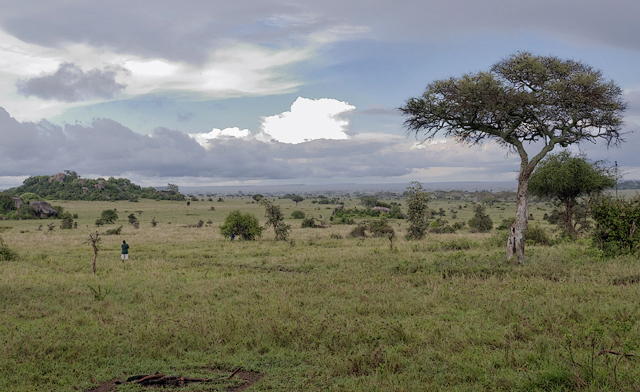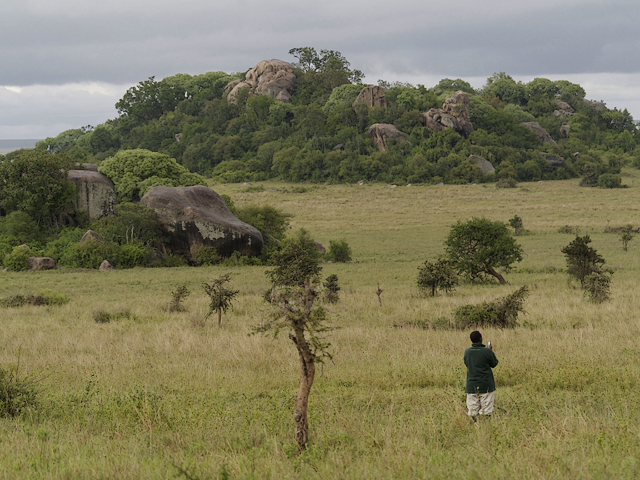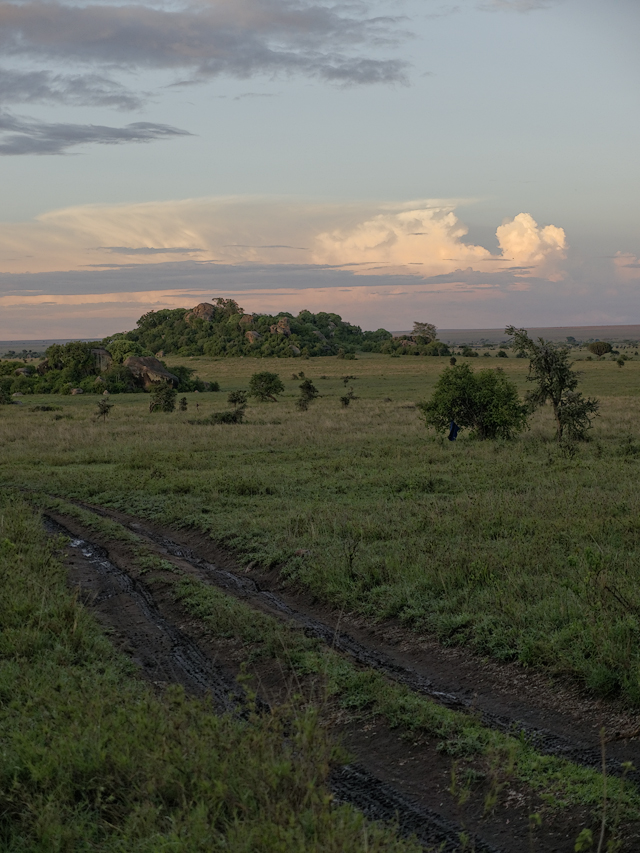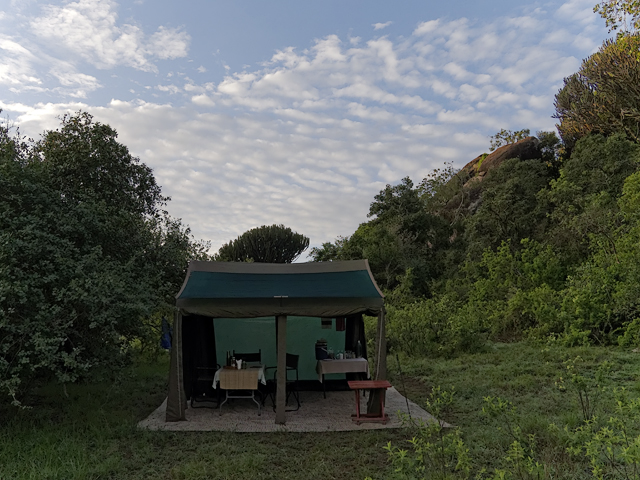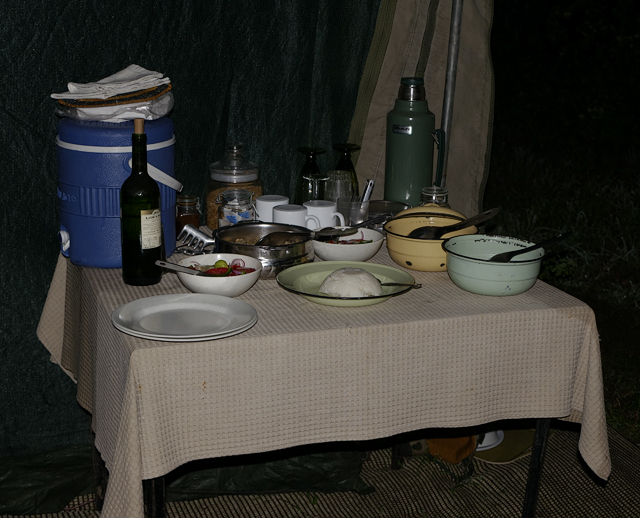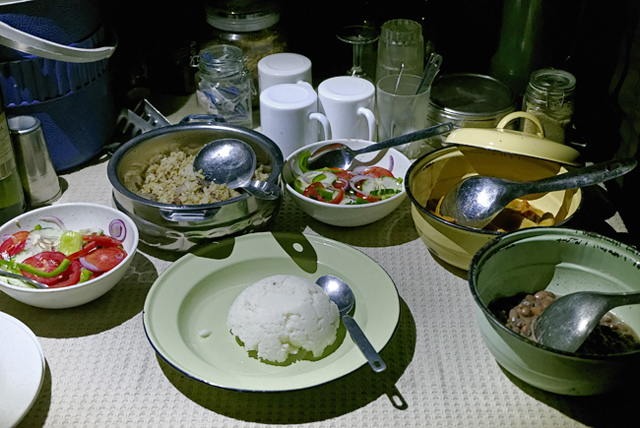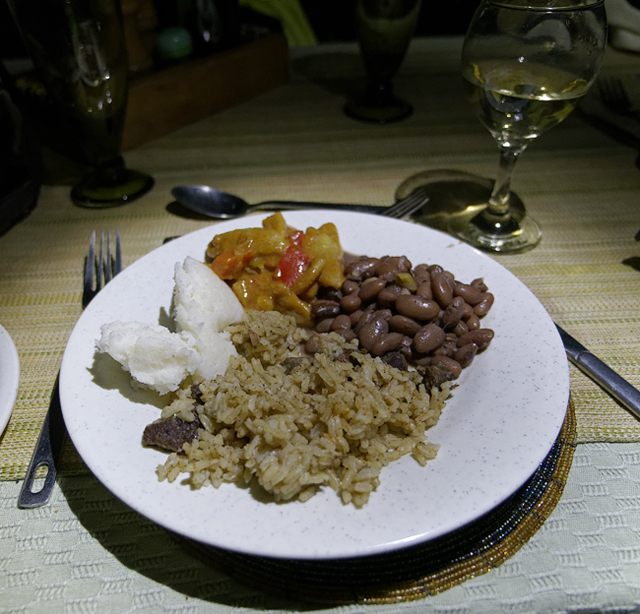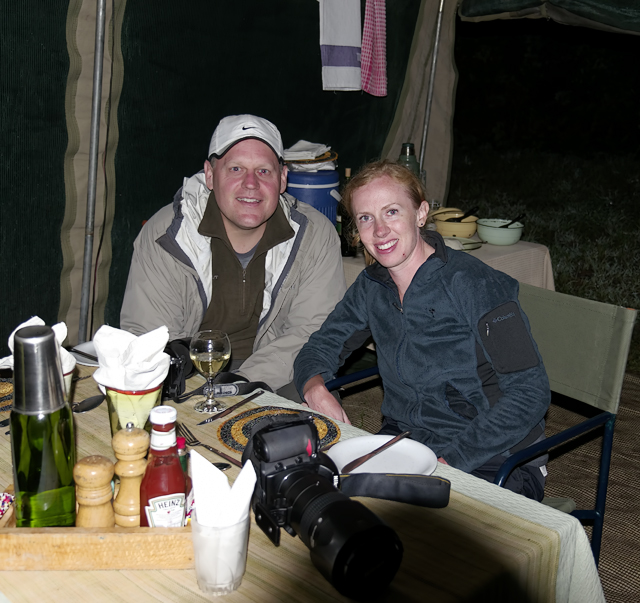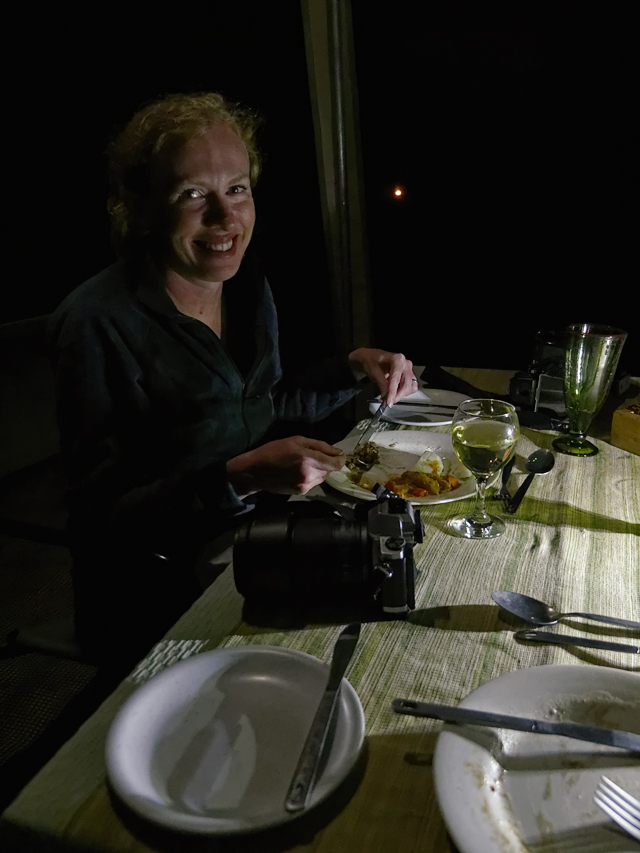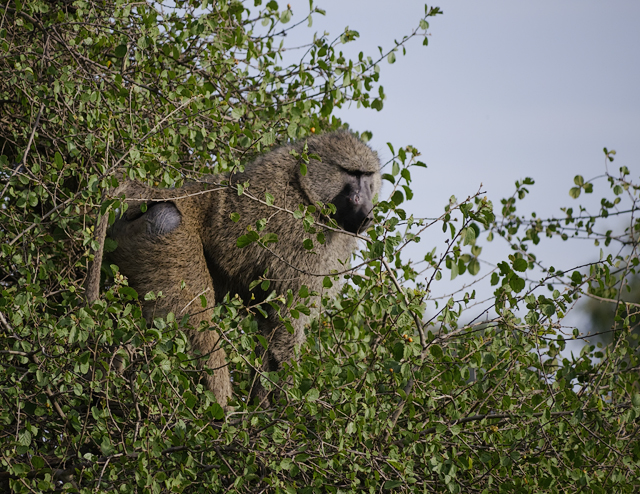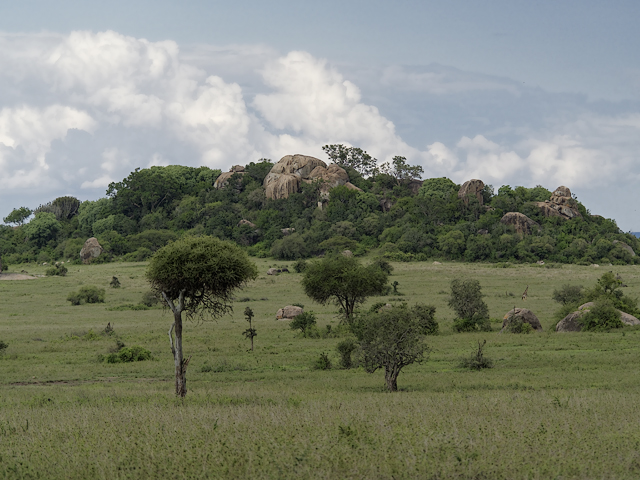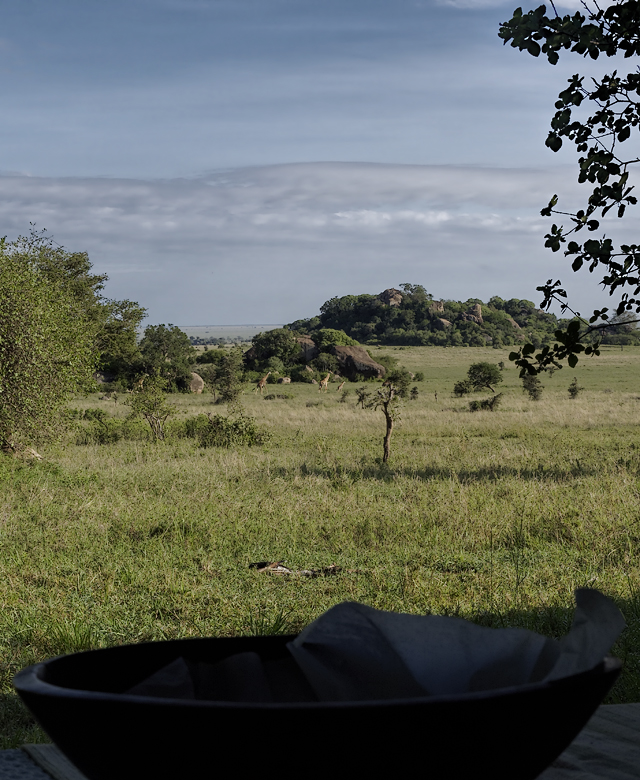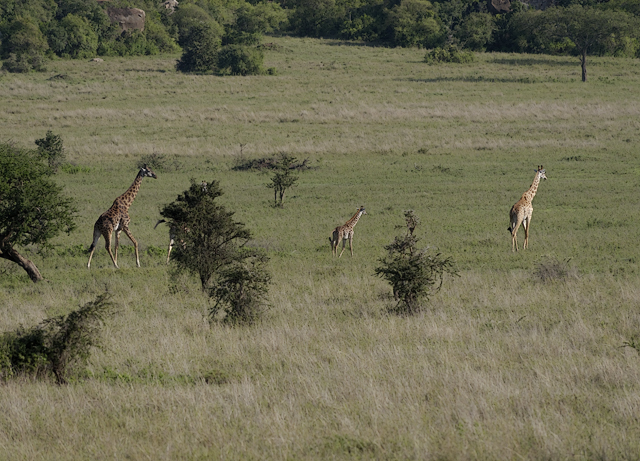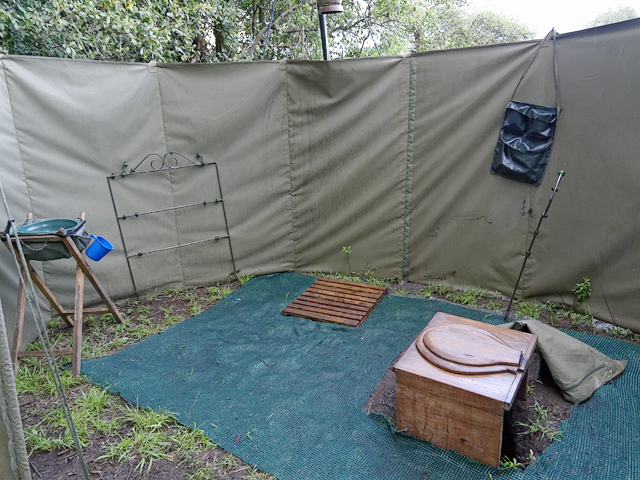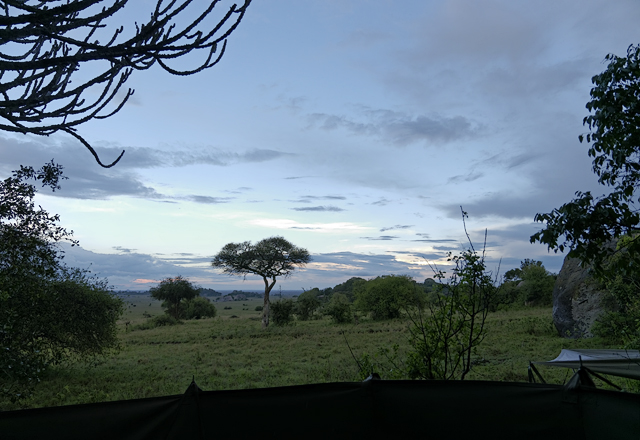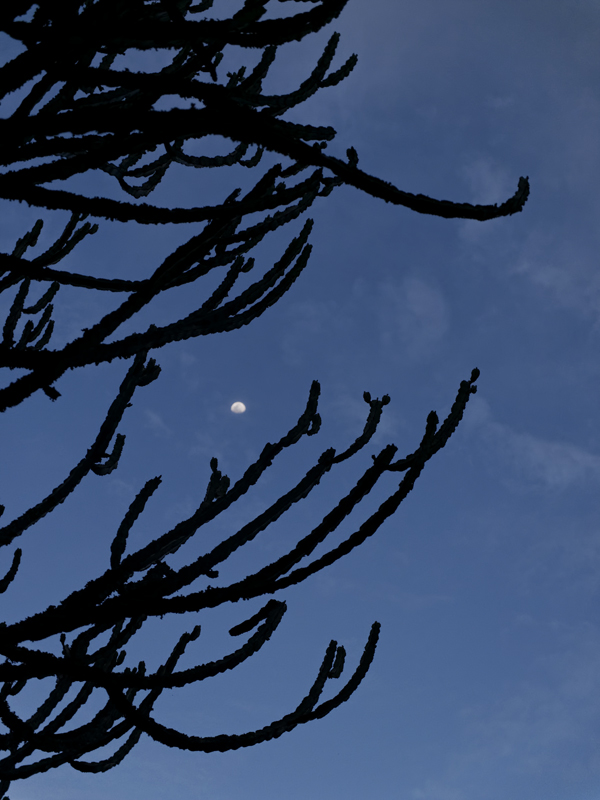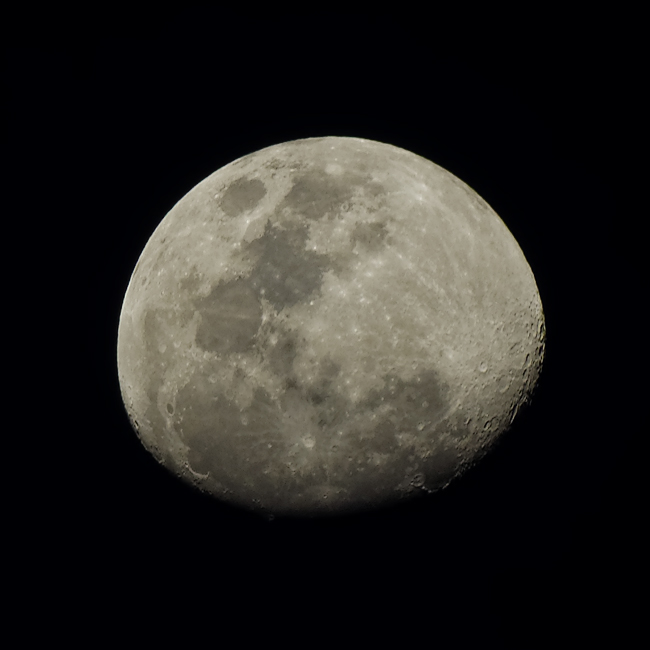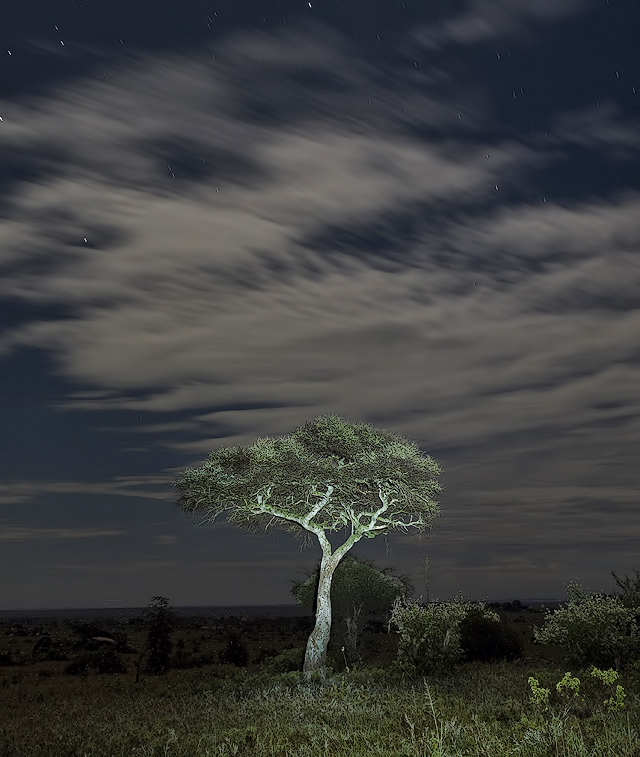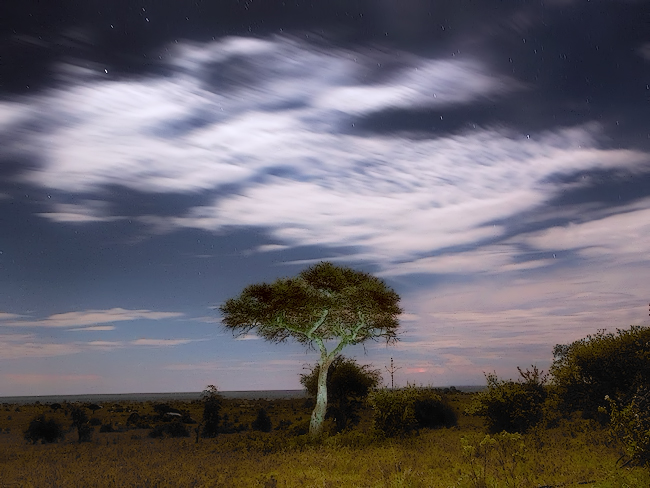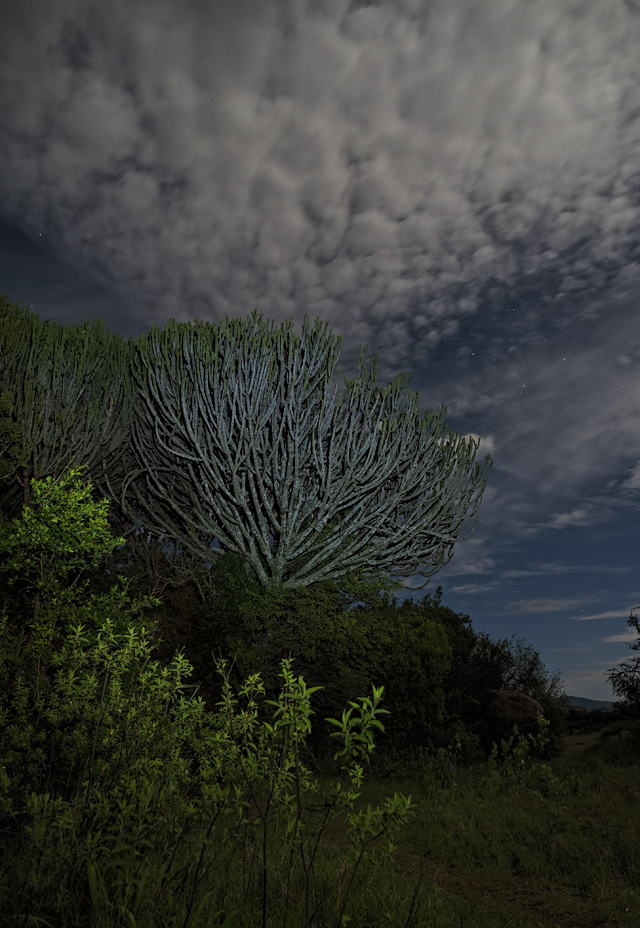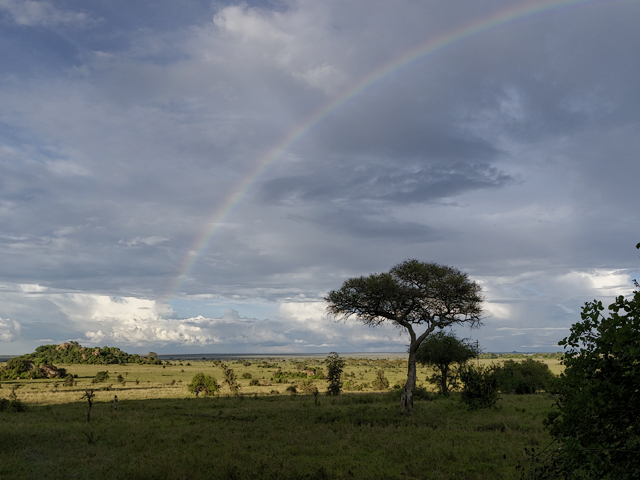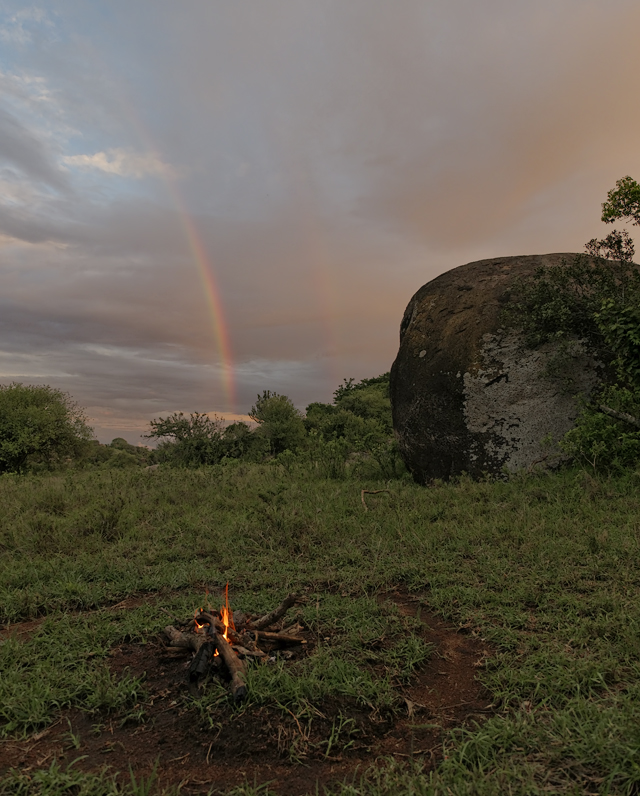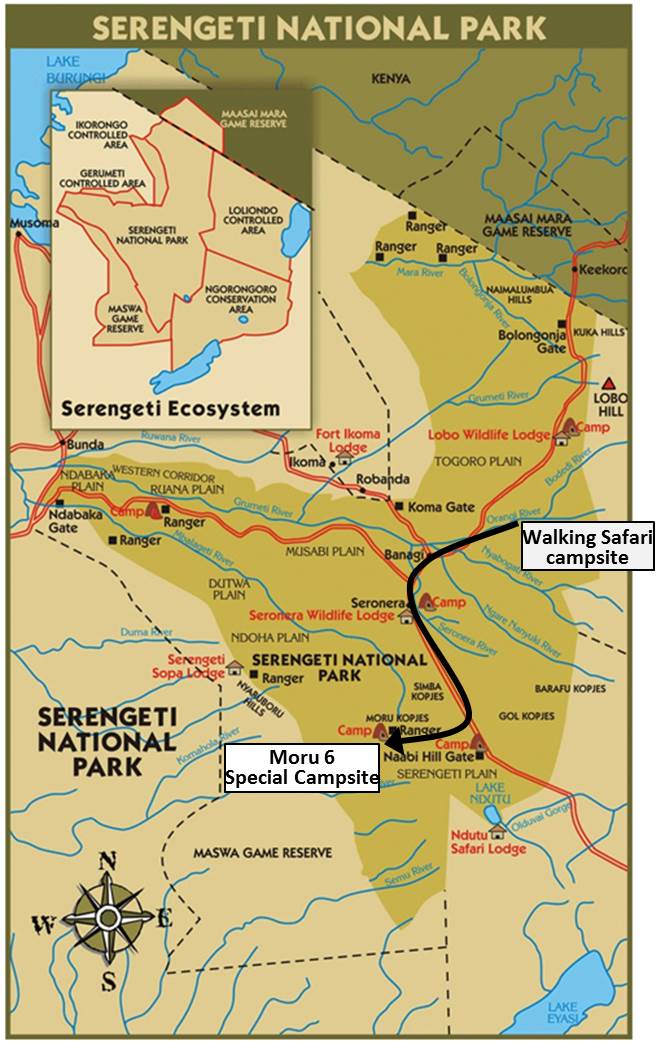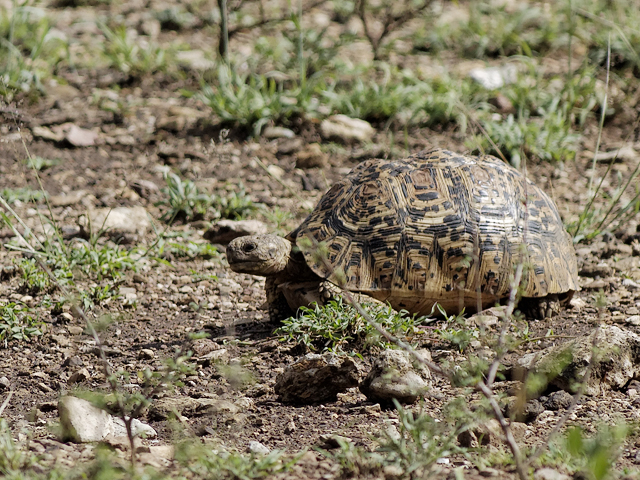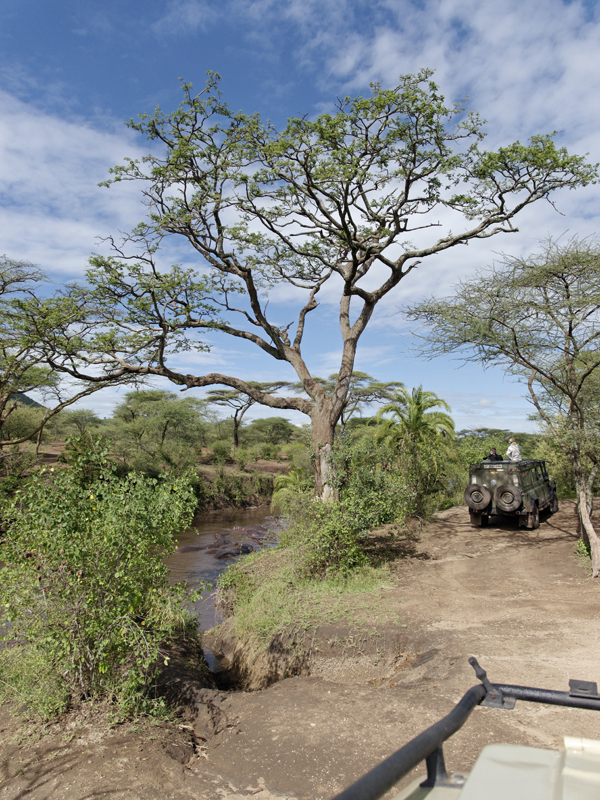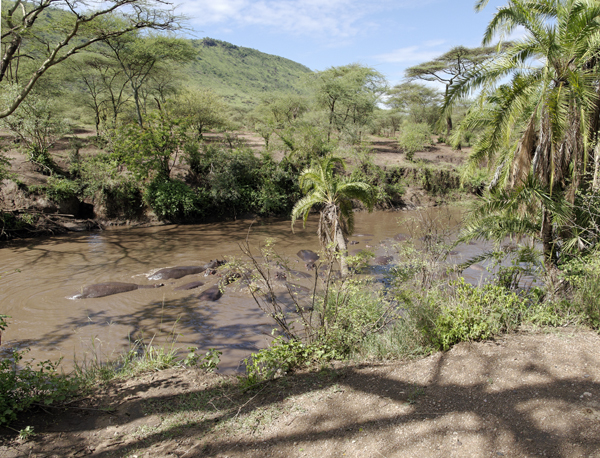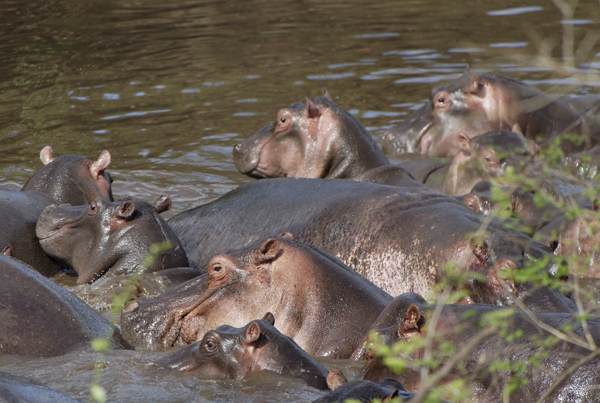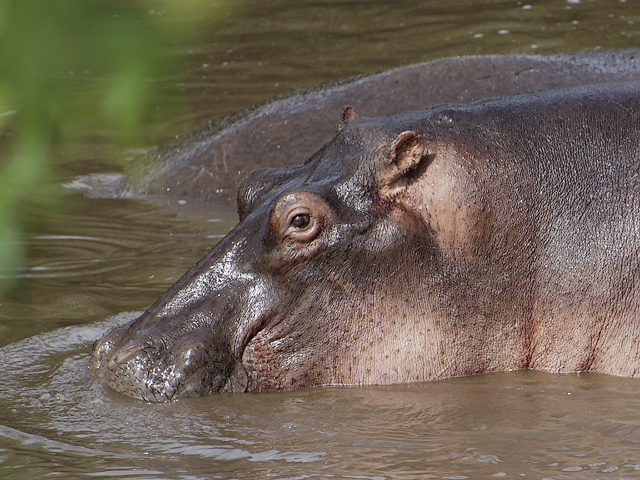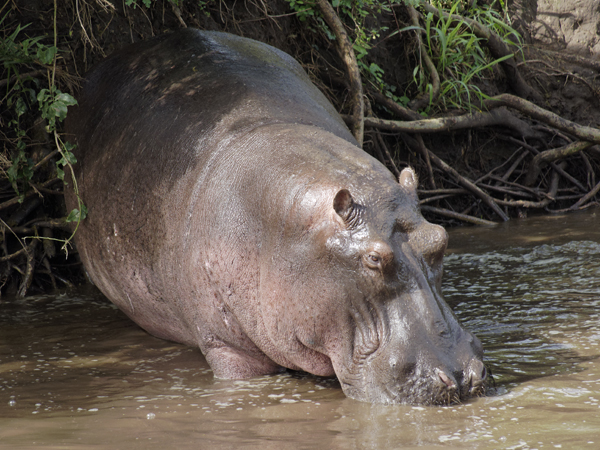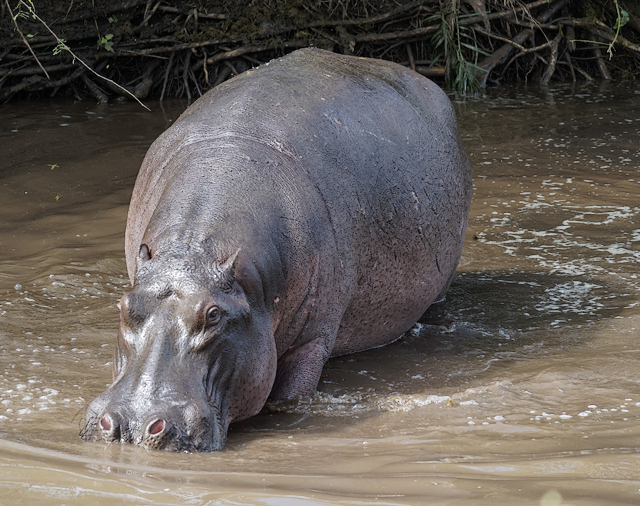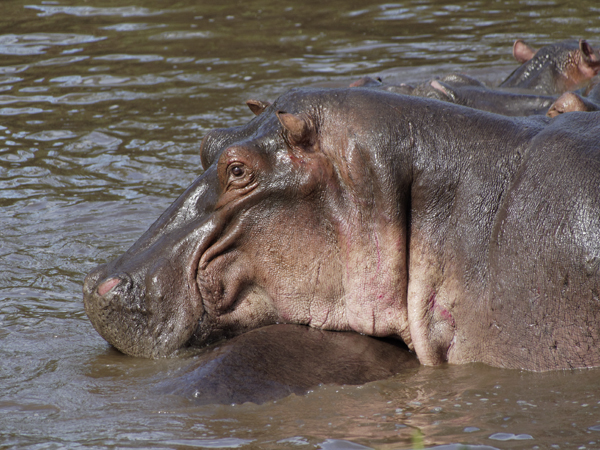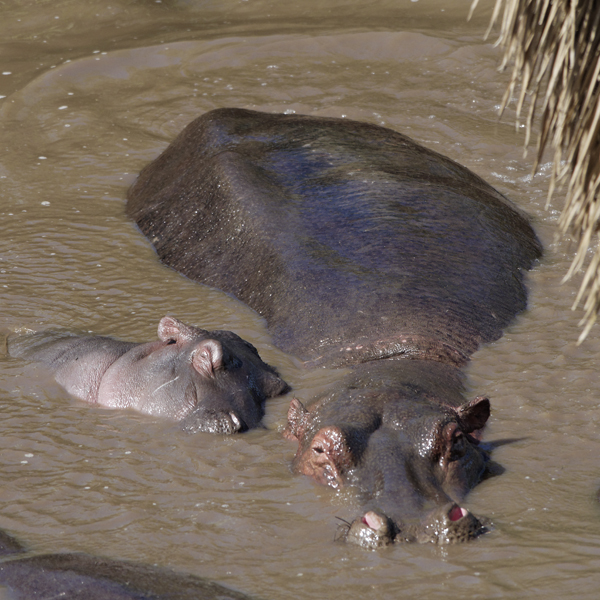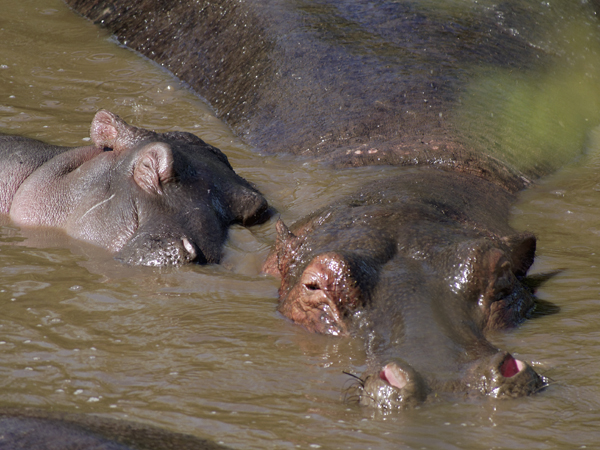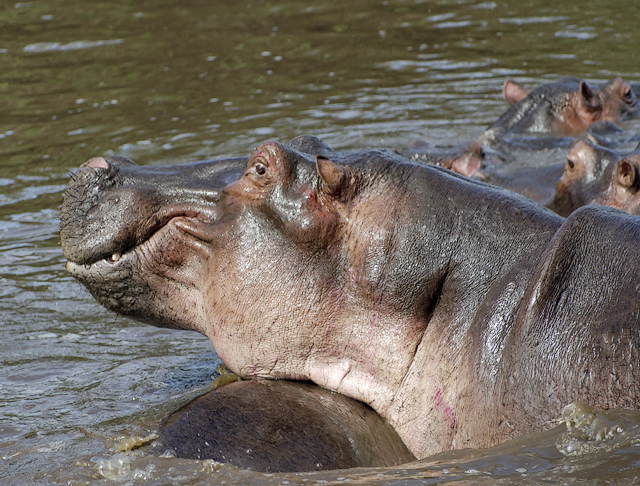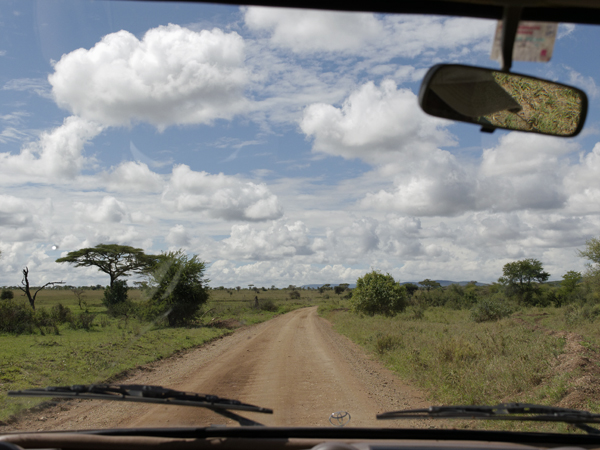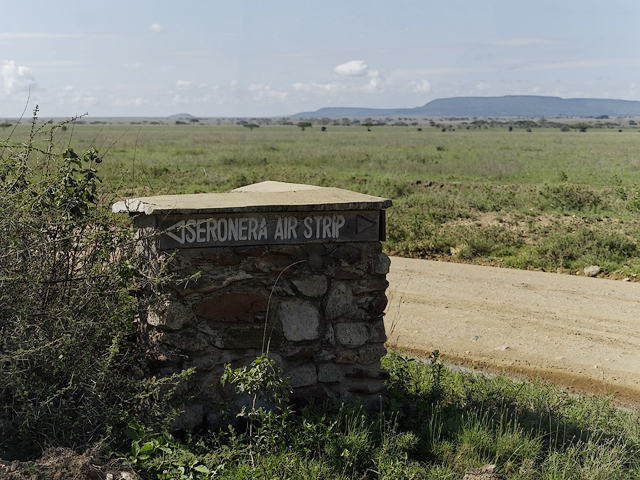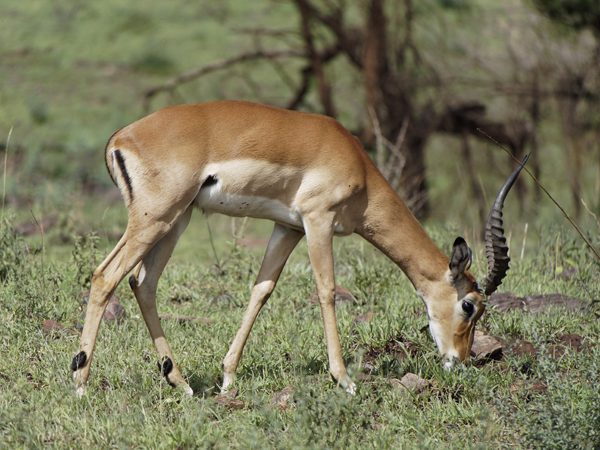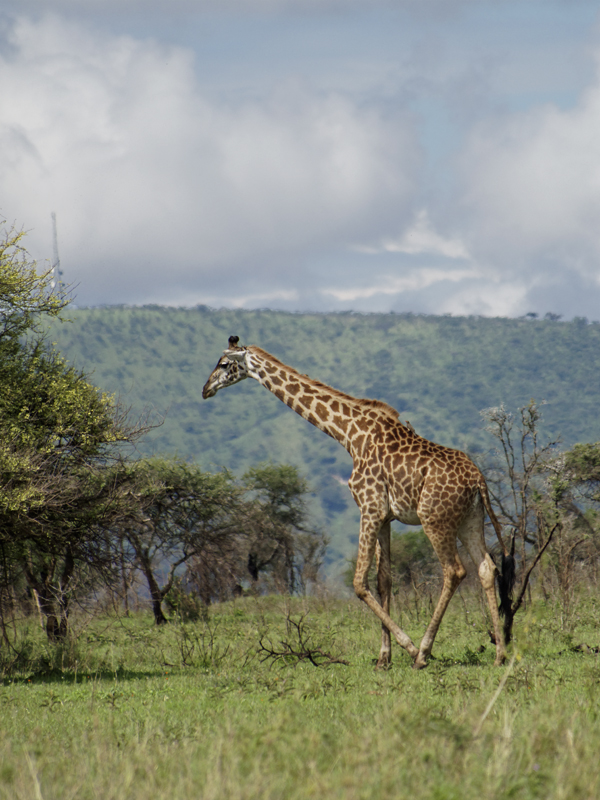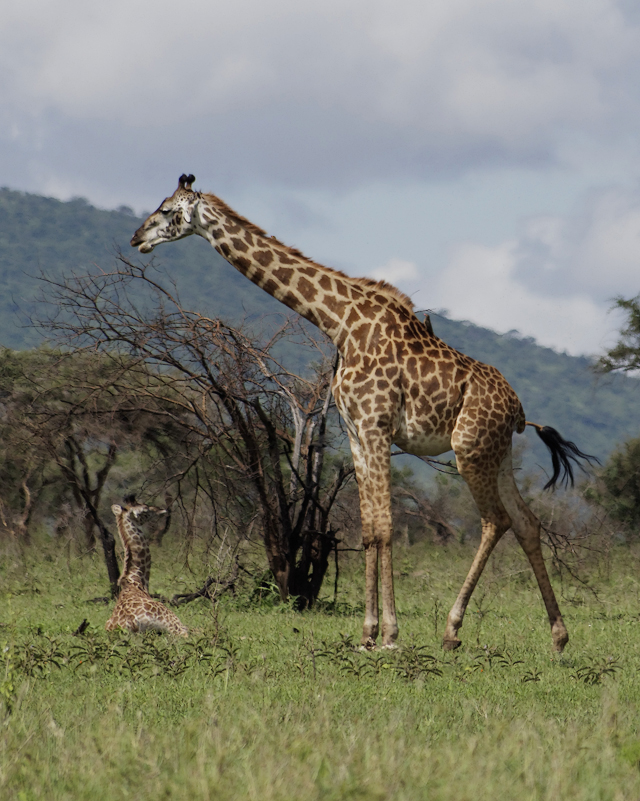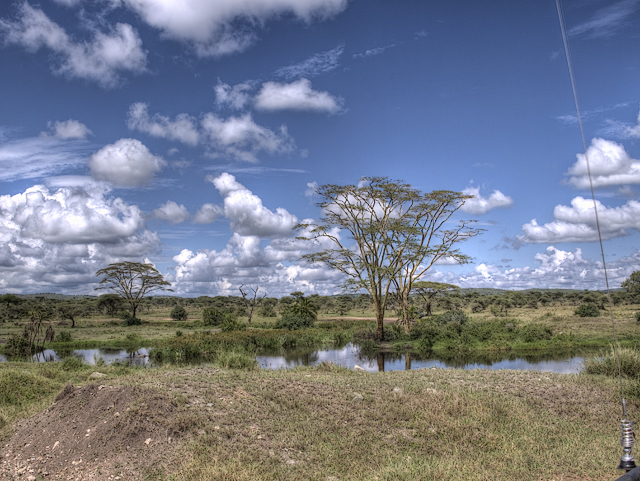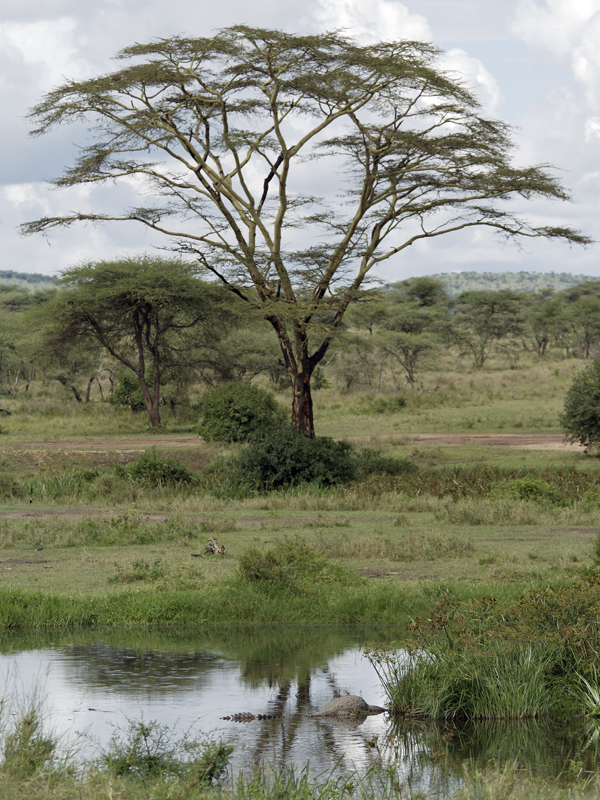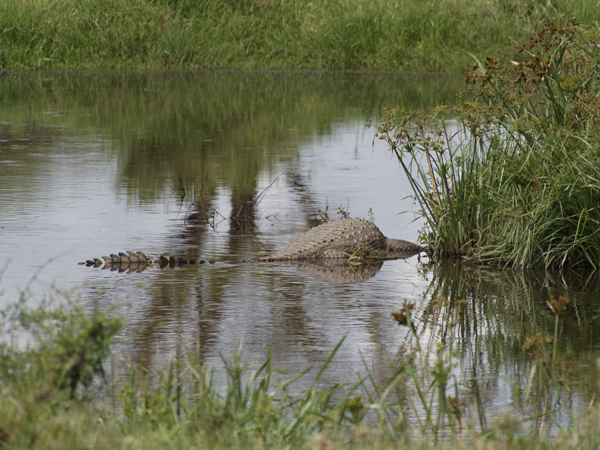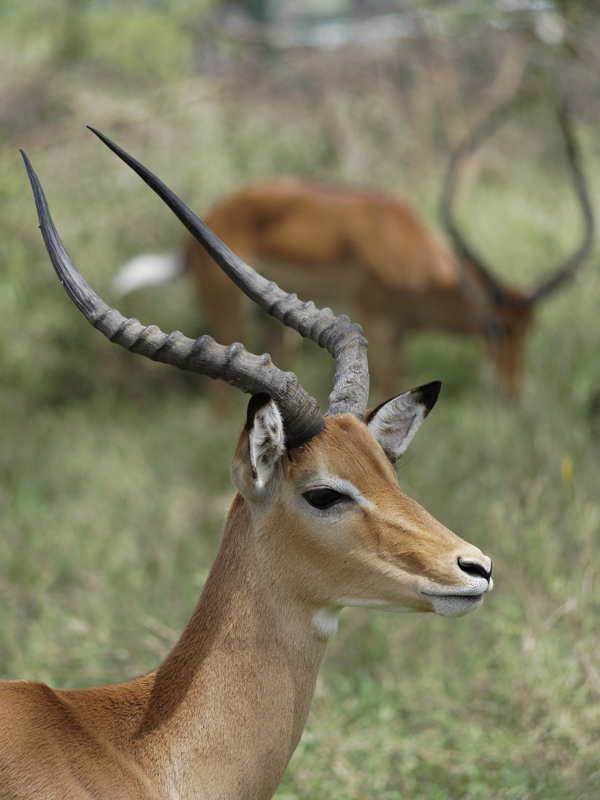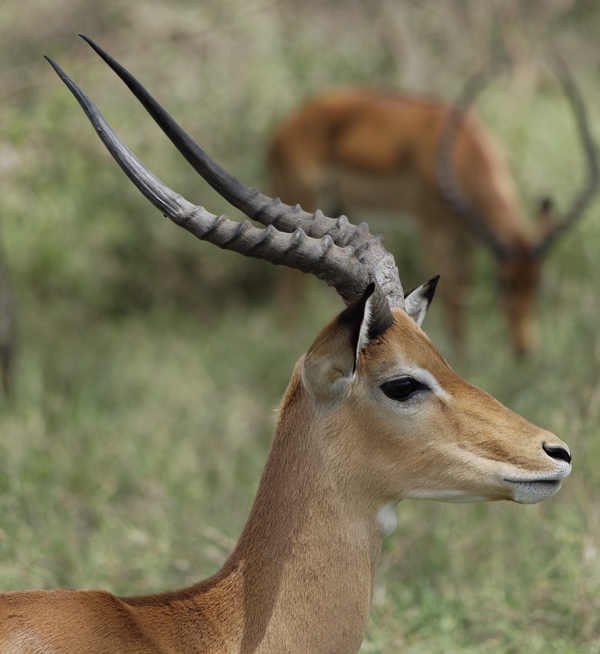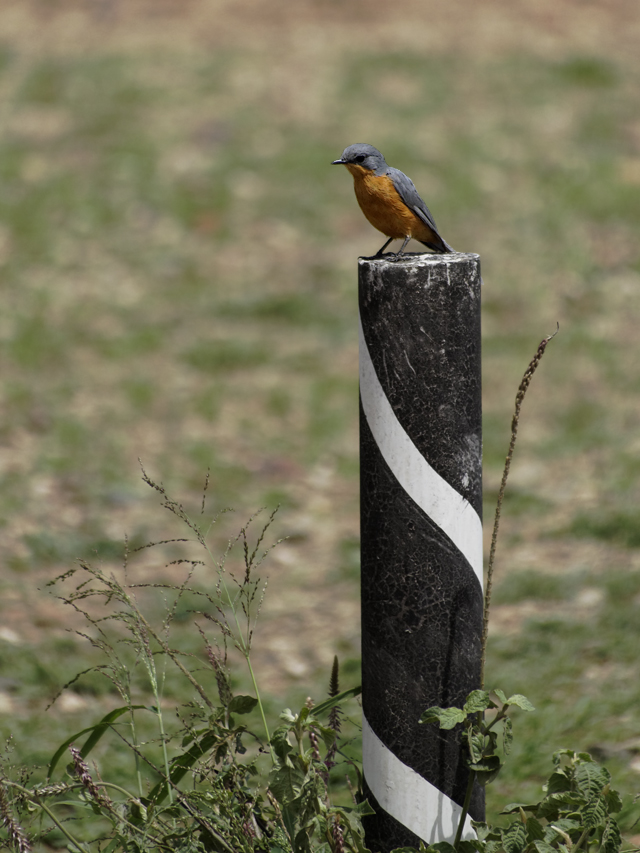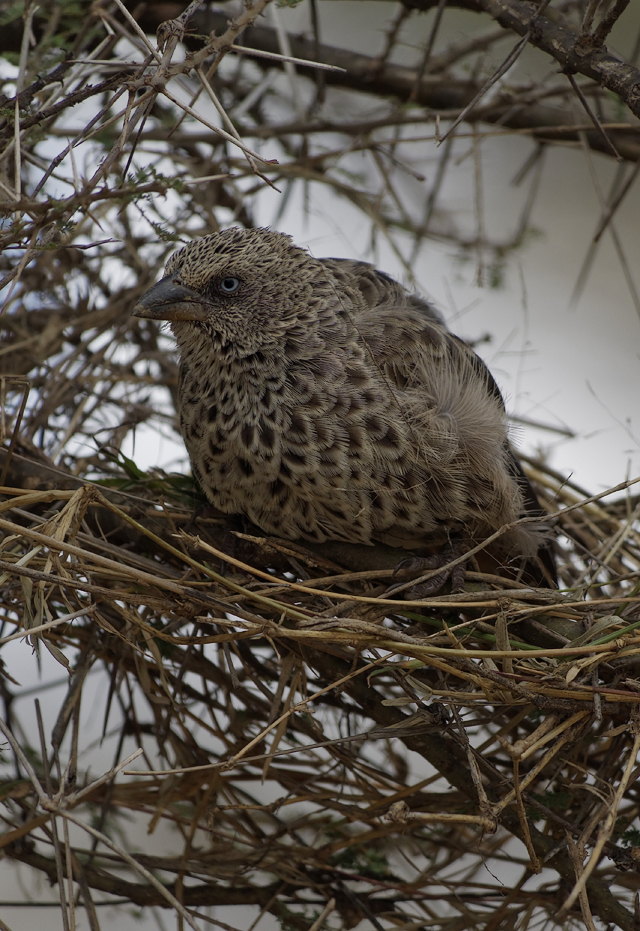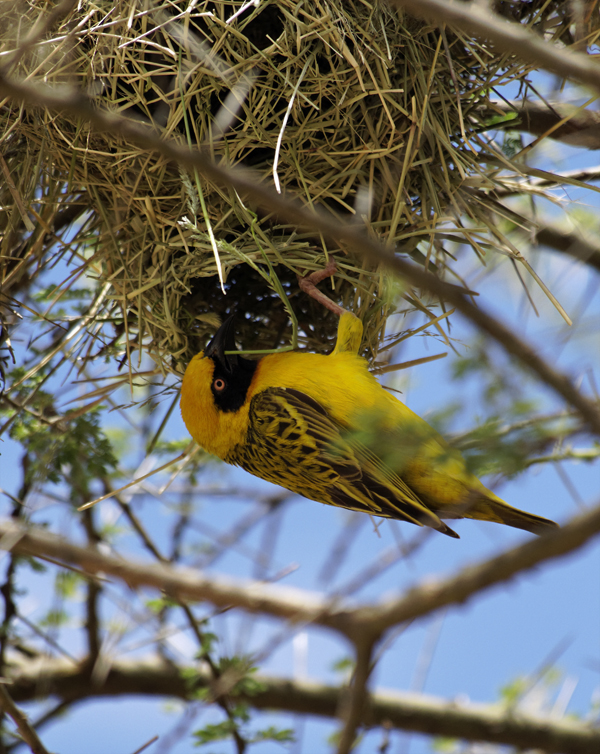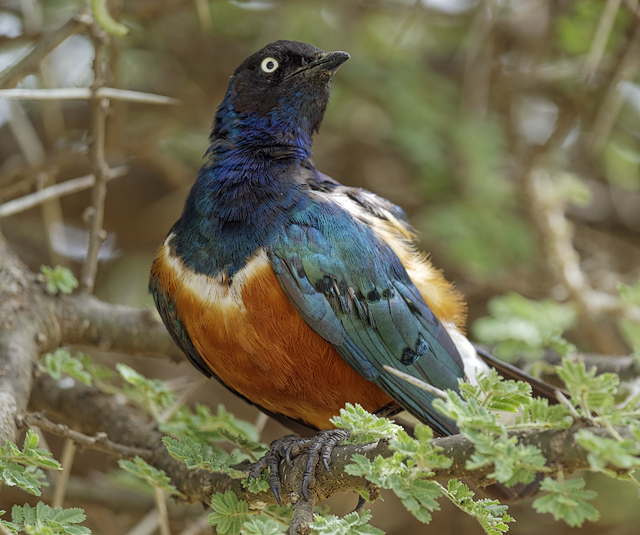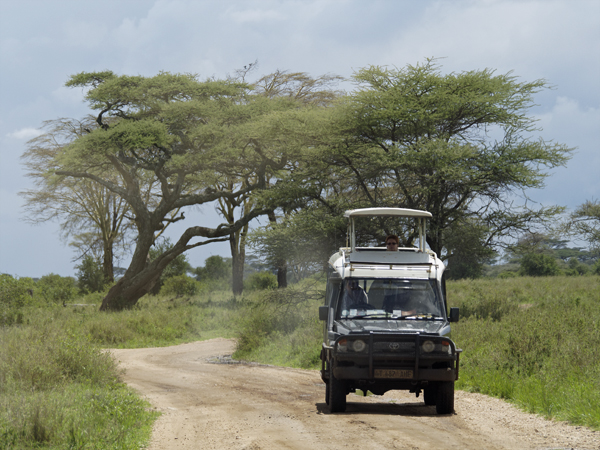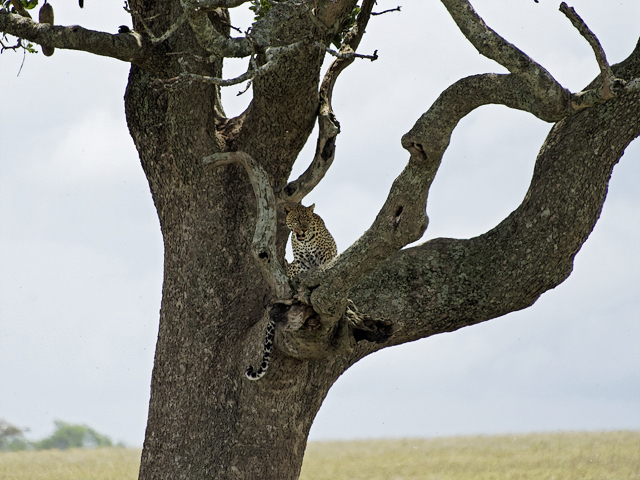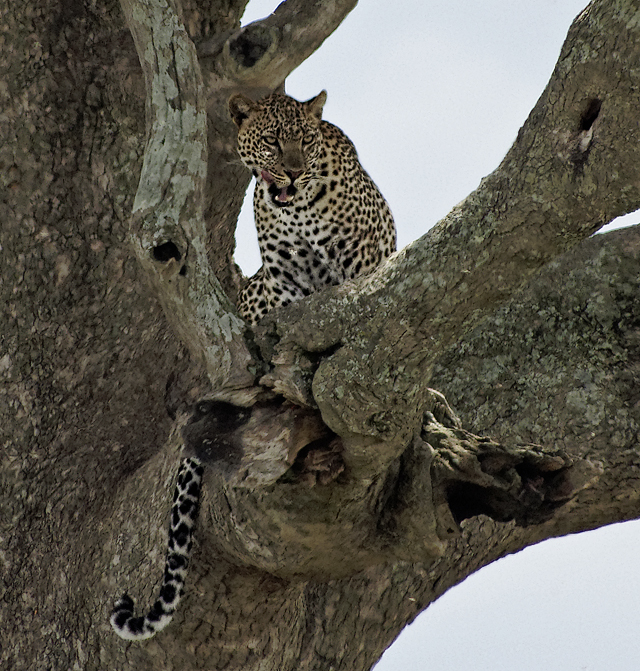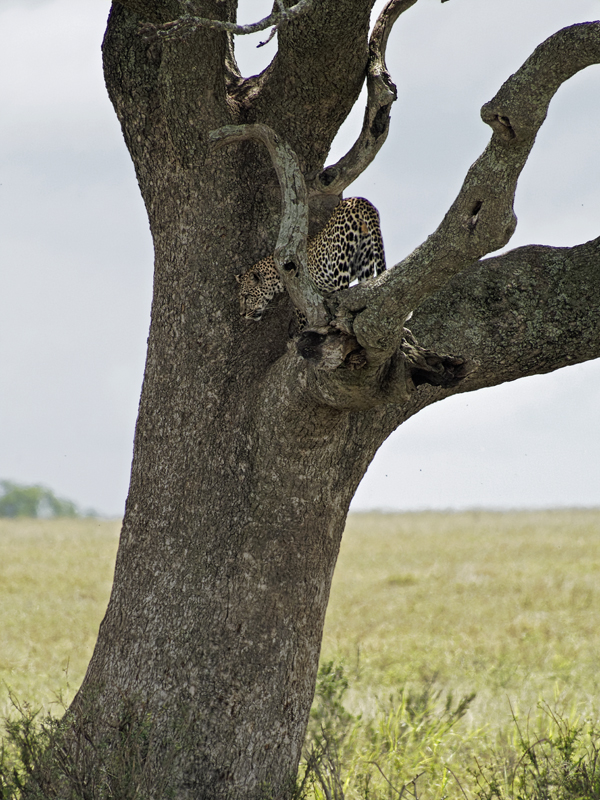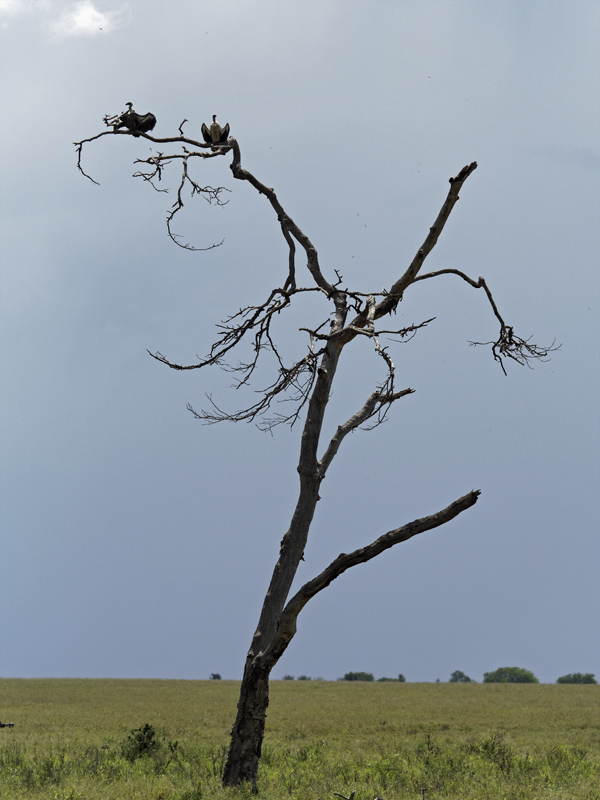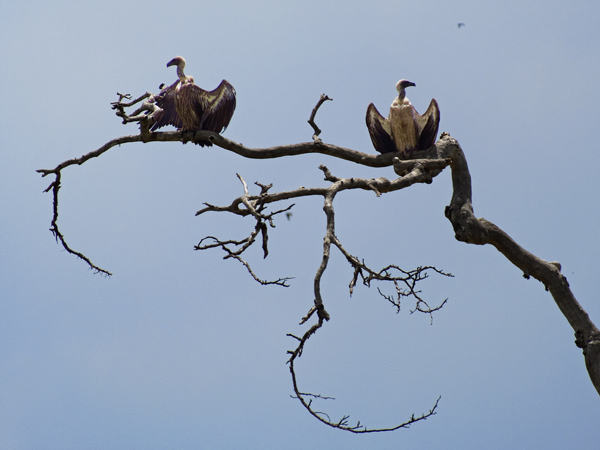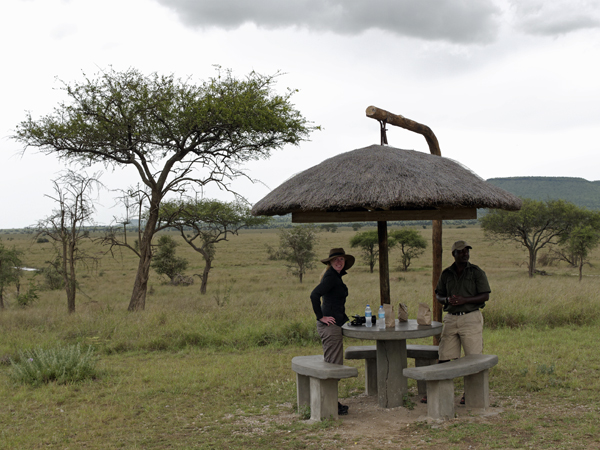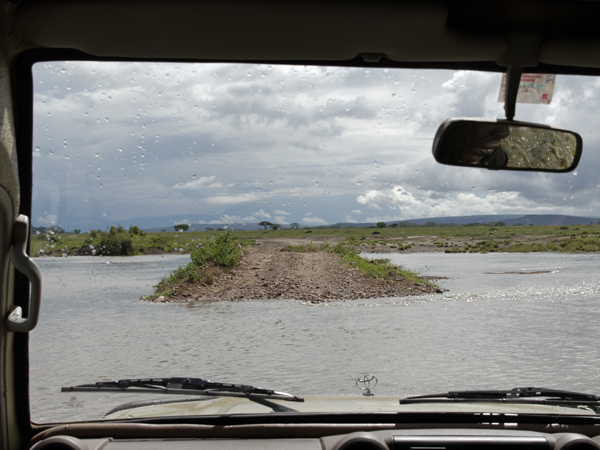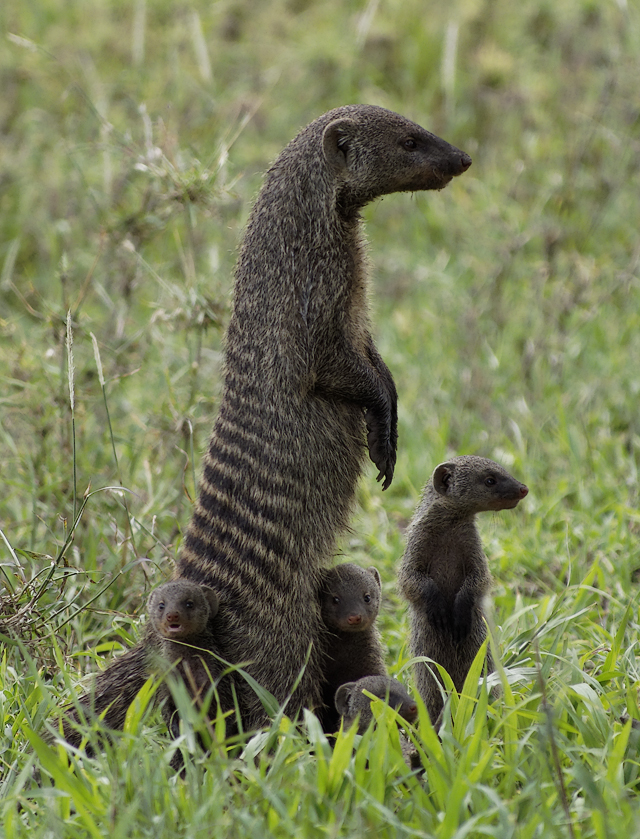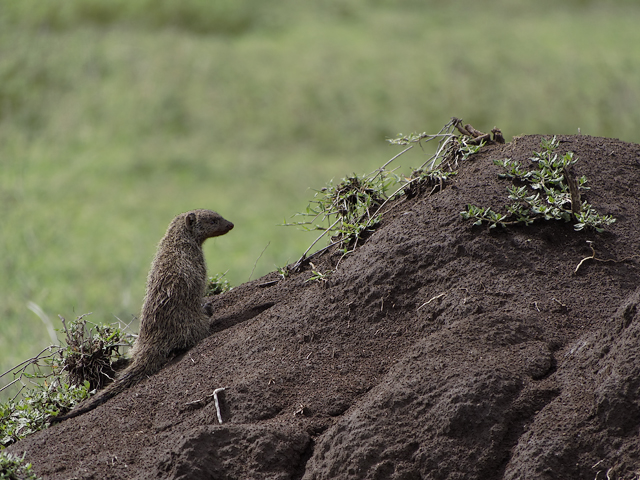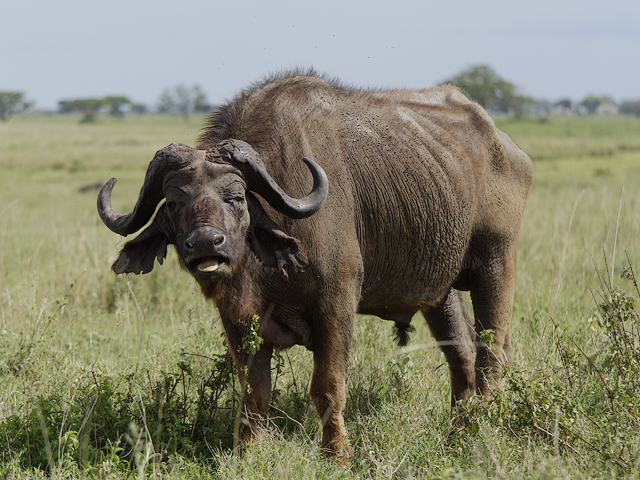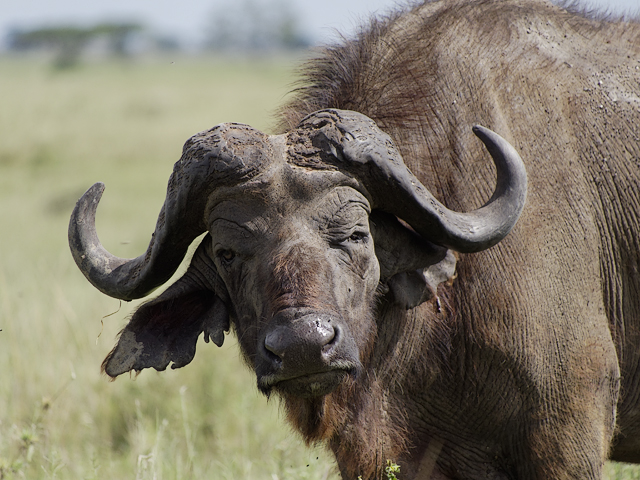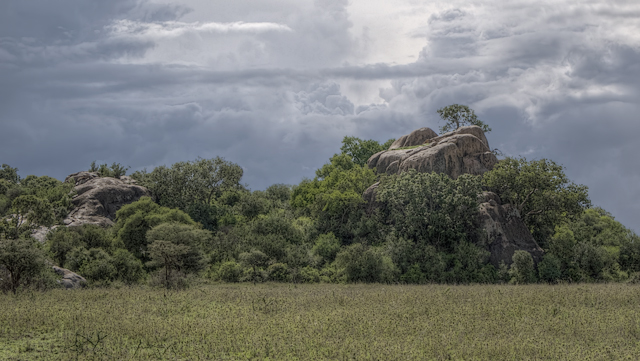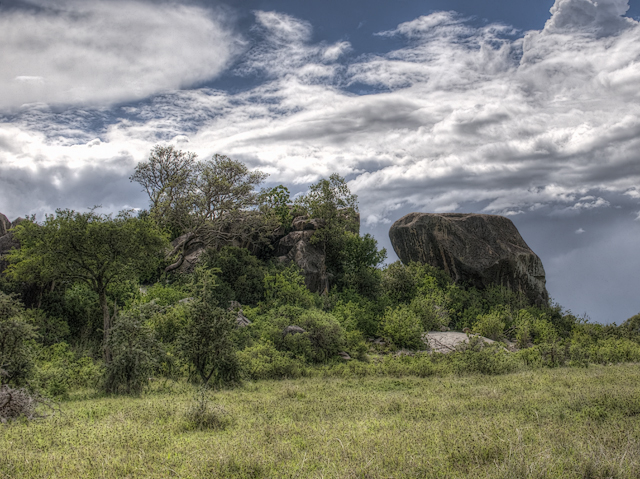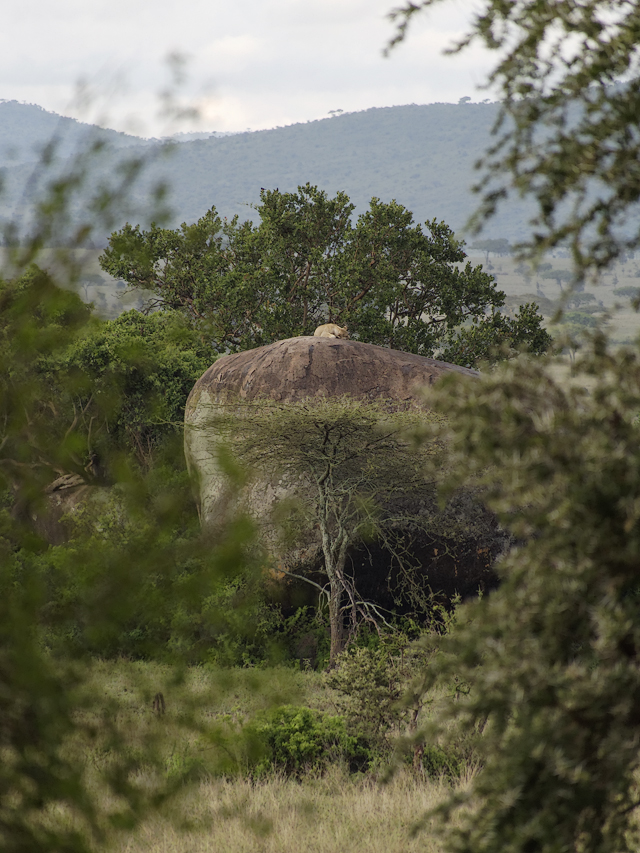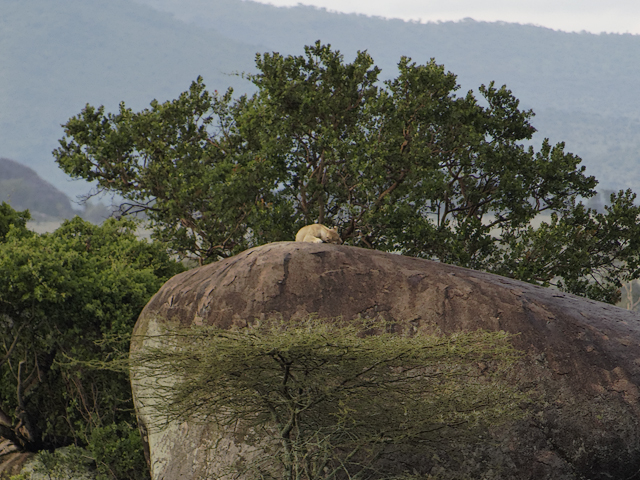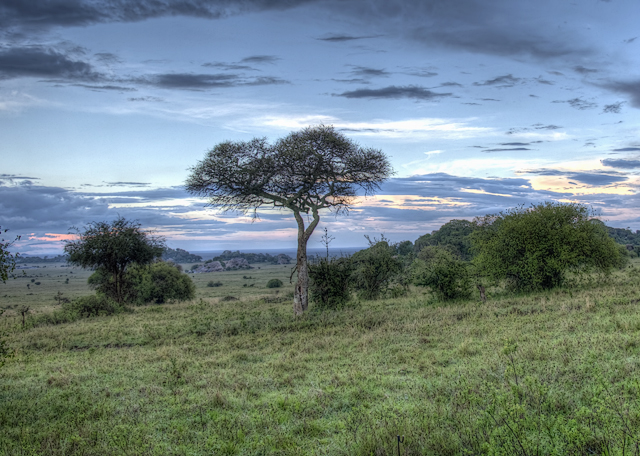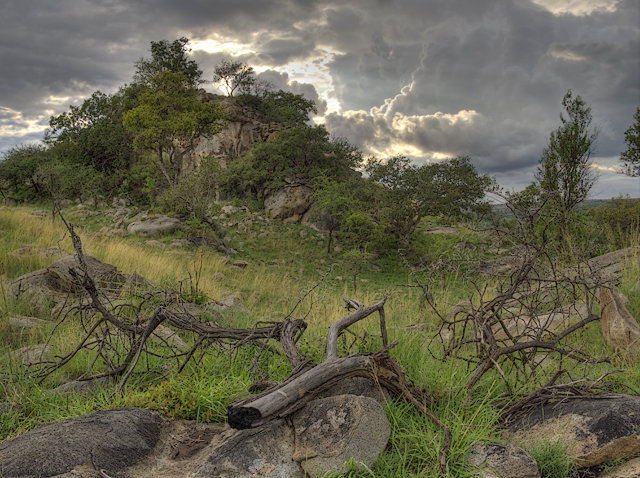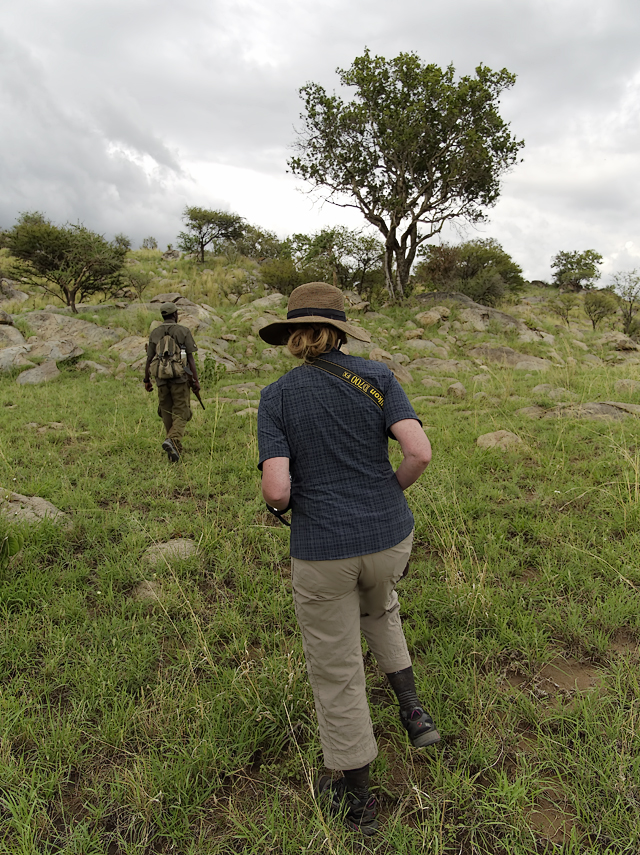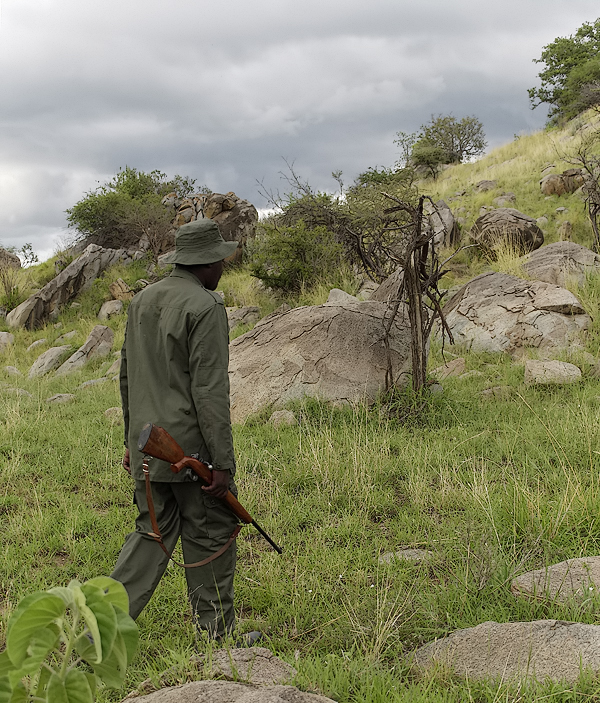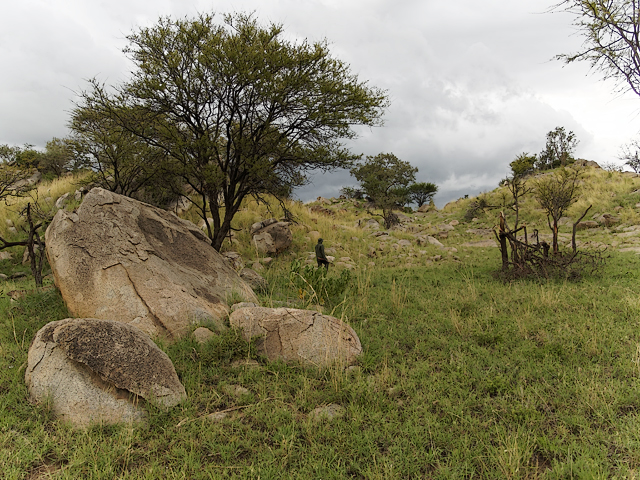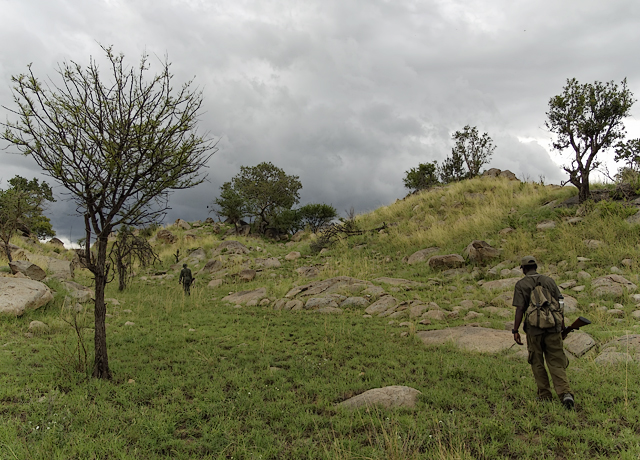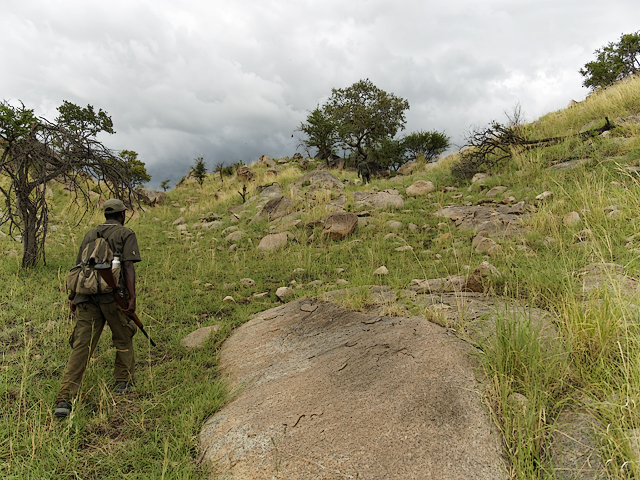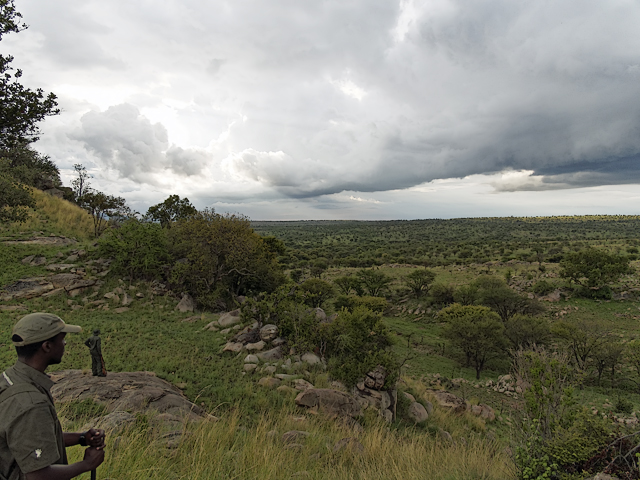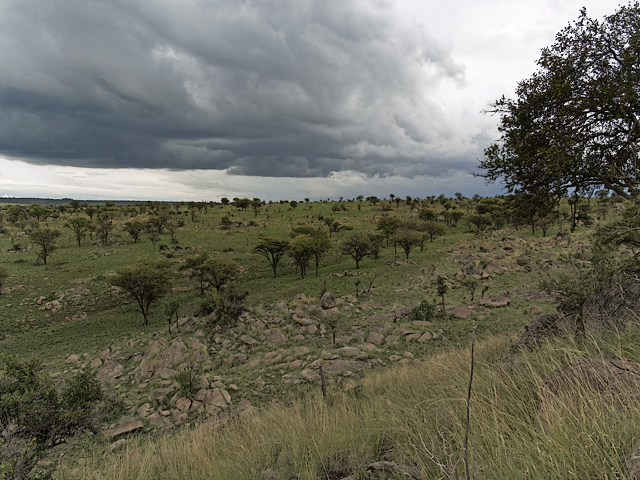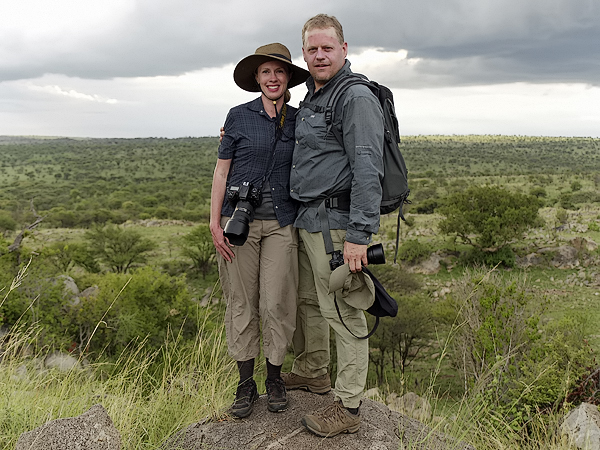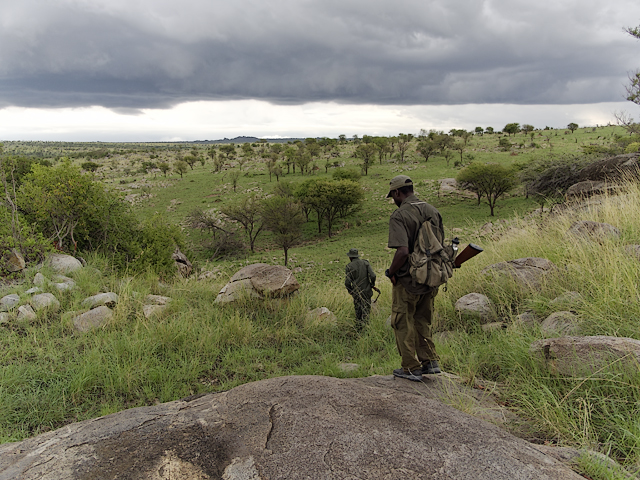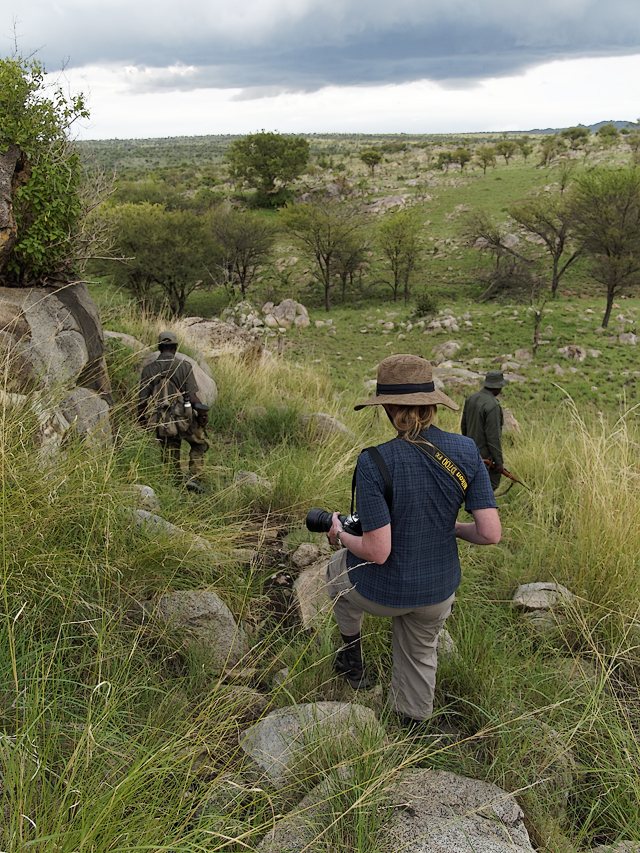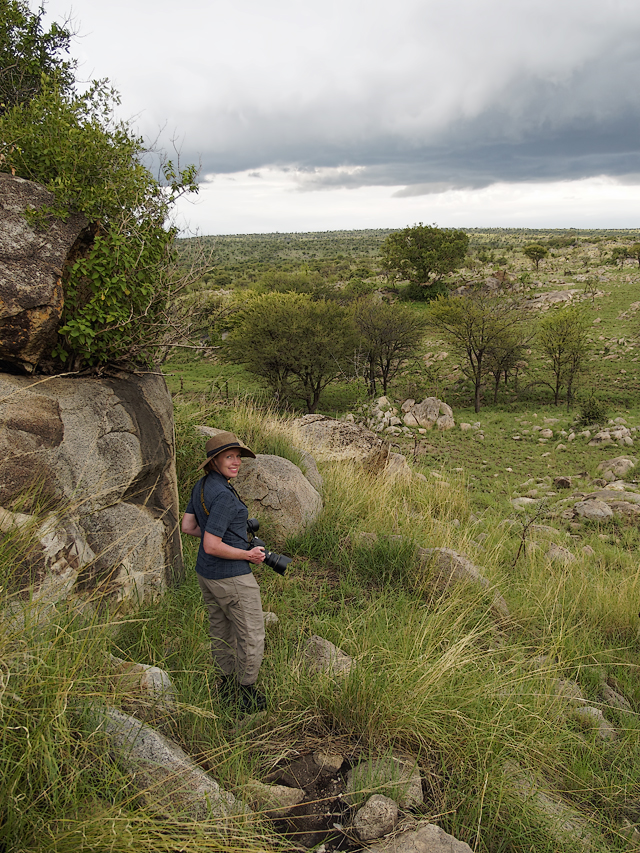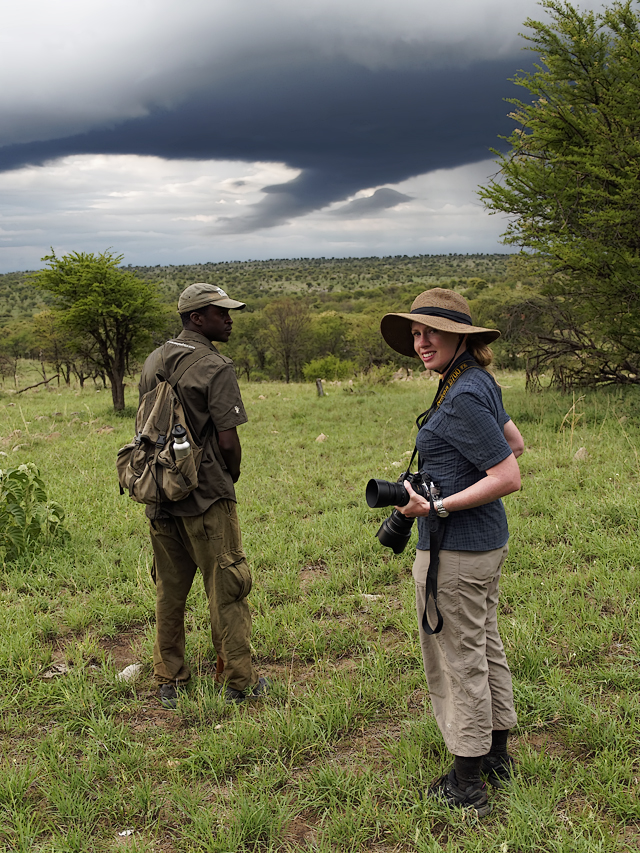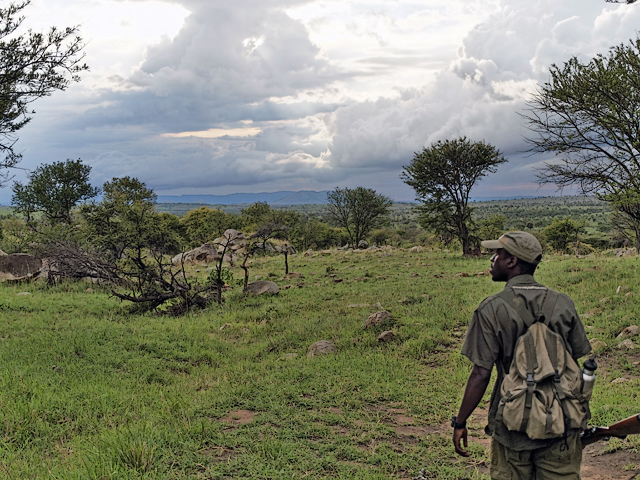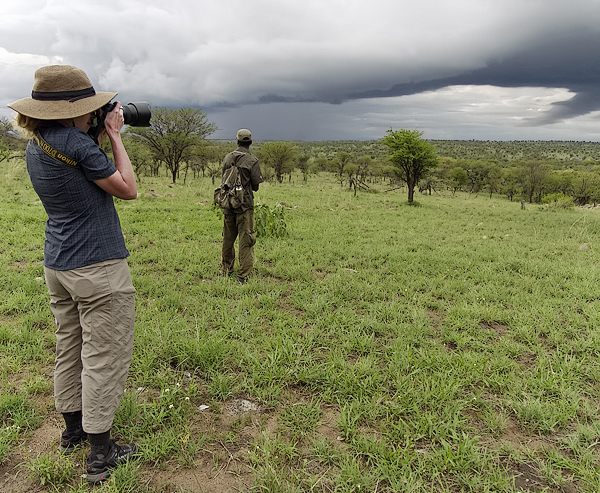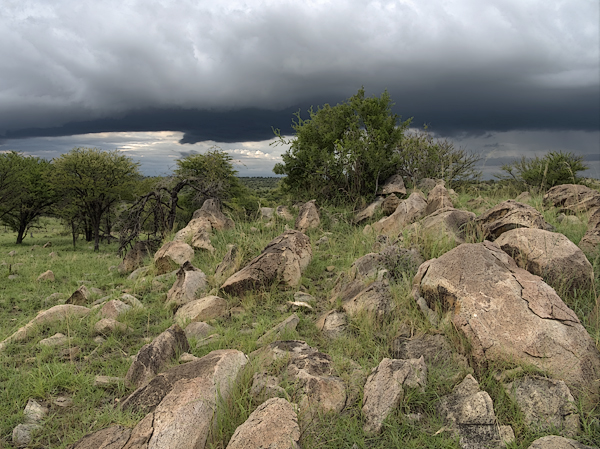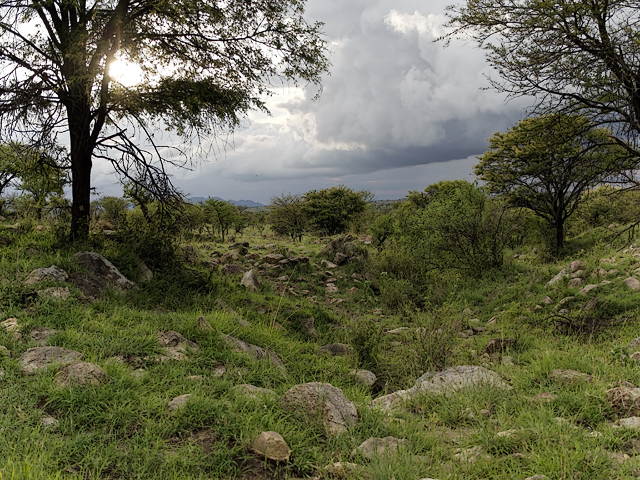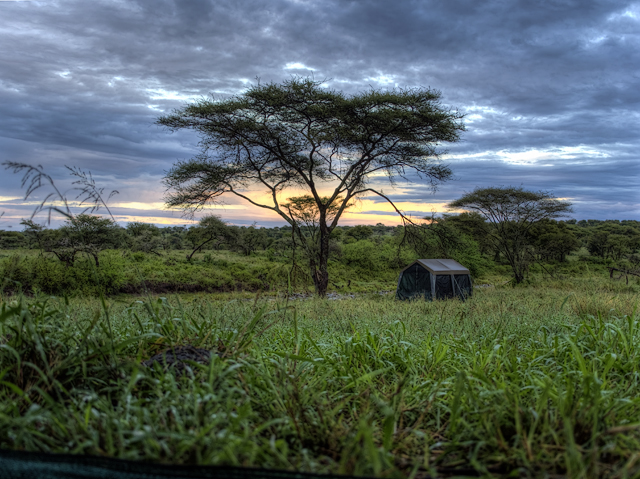Tanzania Holiday 19: Serengeti Game Drives Day 1 - Morning
 Sunday, May 18, 2014 at 2:06
Sunday, May 18, 2014 at 2:06 So we finally arrive to the final day of the safari portion of our honeymoon. Like yesterday, we spent the entire day on game drives in central Serengeti National Park. We have a morning drive, lunch, and then an afternoon drive.
We started at our camp in the Moru Kopjes, wandered the various roads up to Seronera, then turned back.
We trust our guide Prim to make the right choices/guesses as to where we will find wildlife to see.
He is also active on the radio, to hear from (and share with) other drivers, when & where things are found.
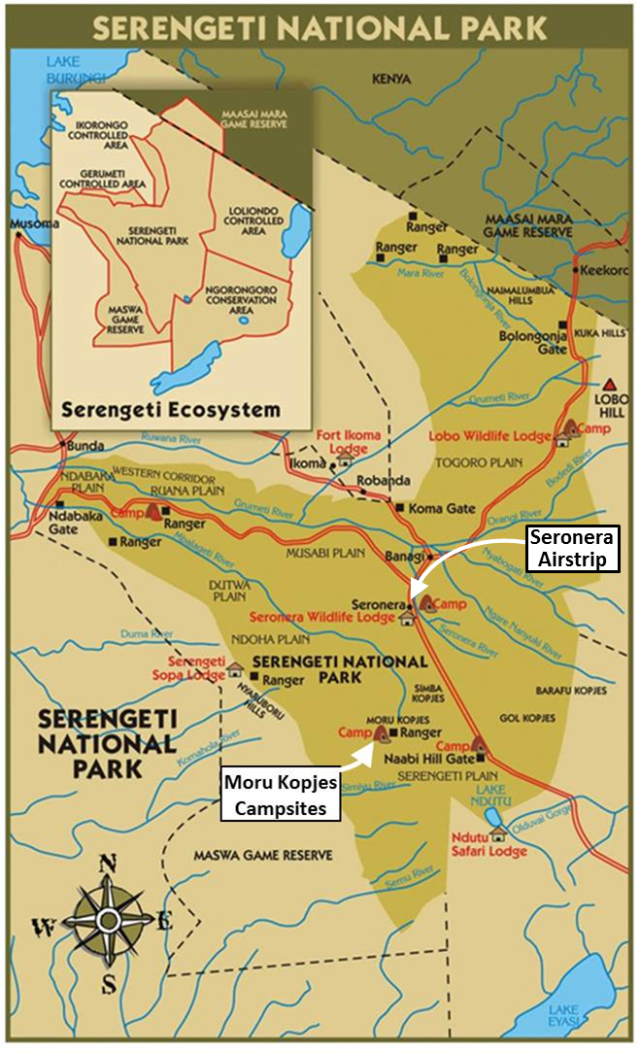 Source: www.tanzaniawildlifesafaris.com
Source: www.tanzaniawildlifesafaris.com
The start: on a nearby kopje, not far from our campsite, we saw two hyenas sleeping the morning away.
These might have been some of the ones we heard during the night in our tent:
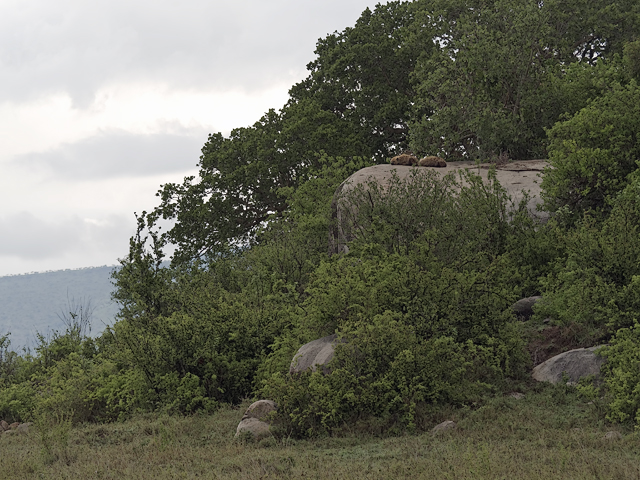
Like the big cats, they use elevated places to try and avoid the insects as much as possible.
In a nearby tree, a pair of lovebirds were active. The lighting was a bit harsh, but you get the picture:
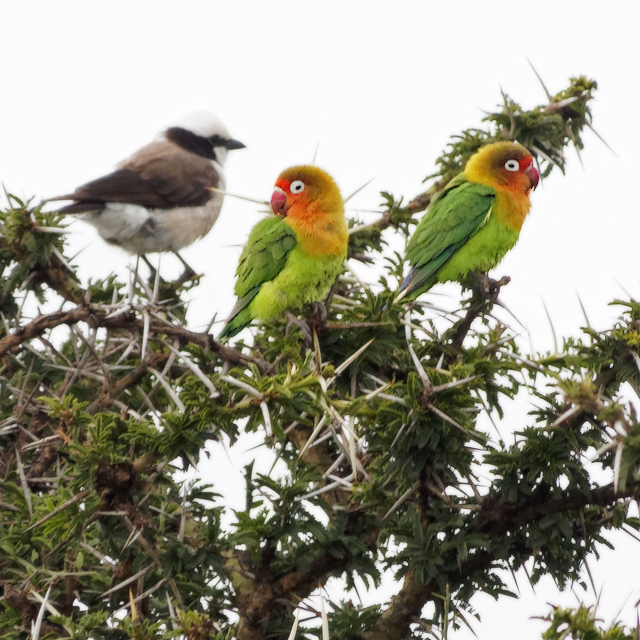
A giraffe was eating quite near the roadside:
He became more cautious when we stopped to photograph him:
The road wandered through the rolling hills. At one point, we had to wait for another jeep to pass...
... but it didn't seem to be moving. Then we saw why - its passenger was photographing something:
This is the view from the Land Cruiser:
It was cloudy that day, but blue sky was poking through here and there:
In the grass to one side we spotted a mongoose:
Further along, there were vervet monkeys. This one's breakfast was flowers:
Another was sitting up to dine on the right part of the favored plants:
A pair of the younger ones were just playing:
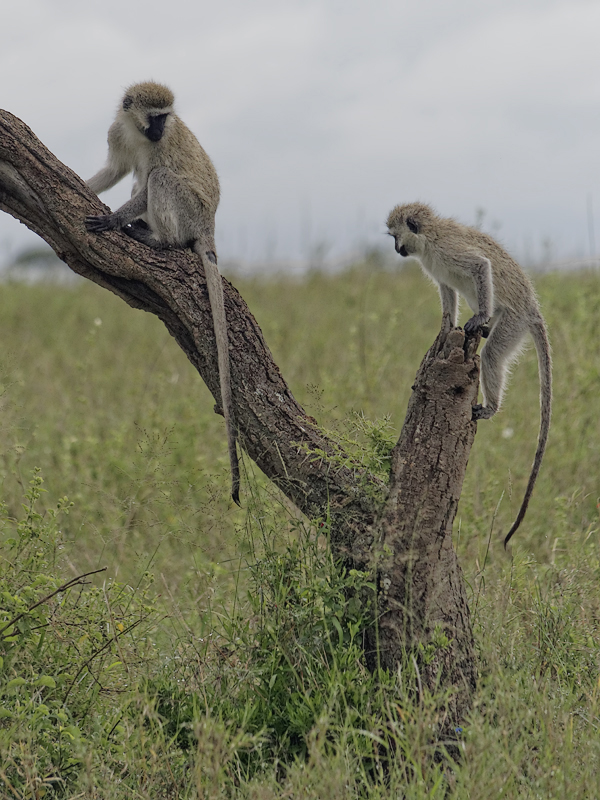
We got a good view of a secretary bird in the grass:
Sometimes the road got so bumpy that the guide vehicles started forging a new path across the plain:
To the delight of Frau A, our guide Prim spotted a leopard lounging in a tree:
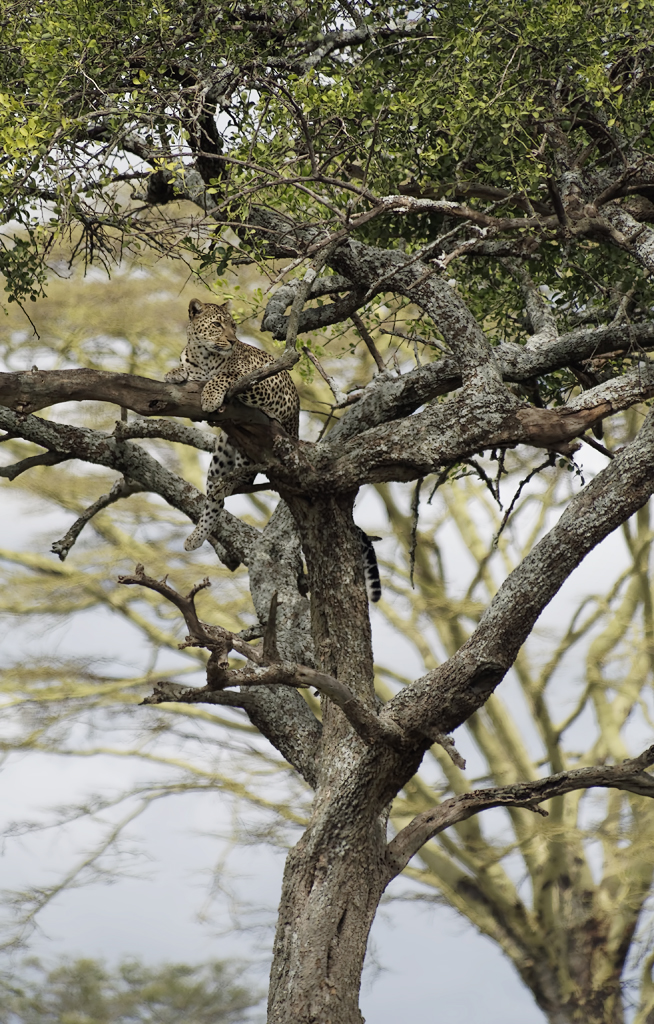
Here's a cropped version to simulate a "close-up" shot:
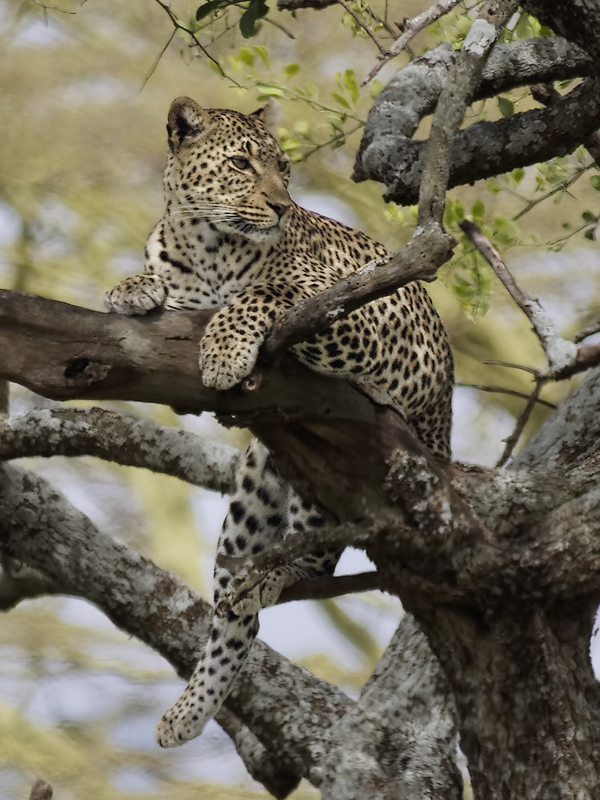
Prim said that he/she looked young - and most likely mom was not far away on the ground, but hidden:
He wasn't really active, but at least would look left & right to give us different views of his/her face:
It stayed still enough that we could experiment with single-shots...
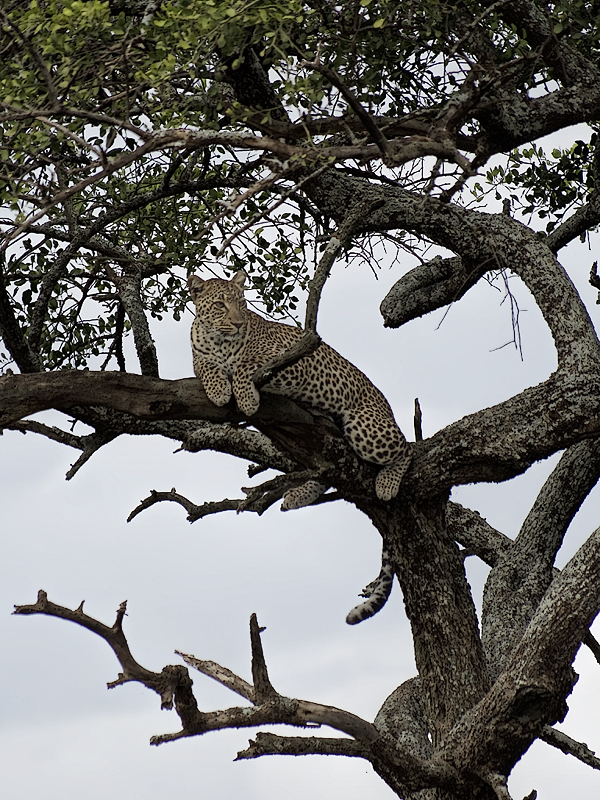
... and exposure bracketing/merging. This gave a little more definition & contrast to the sky:
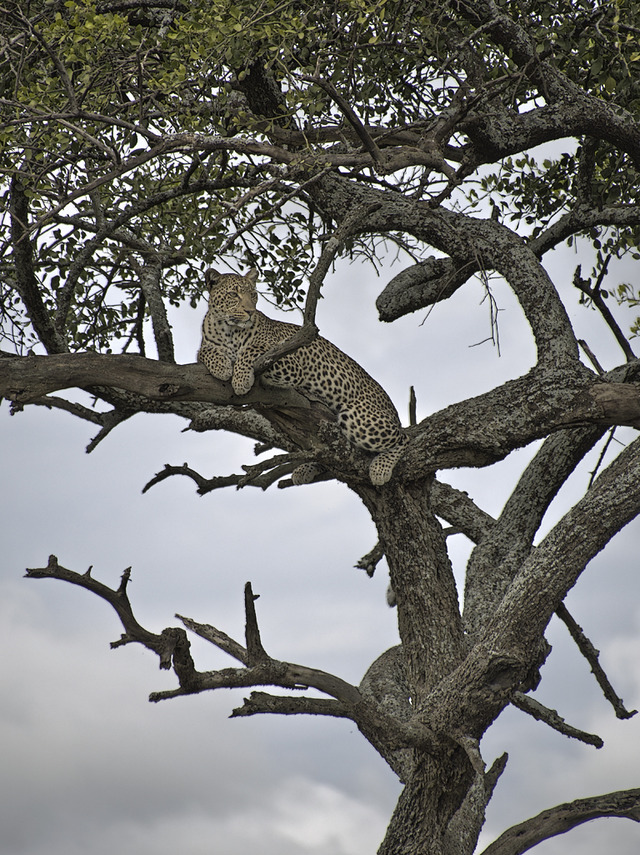 Note: above photo was bracketed and merged with HDR Expose
Note: above photo was bracketed and merged with HDR Expose
We took a lot of photos... we were excited to finally get some good looks at a leopard:

We took pictures with different framing... and are still not sure which one to hang on the wall at home...
... but some of the close-crops are especially nice to us:
We also took the bracketd shots and experimented with more artistic HDR:
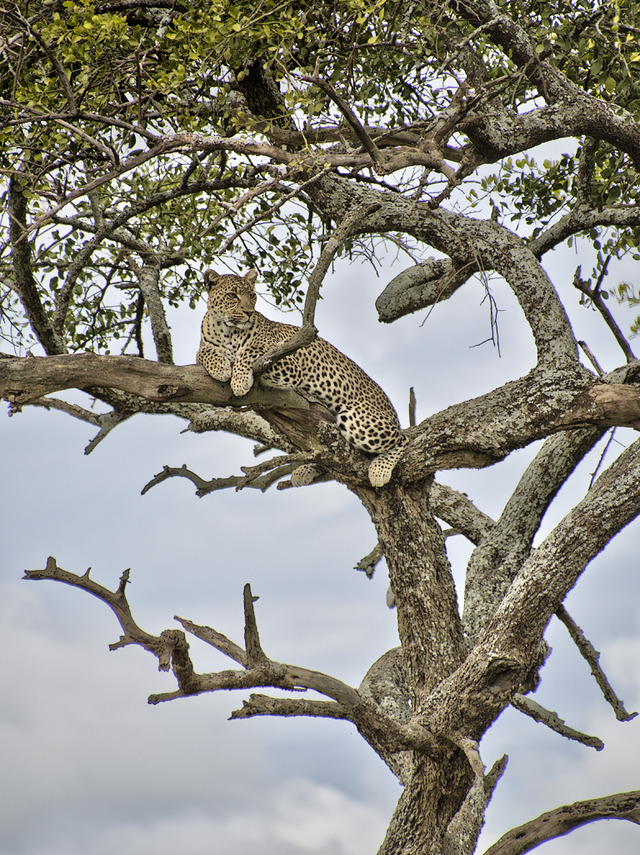 Note: above photo was bracketed and merged/tonemapped with HDR Expose
Note: above photo was bracketed and merged/tonemapped with HDR Expose
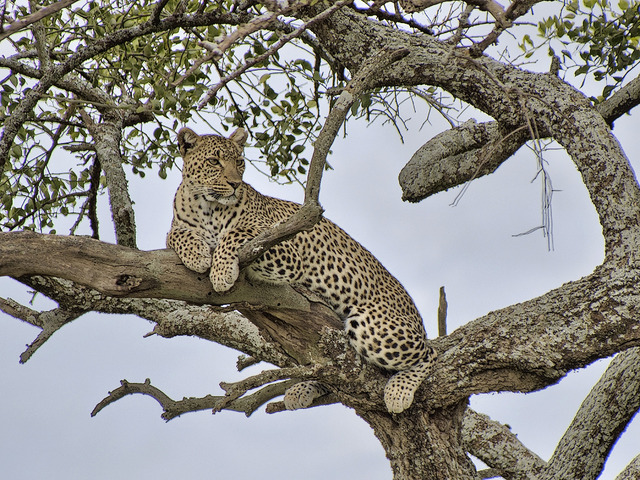 Note: above photo was bracketed and merged/tonemapped with HDR Expose
Note: above photo was bracketed and merged/tonemapped with HDR Expose
Eventually we moved on. We eventually left the hills behind and drove across the plain:
We could gauge our location because of the aircraft around the Seronera airstrip. We were a little sad, because this was our last day in Serengeti National Park, and we knew we'd be coming here the next day to leave!
We soon got another present for Christmas Day - this time, a lion lounging in a tree:
Like the leopard, Prim said this was a young one. It was very much in the shade, making shots harder:
We brightened up some of the photos to get a better look at him/her. Notice the collar?
He/she is part of the tracking program in the park.
This lion was much more sleepy than the leopard:
We also used exposure bracketing and photo-merging to try and pull more details:
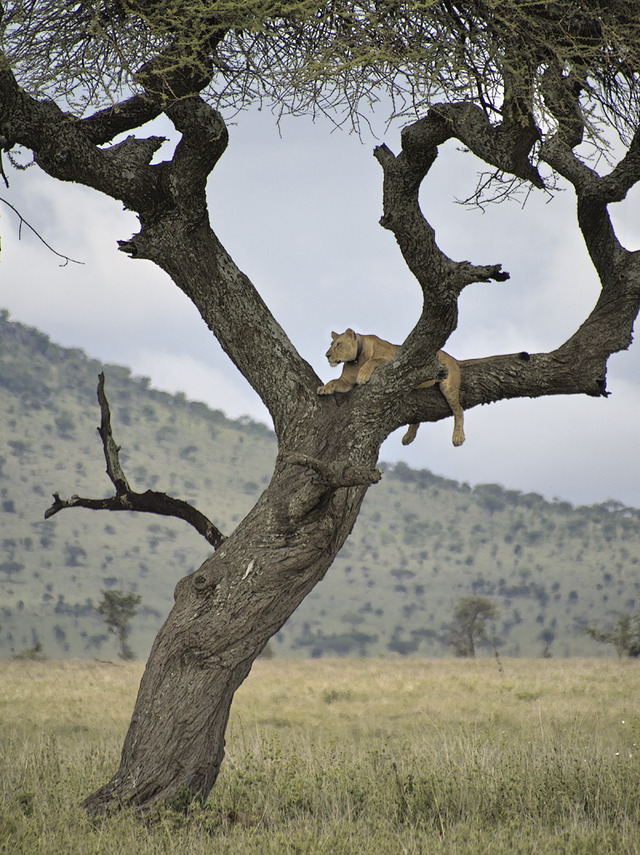 Note: above photo was bracketed and merged/tonemapped with HDR Expose
Note: above photo was bracketed and merged/tonemapped with HDR Expose
One of the drawbacks of a popular find (lion in a tree) was that there was soon a traffic jam of jeeps, all with people watching the lion. You certainly lose your sense of being "in the wild" with so many vehicles around:
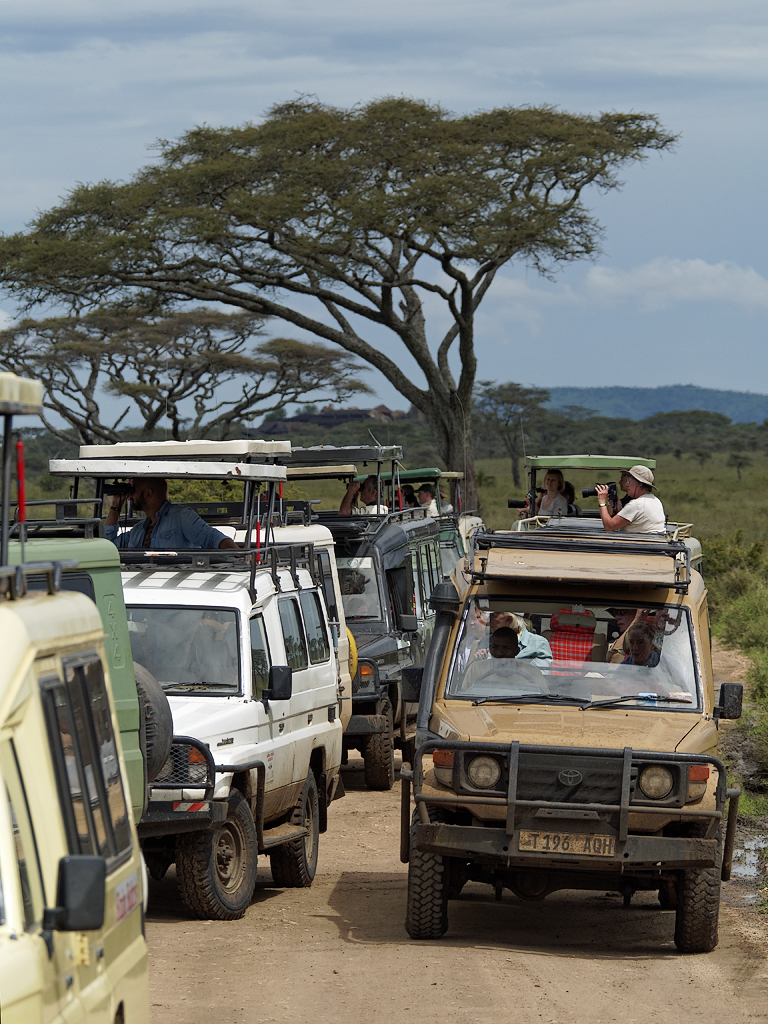
Ironically, Prim said that since this was the low-season (December), this was NOT a big pack of jeeps. He said that in the busy season, the pile-ups get much bigger. Many cars get aggressive in trying to position their riders for the best view, and don't share/move after a while. The tension can cause conflicts at times.
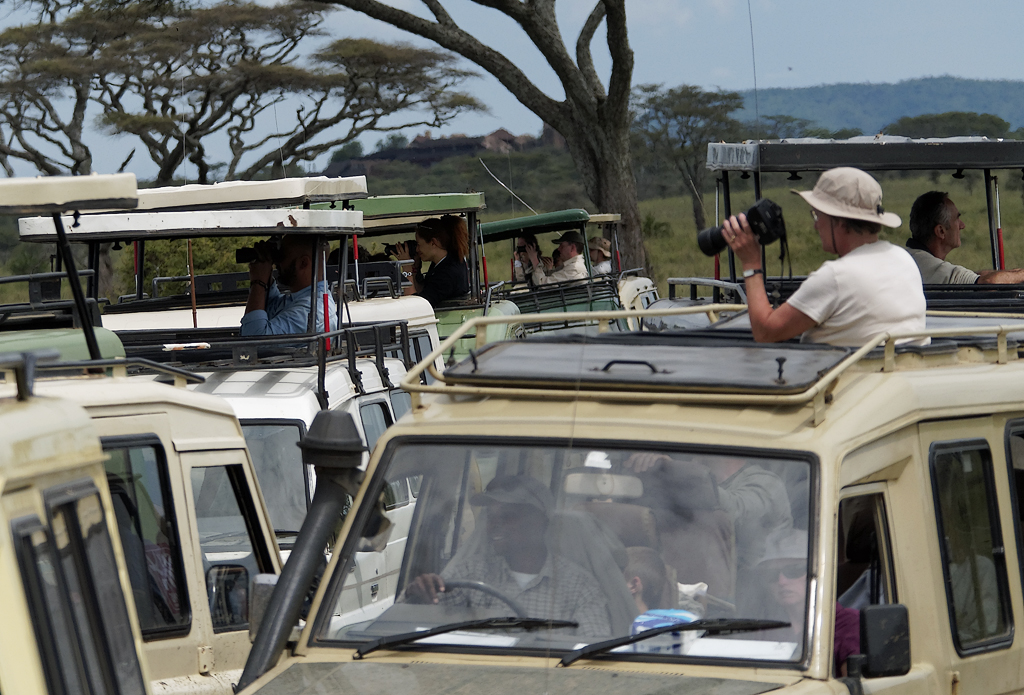
After a little while, we moved to a different position to give a newly-arriving tour our "spot".
The new angle could have been great... IF the lion would have posed differenty!
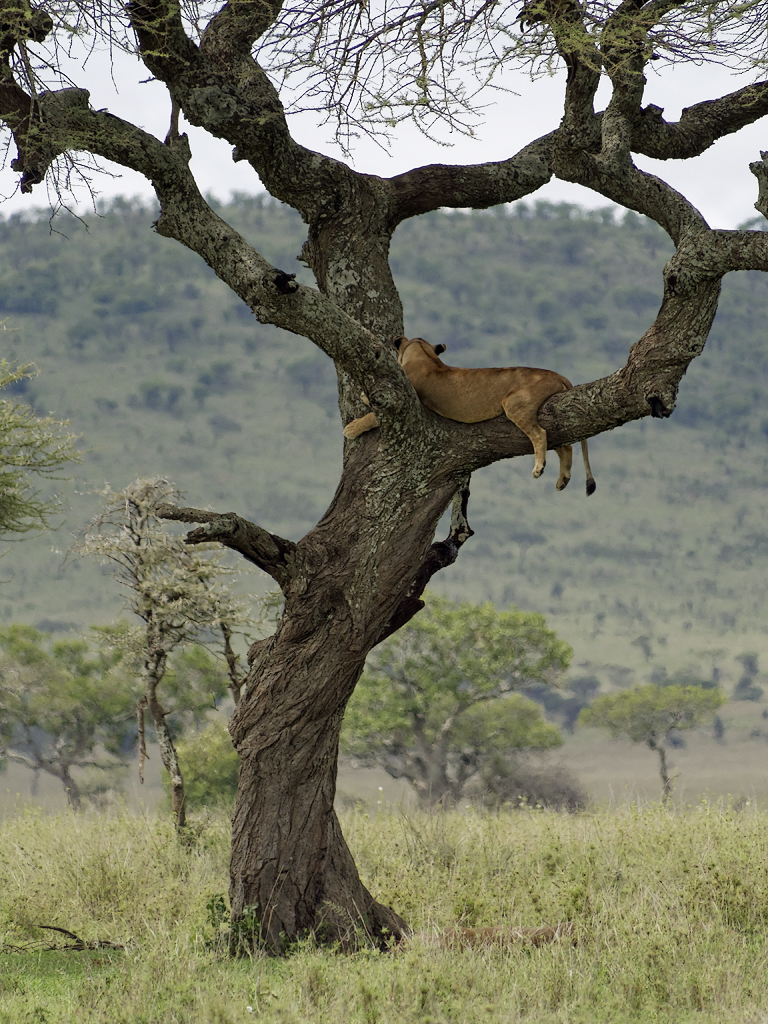
So we just took some final photos of his backside and moved on.
Next up - we had seen vultures before, but finally got one that was closer to the road:
Now we could see much more detail on his face and feathers:
Prim drove us back towards the edge of some hills to try and find our next animals:
On the less-traveled roads, we didn't see as much big game, but did spot many more birds.
This is a lilac-breasted roller:
We did get some reminders the of big hunters, though. Probably last night's kill:
We again saw some lovebirds, foraging near small wildflowers:
Young impala were keeping low, and staying in the shade:
One female warthog was out feeding:
A pair of young baboons were playing in a tree:
We drove by a water hole, with hippos hanging out in the far end.
You might have seen this in the photo above, but here is a closer look. A dead hippo was floating in the water in a nearer section of the pond (right side). Prim could not be sure of the cause of death, but most likely from another hippo:
In another section of the pond, we saw crocodiles sunning themselves on the bank. In the background, you can see the road going past the water on the far side:
They were completely inactive, as one would expect approaching midday:
We found another impala close enough to the road for a quick photo:
After that impala, we kept stopping for more and more birds. This is an African gray hornbill:
Right away we spotted more bird species - this is a pair of red-billed hornbills:
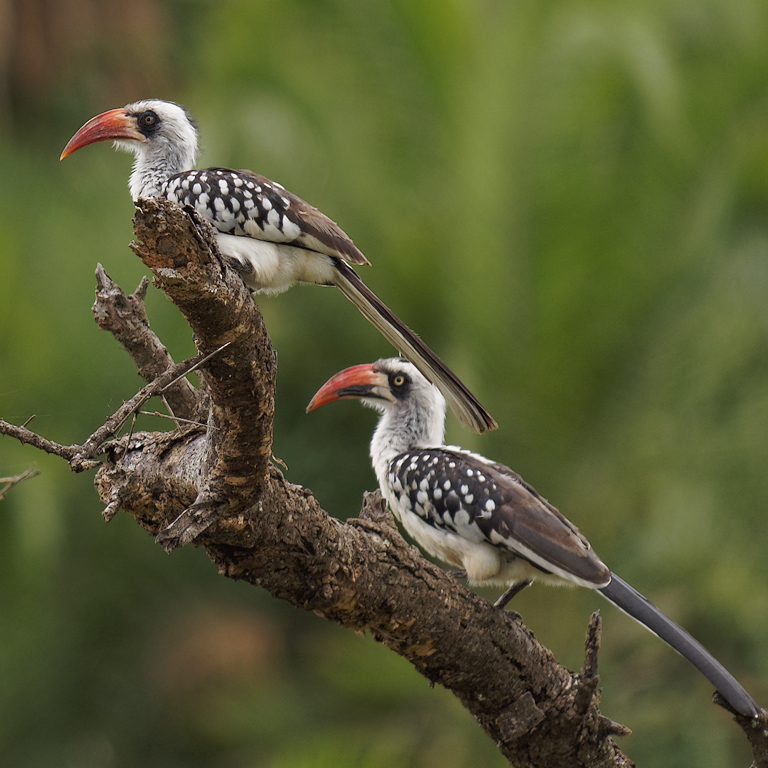
It was starting to rain lightly, but they stayed put for some nice photos!
Prim's skills proved themselves again - he found a pearl spotted owlet. These are rarely seen!
It is an "owlet" because it is so small! (You can see the rain coming down harder here too.):
A close crop, although a bit blurry:
Amazingly, the owlet perched on the same dead tree as a red-billed hornbill, for a nice photo:
Despite the light rain, we saw yet another kind of bird - this time, a woodland kingfisher:
On the ground, a gray woodpecker was working near an old log:
Finally, Prim pointed out a white-headed buffalo weaver:
The last bird of the morning was the red-billed oxpecker. They groom larger animals for food:
This impala was getting the royal treatment - two servicing him at the same time:
Here is a shot of the oxpecker in action:
This close crop is not very well defined - and the yellow eyes make the oxpecker look crazy!
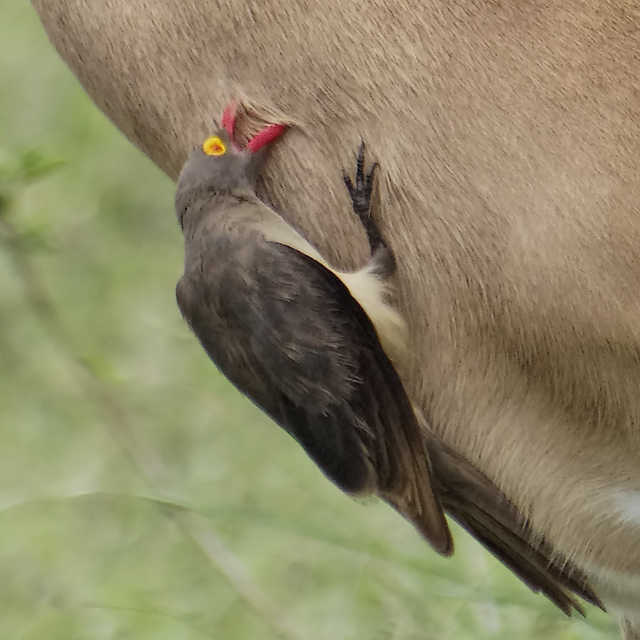
Lastly, just an HDR image of one of the water holes along the game drive this morning:
That was it for the morning game drive - we felt like we got great Christmas presents from the Serengeti!
And finally... this was our honeymoon. For the wedding, instead of registering for physical gifts (e.g., china, silverware, etc.), we registered different parts of this Tanzanian safari. For this blog post, we wish to heartfully thank:
- Ronald M, for the overnights in the game-drive camp. THANK YOU!
- Amie and Kevin H, for the overnights in the game-drive camp. THANK YOU!
- Erin and Kevin O, for one of these game drives. THANK YOU!
- Seery M, for one of these game drives. THANK YOU!
- Greta M, for one of these game drives. THANK YOU!
- Steve A and Claire P, for one of these game drives. THANK YOU!
 Herr J ...
Herr J ...  2 Comments
2 Comments  Travel tagged
Travel tagged  Serengeti National Park,
Serengeti National Park,  crocodile,
crocodile,  game drive,
game drive,  giraffe,
giraffe,  gray woodpecker,
gray woodpecker,  hyena,
hyena,  impala,
impala,  leopard,
leopard,  lion,
lion,  owlet,
owlet,  warthog,
warthog,  woodland kingfisher
woodland kingfisher  24 References ...
24 References ...  Print Article
Print Article  Email Article
Email Article 



